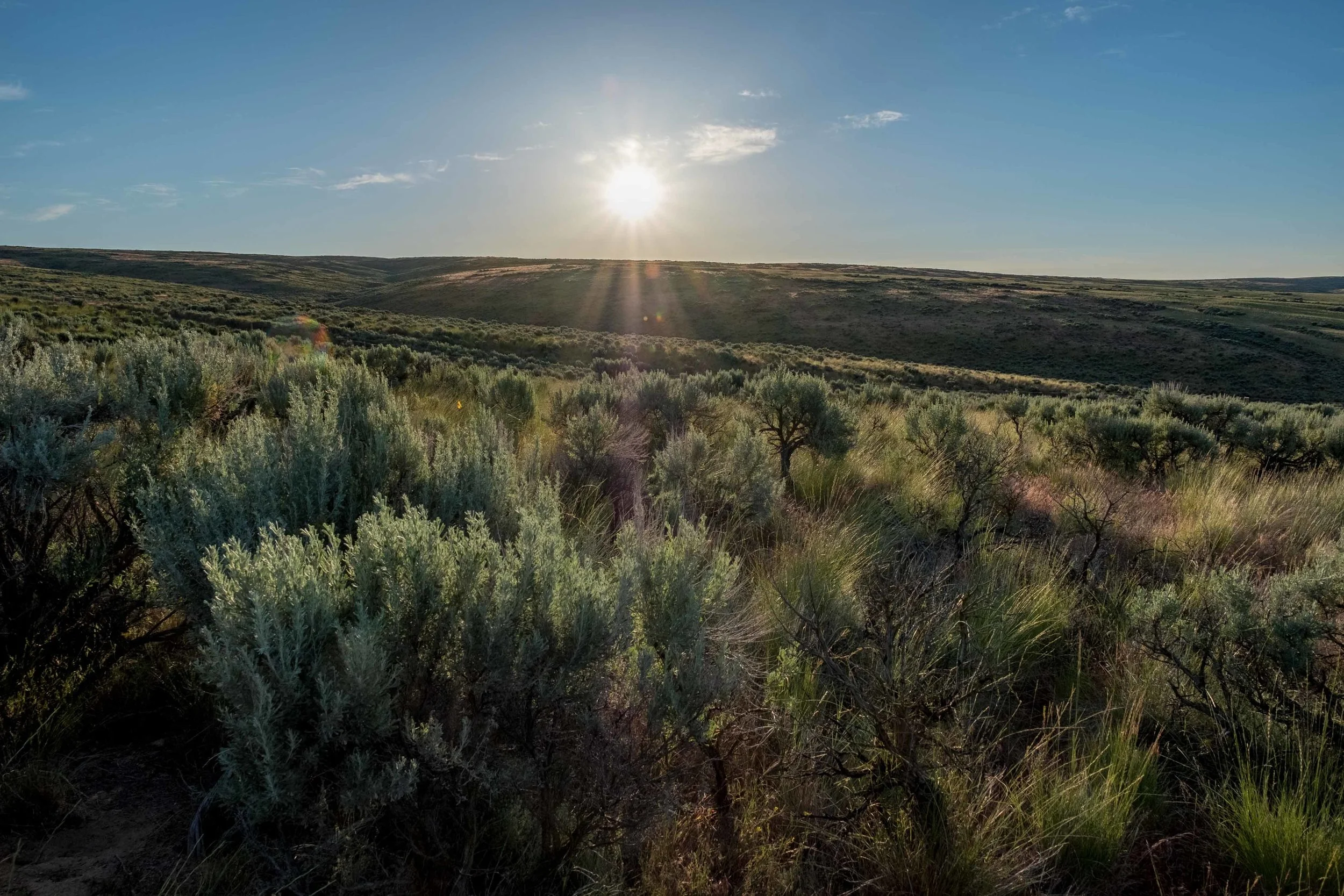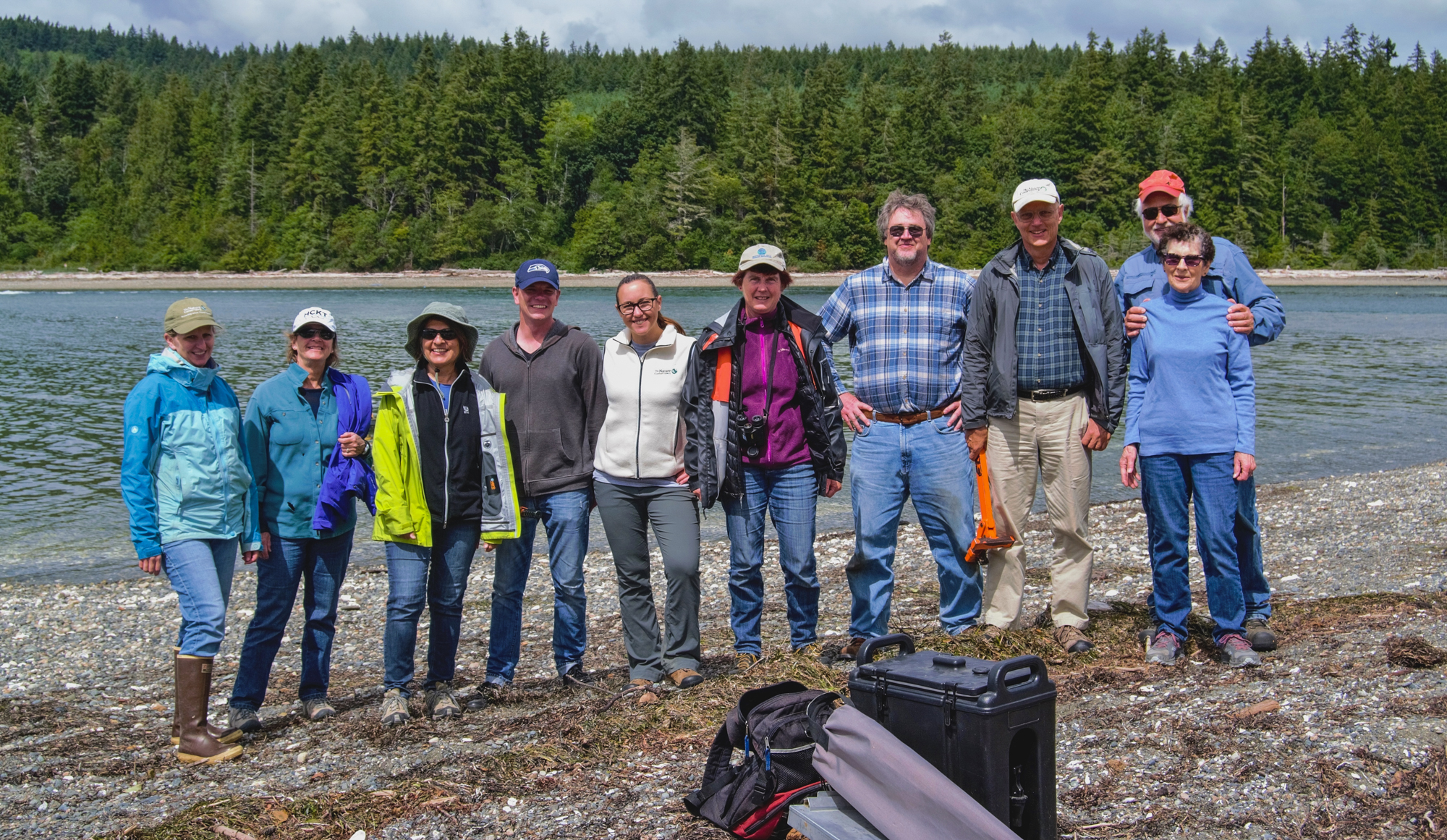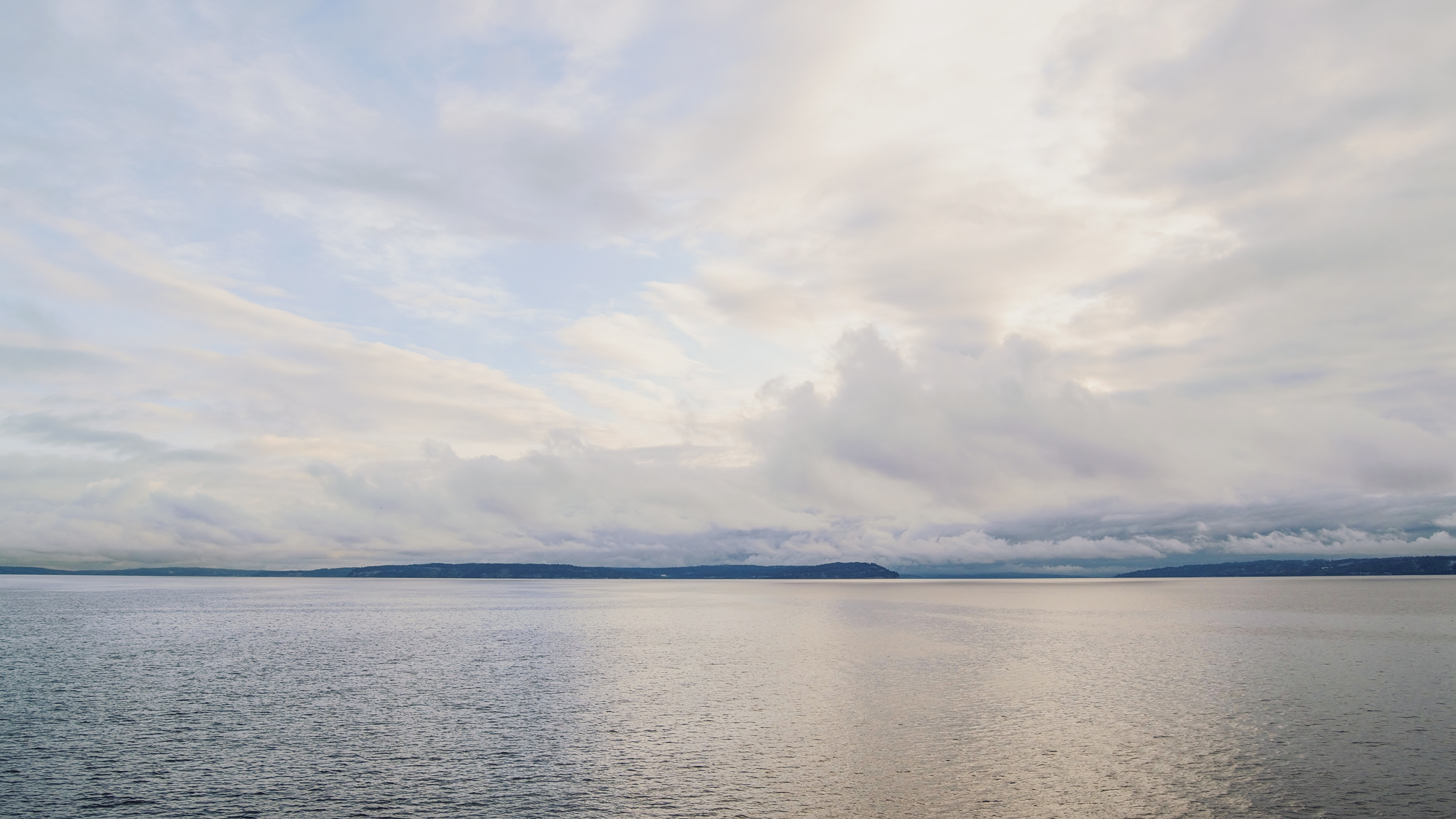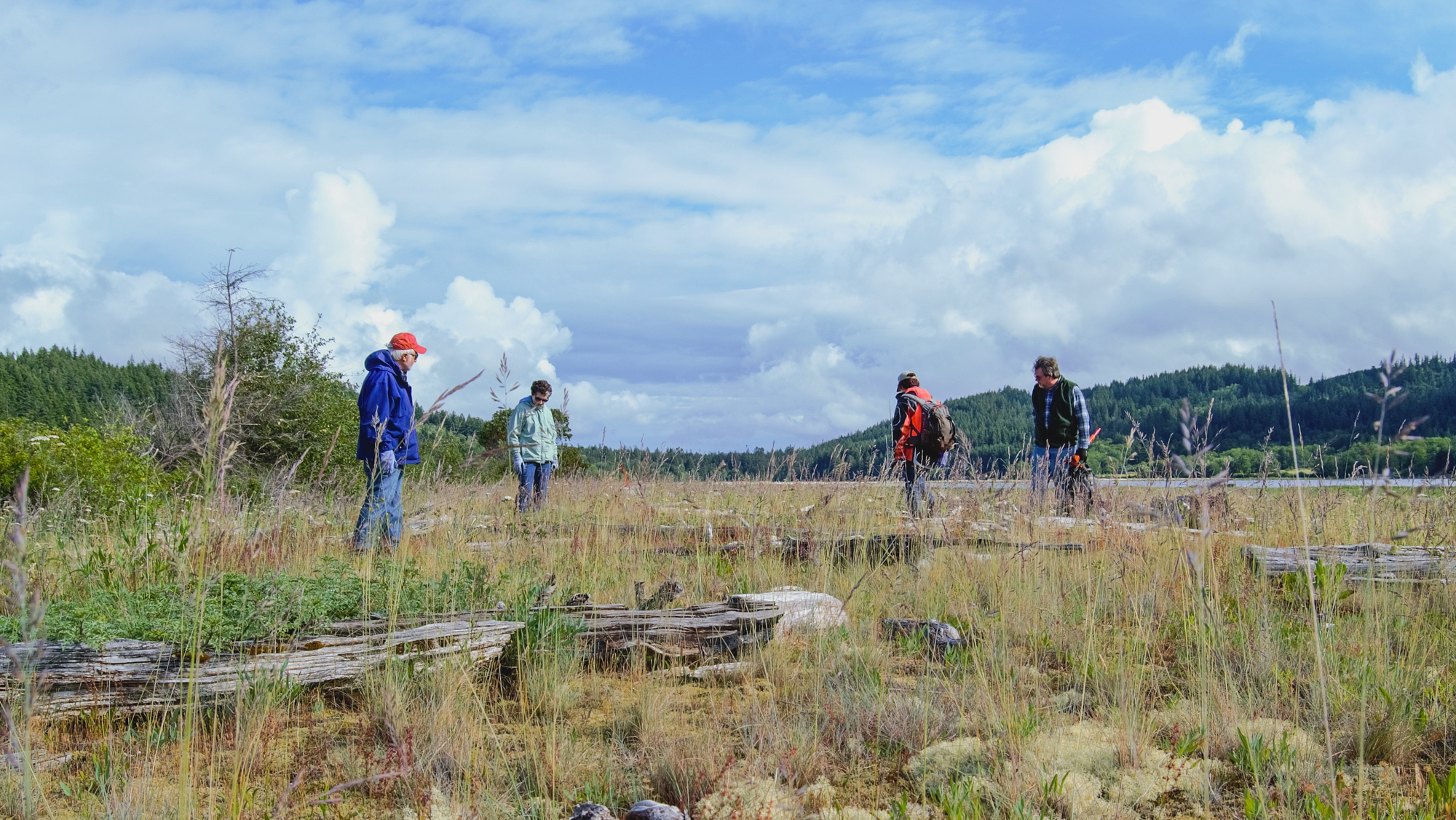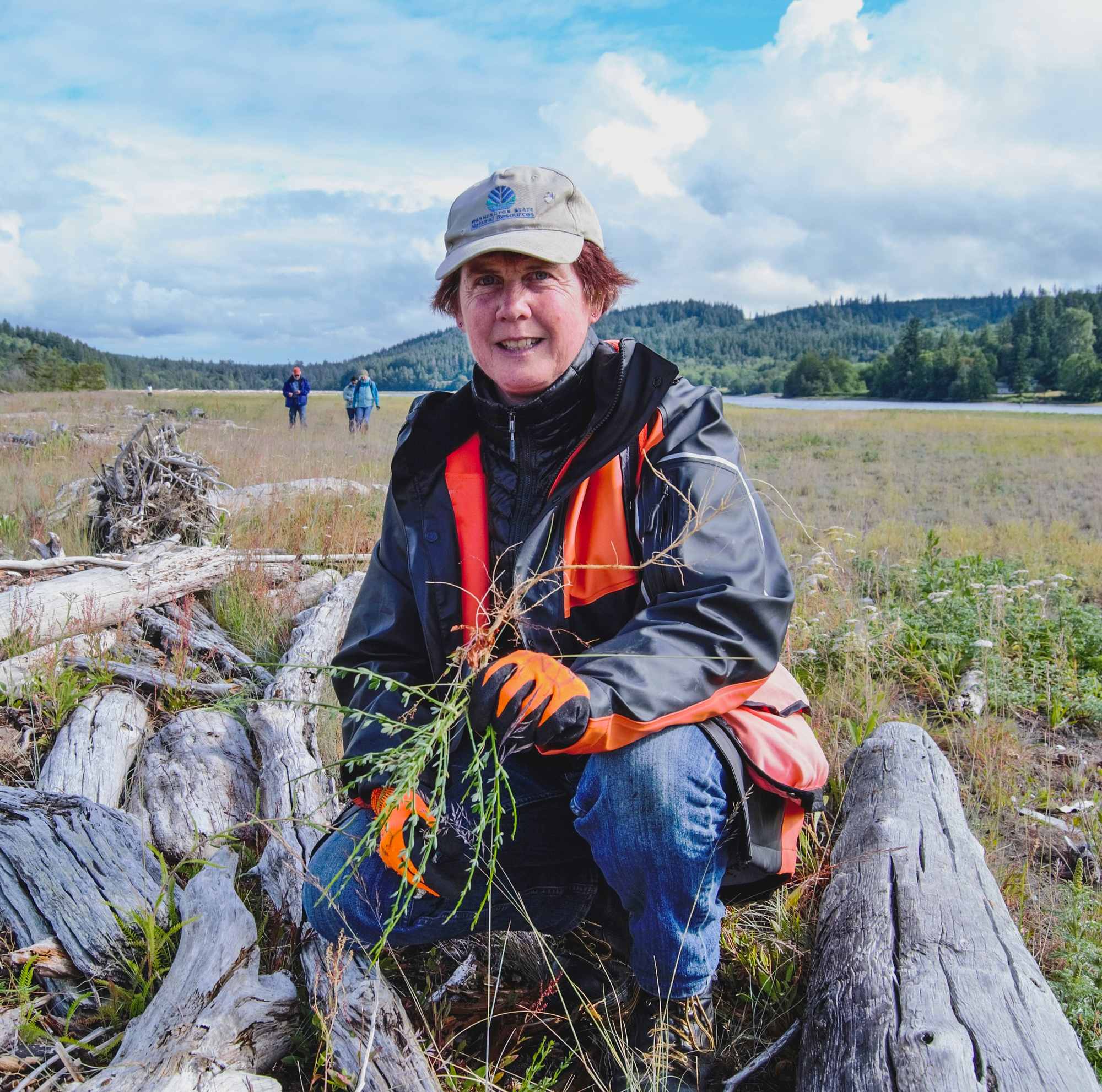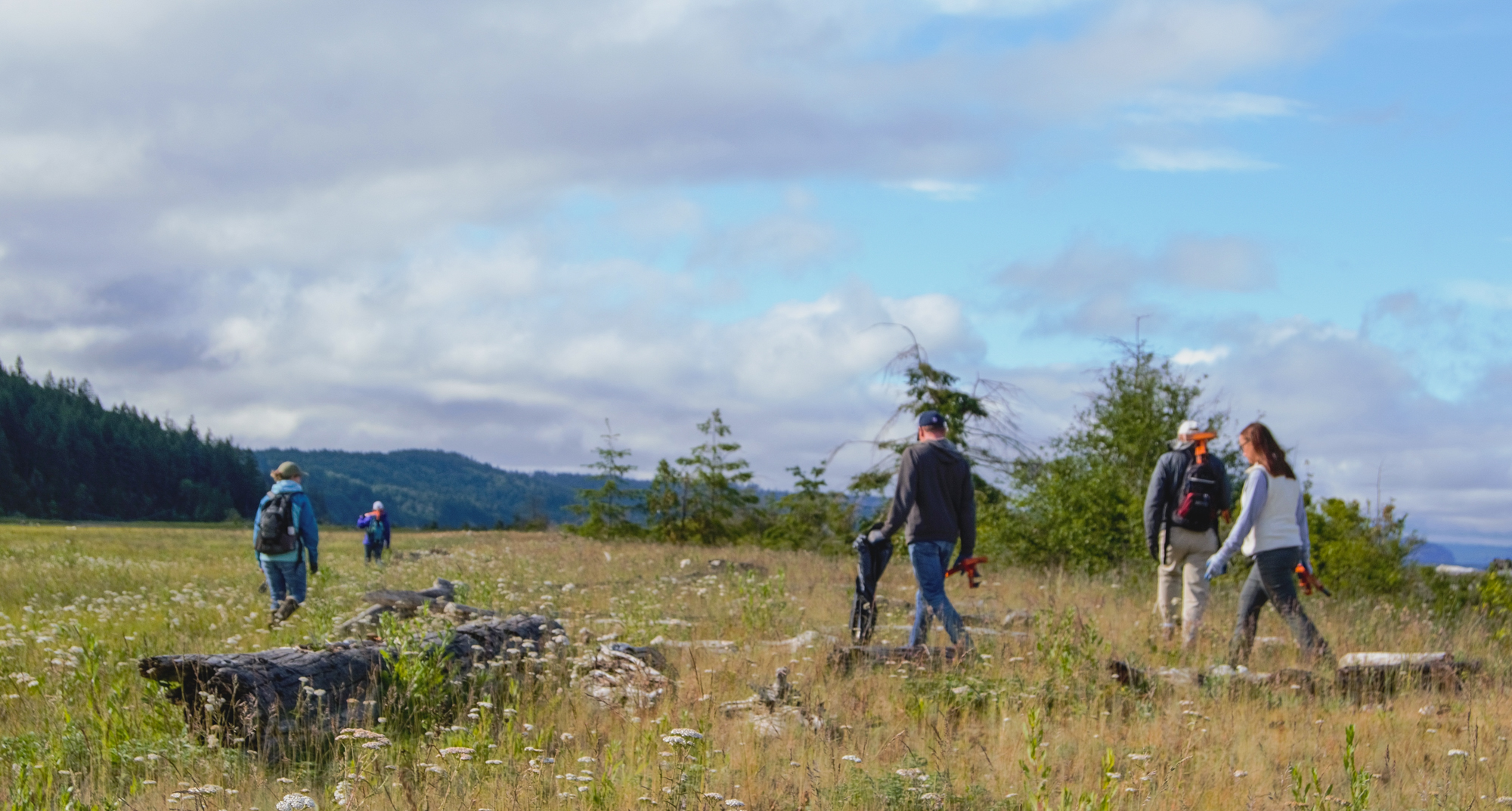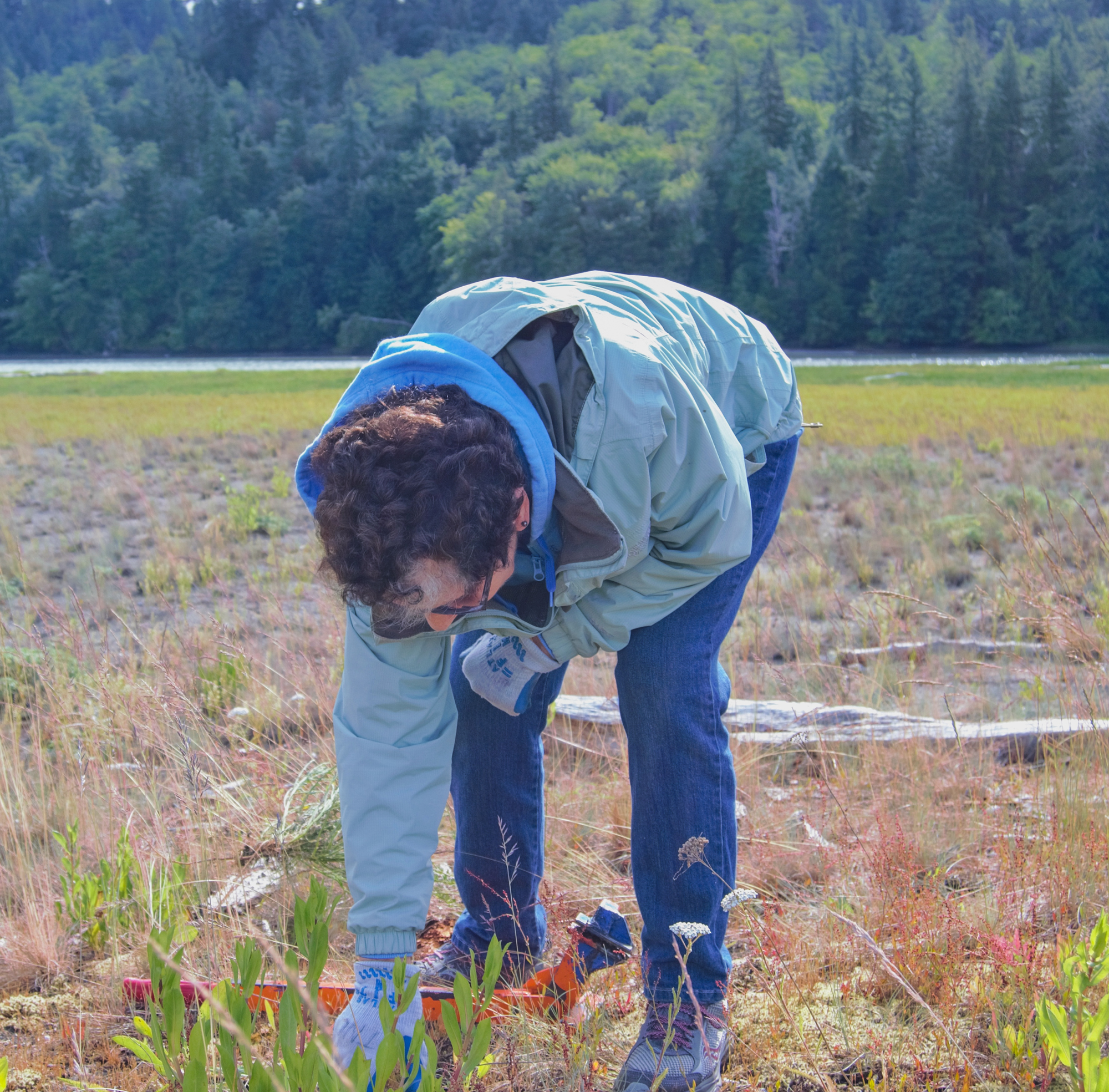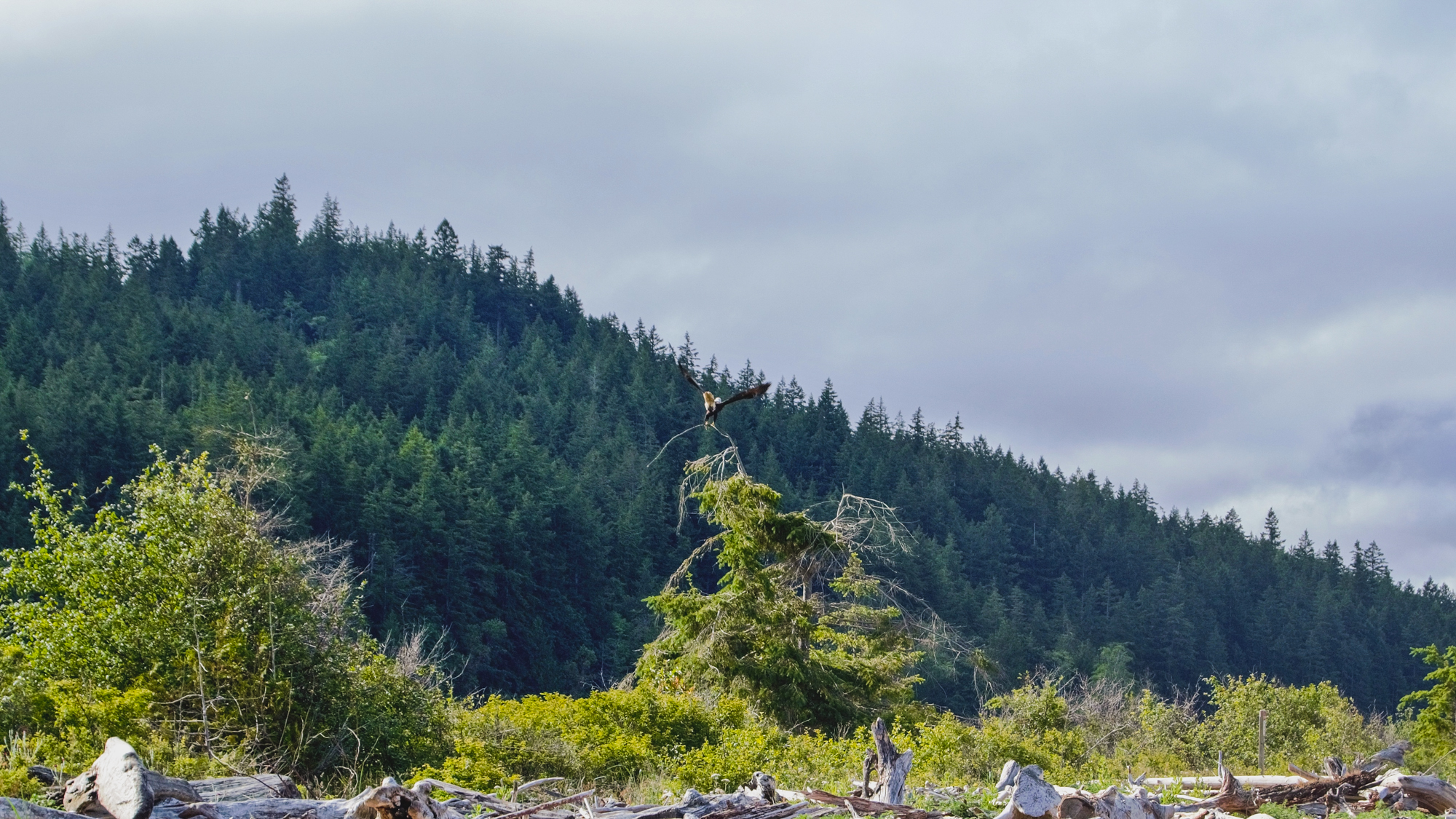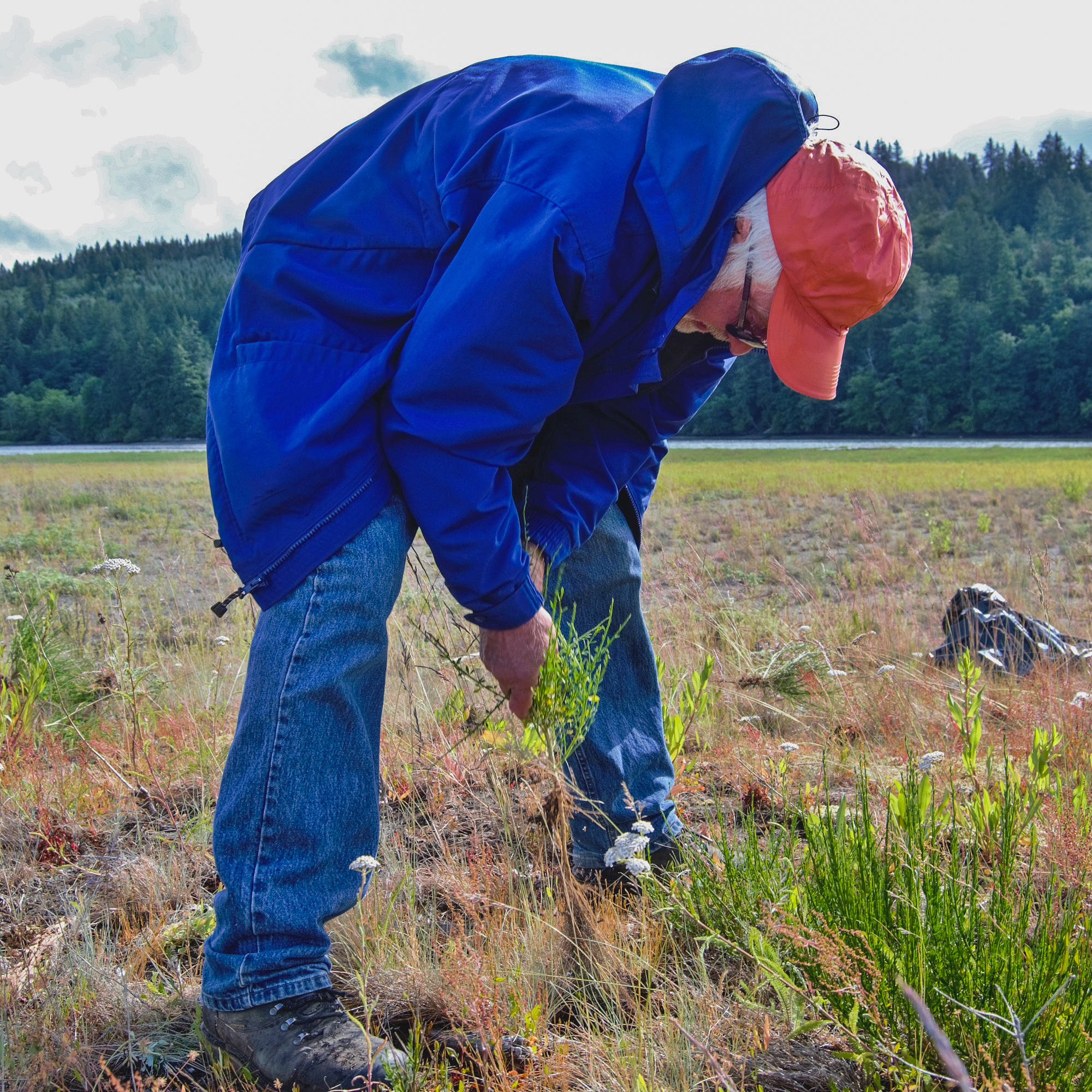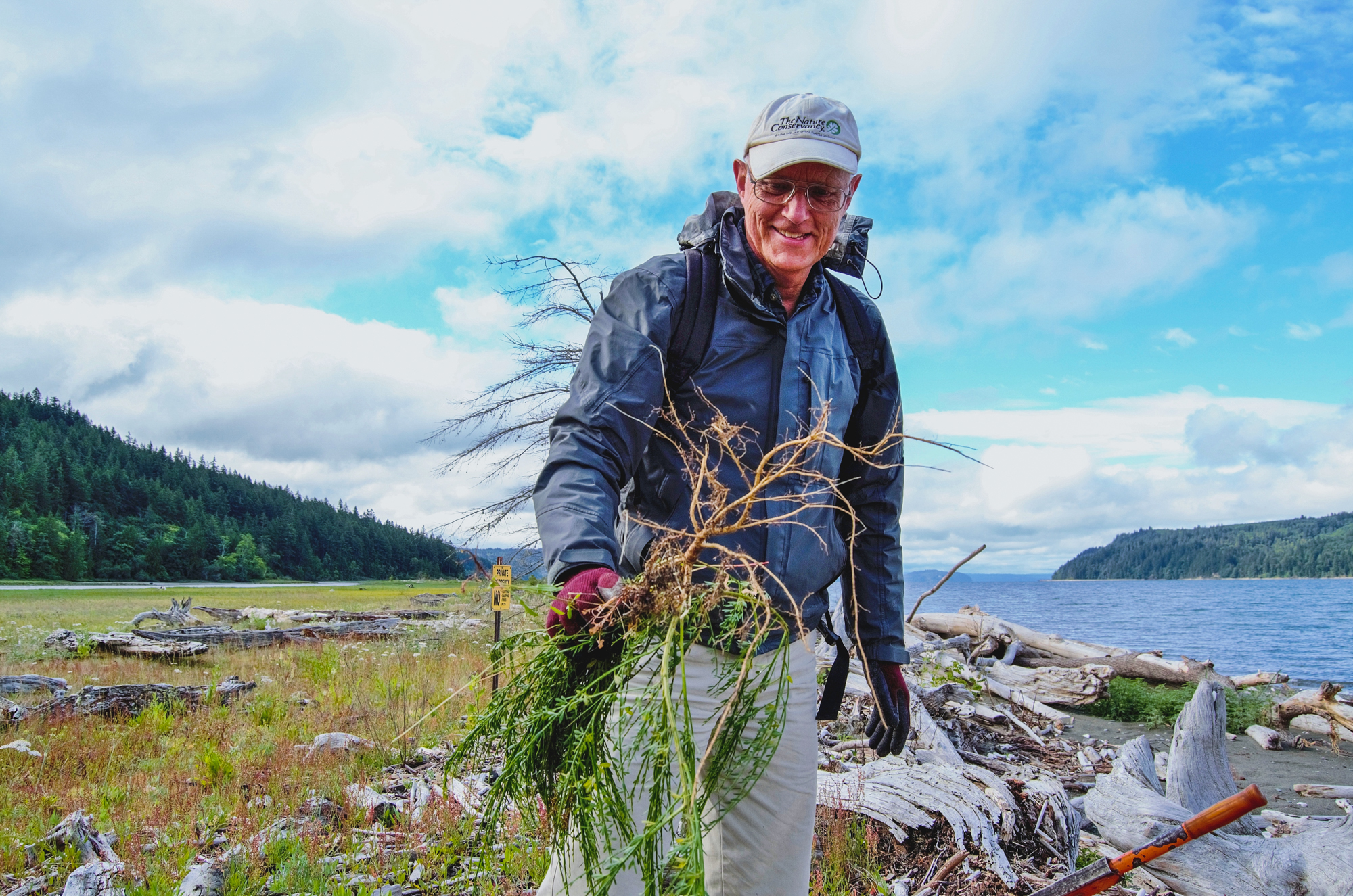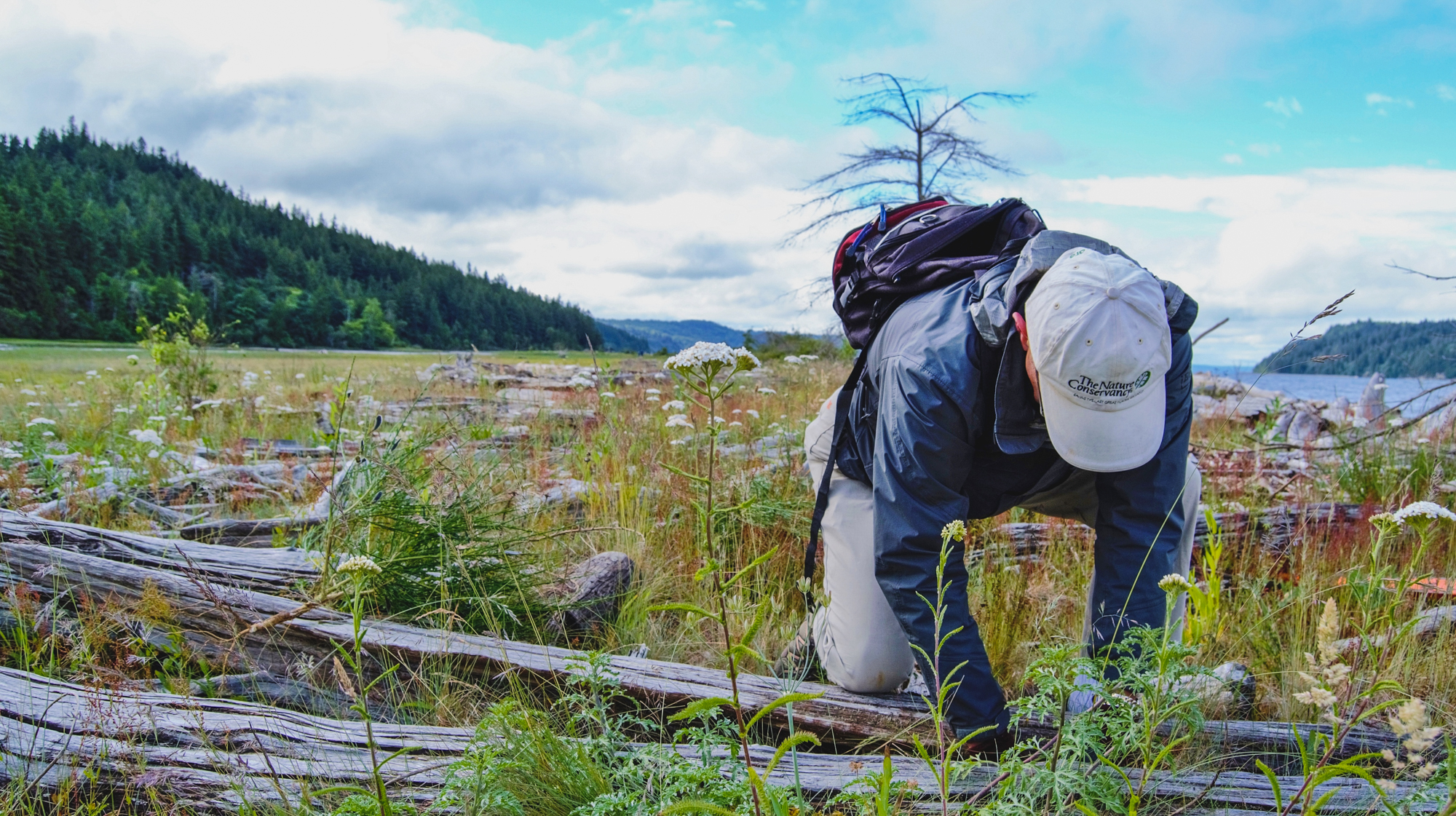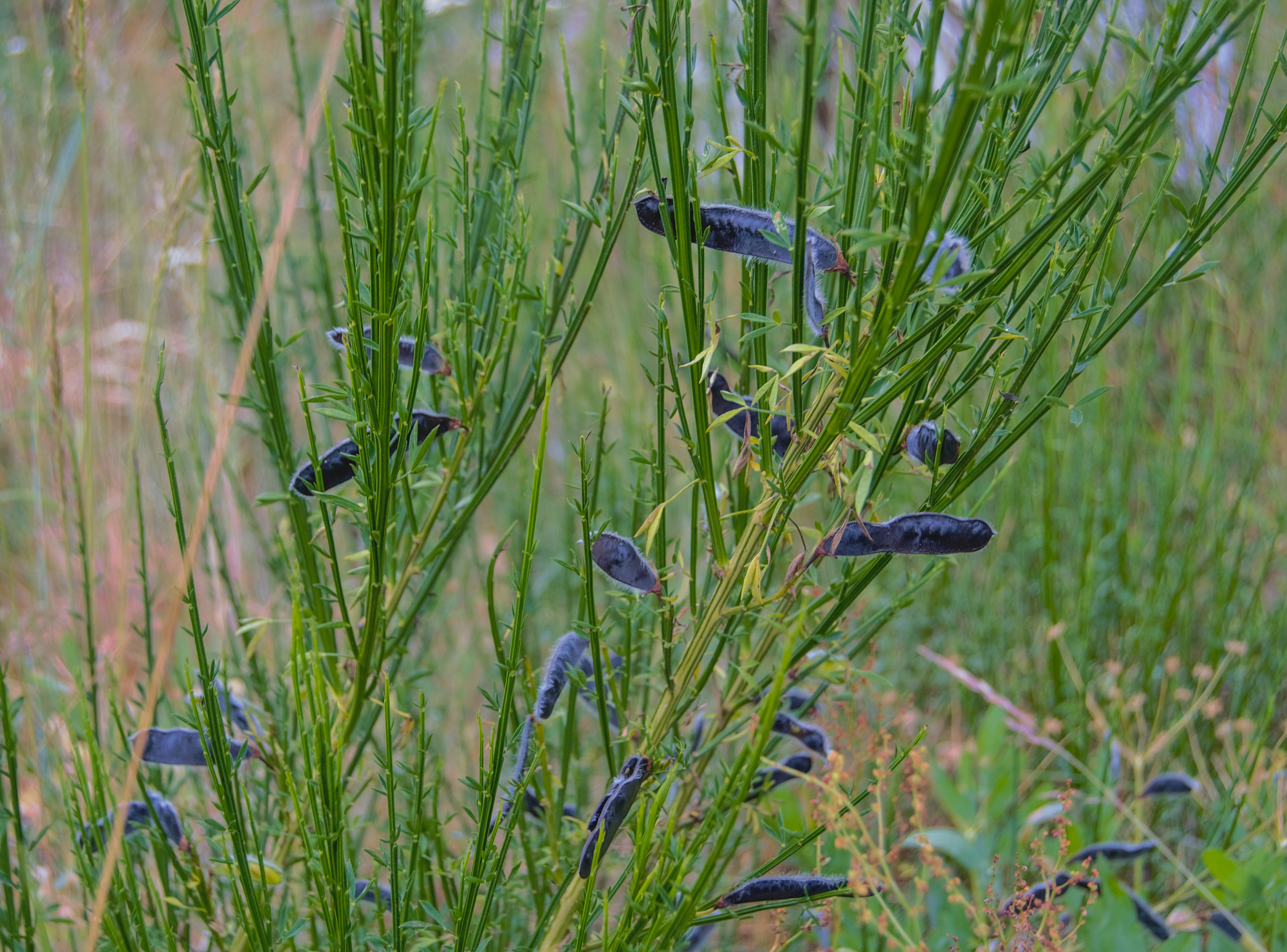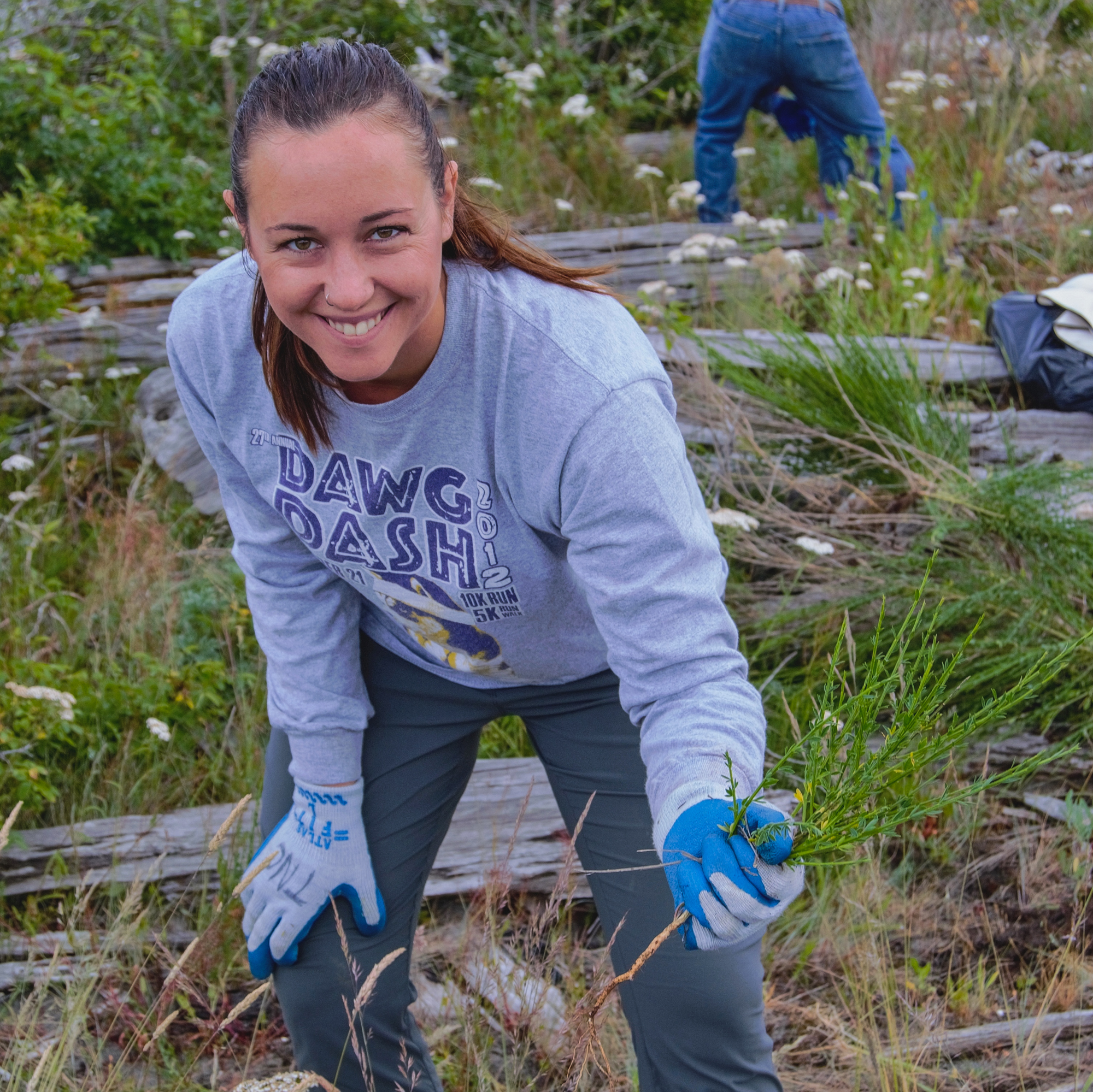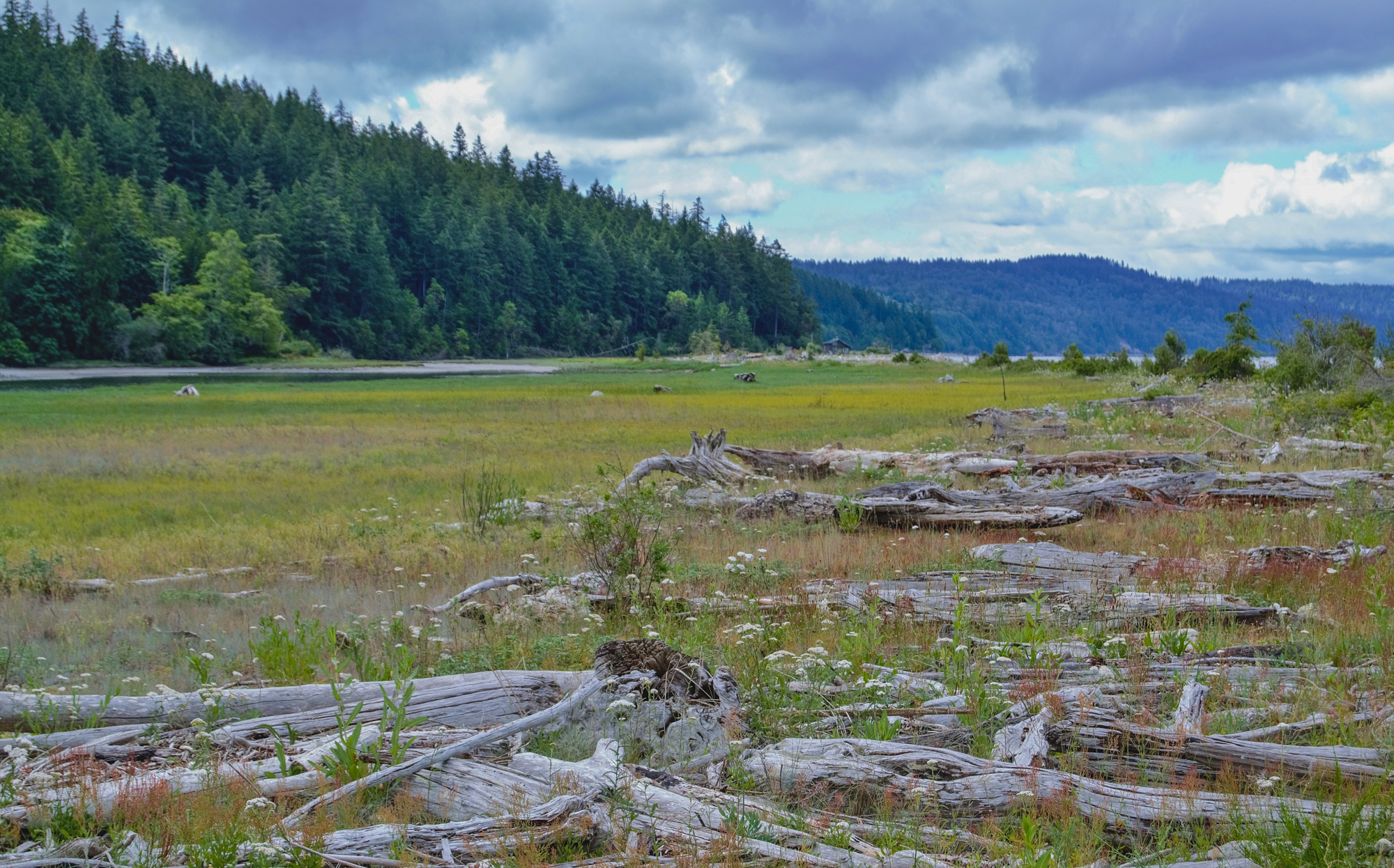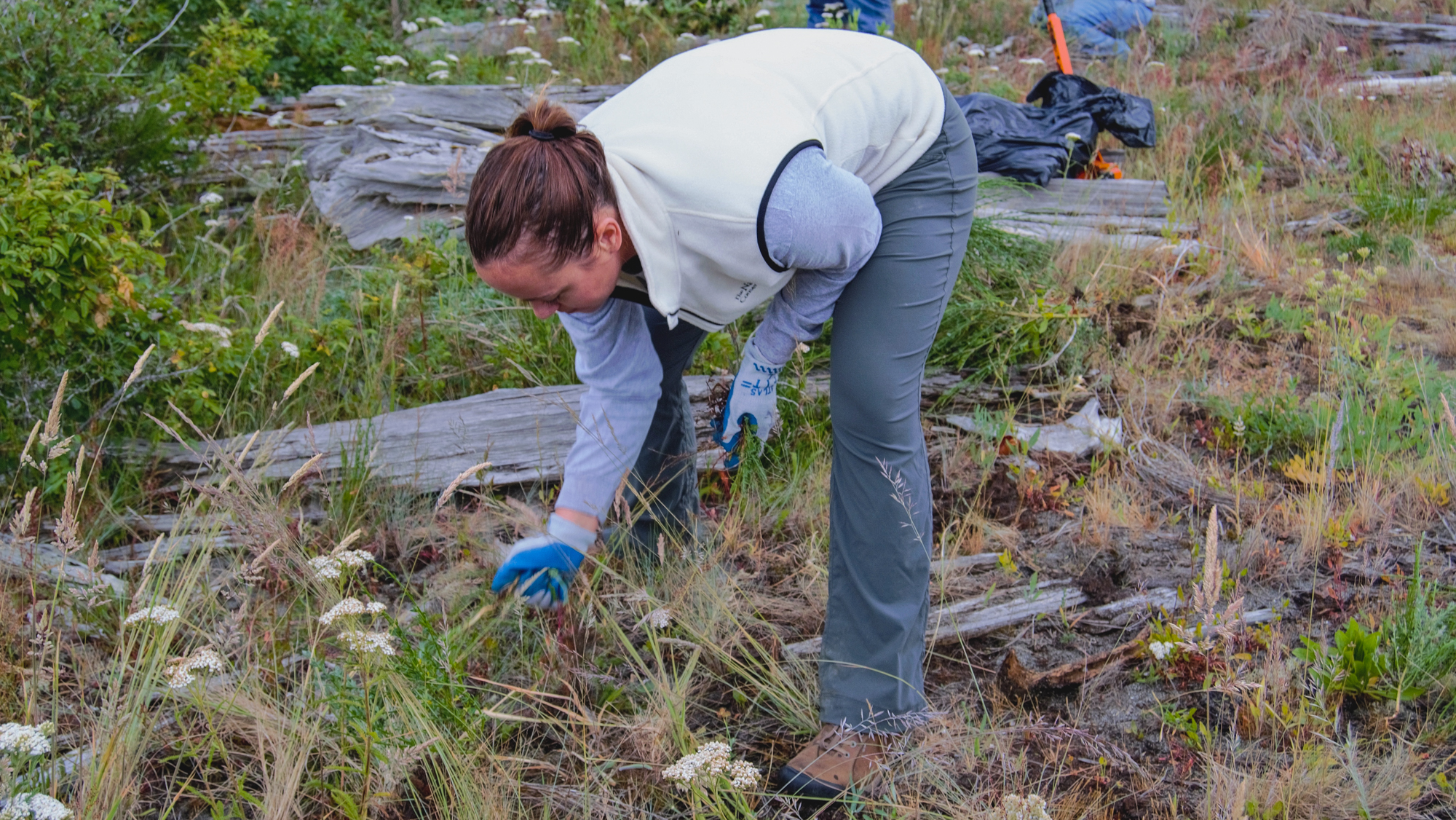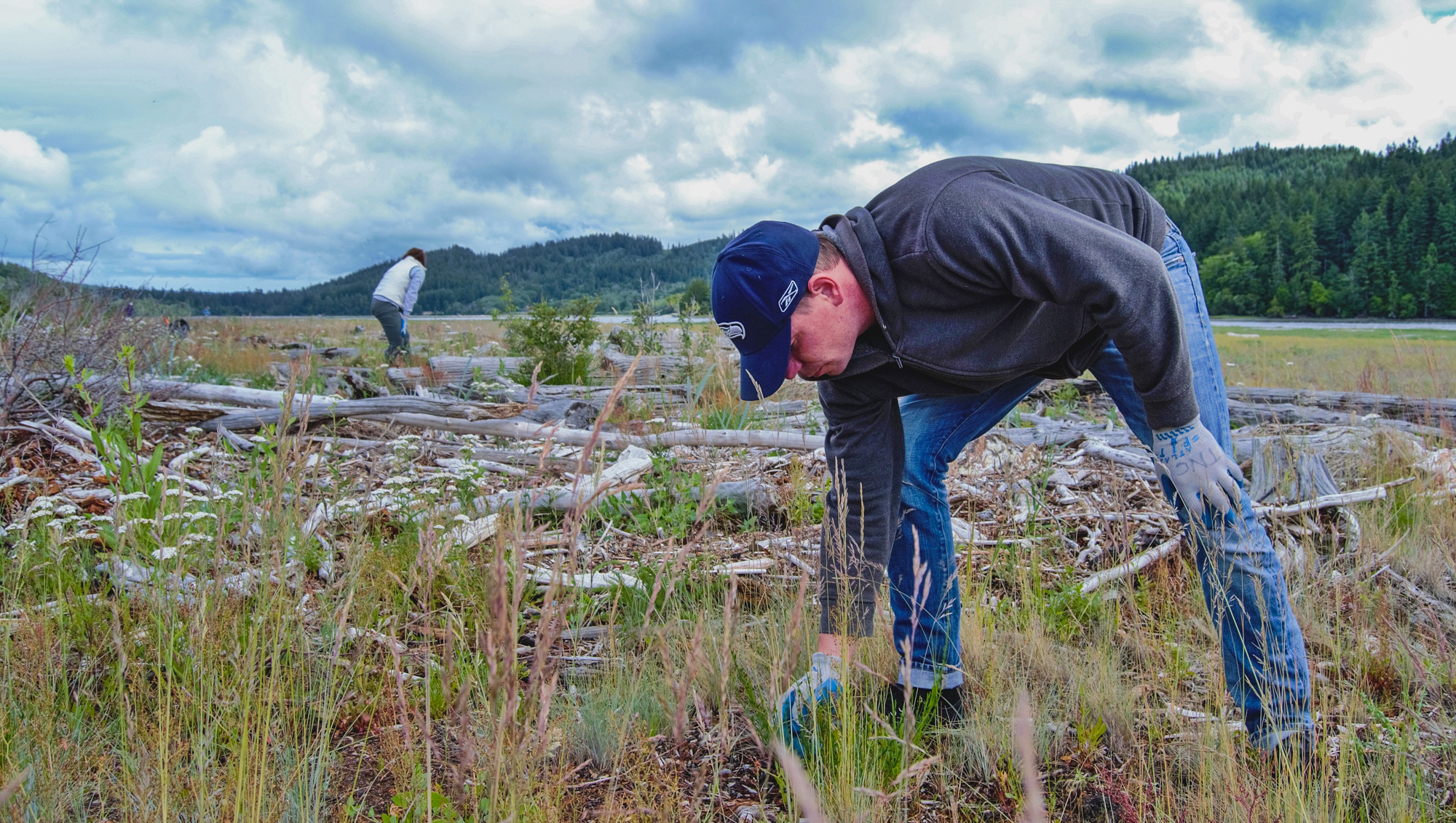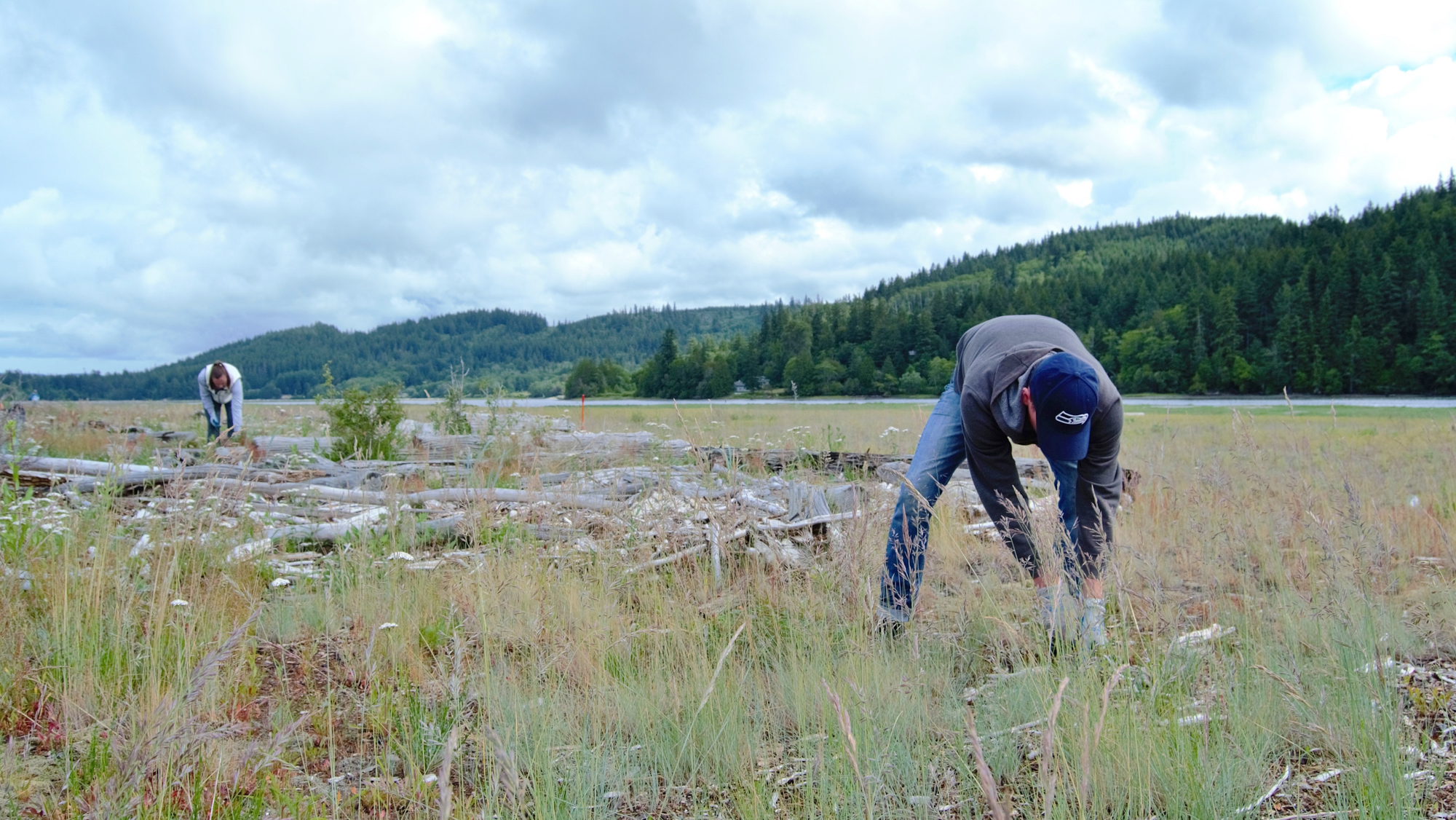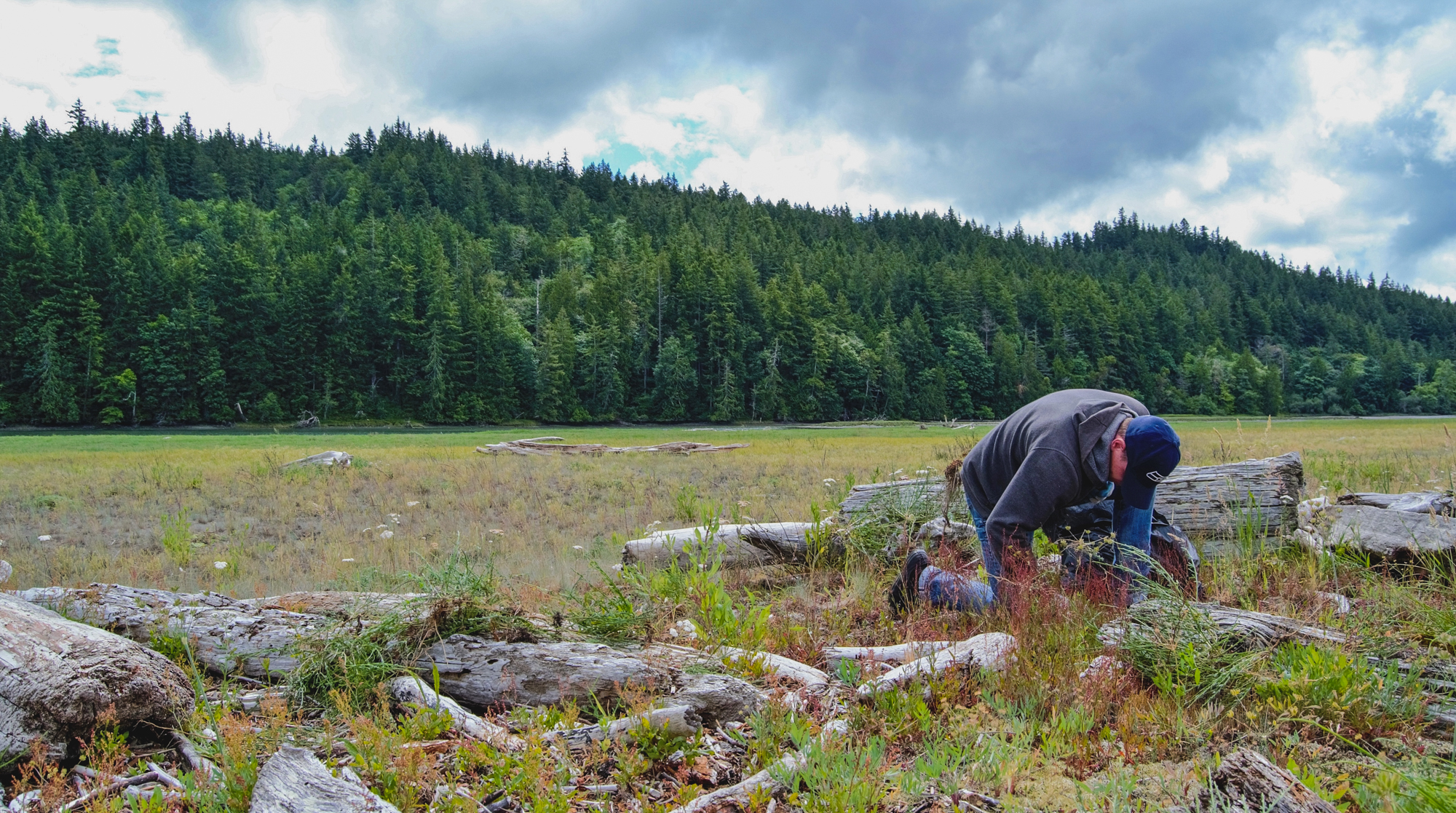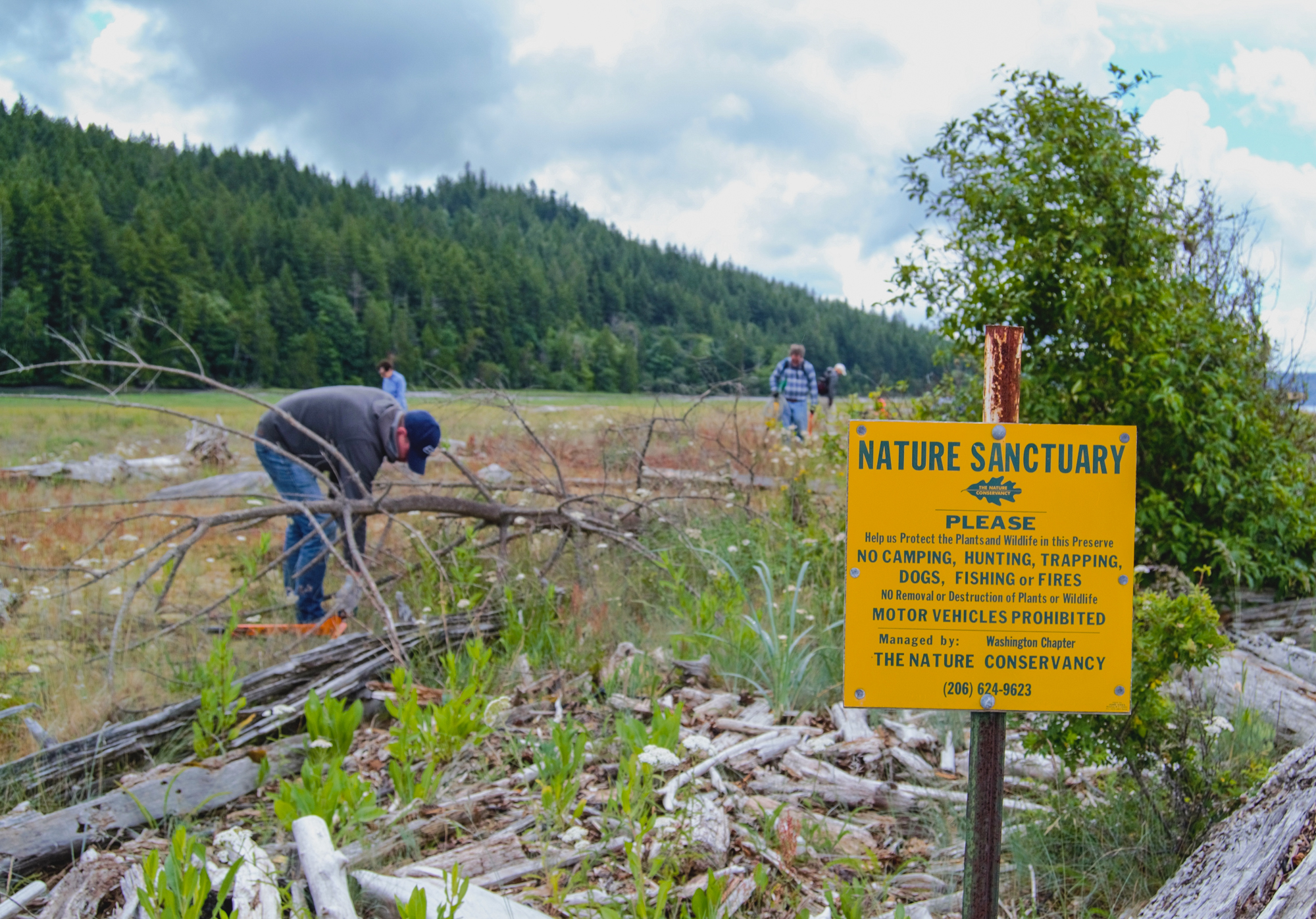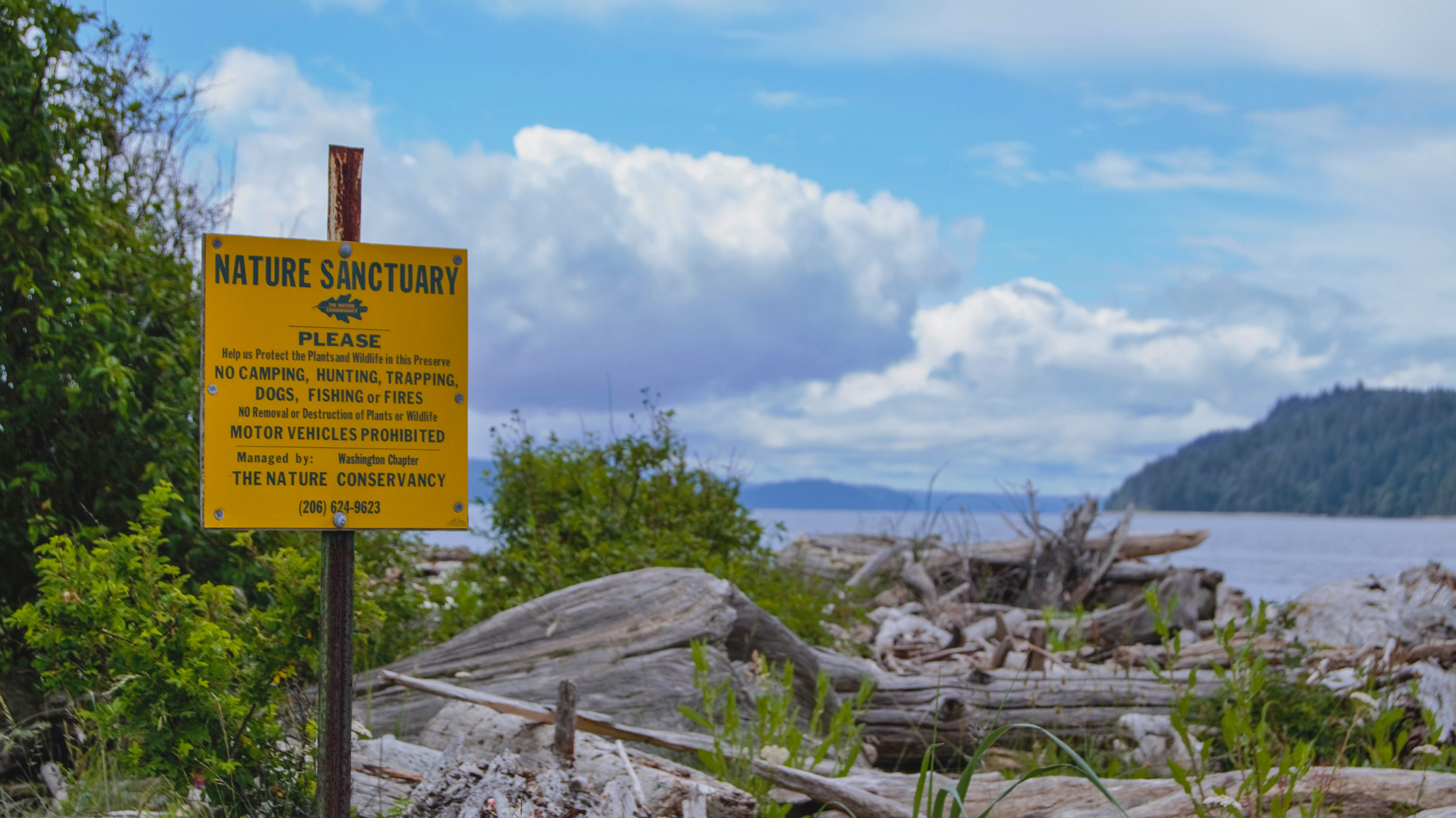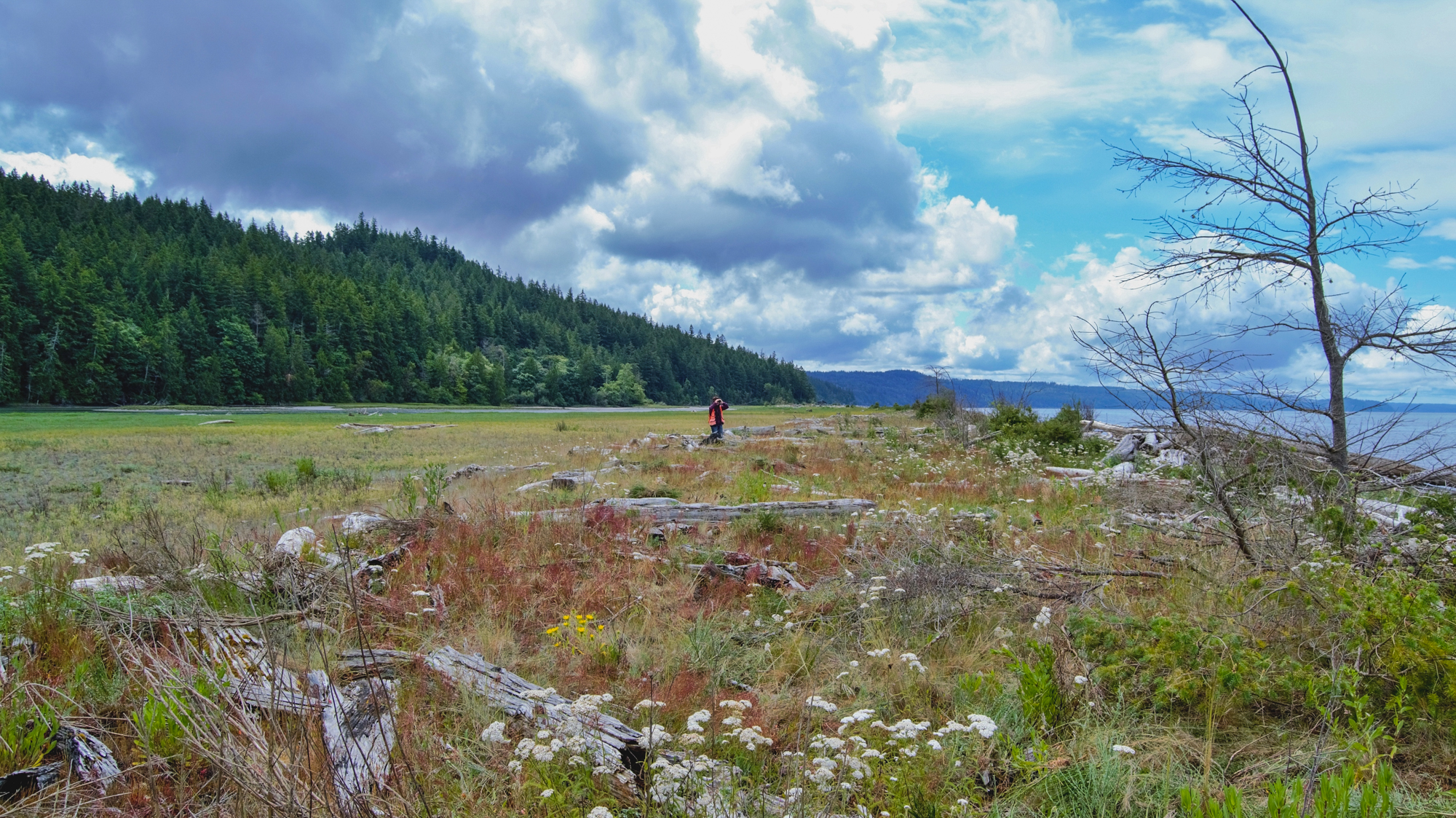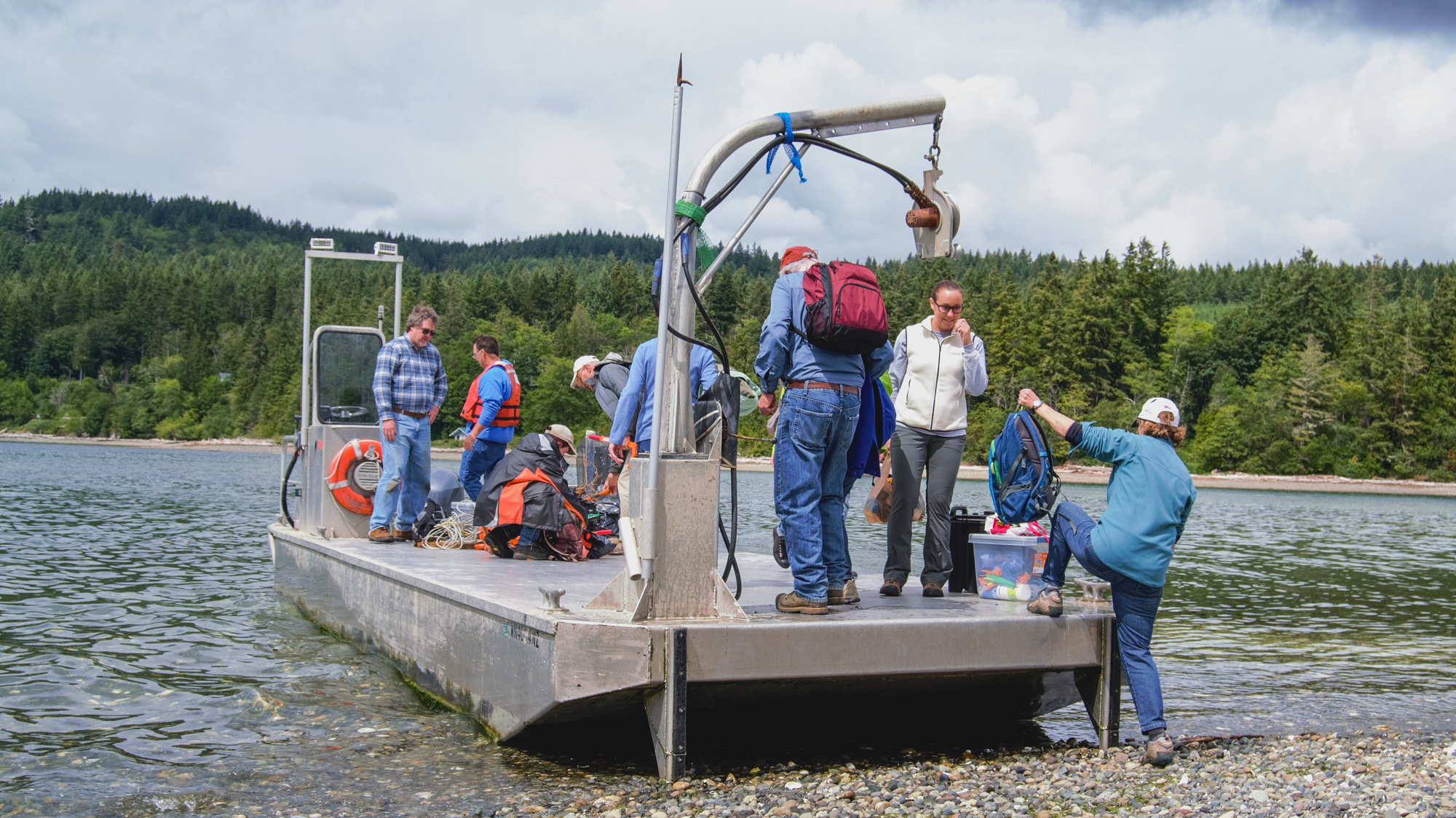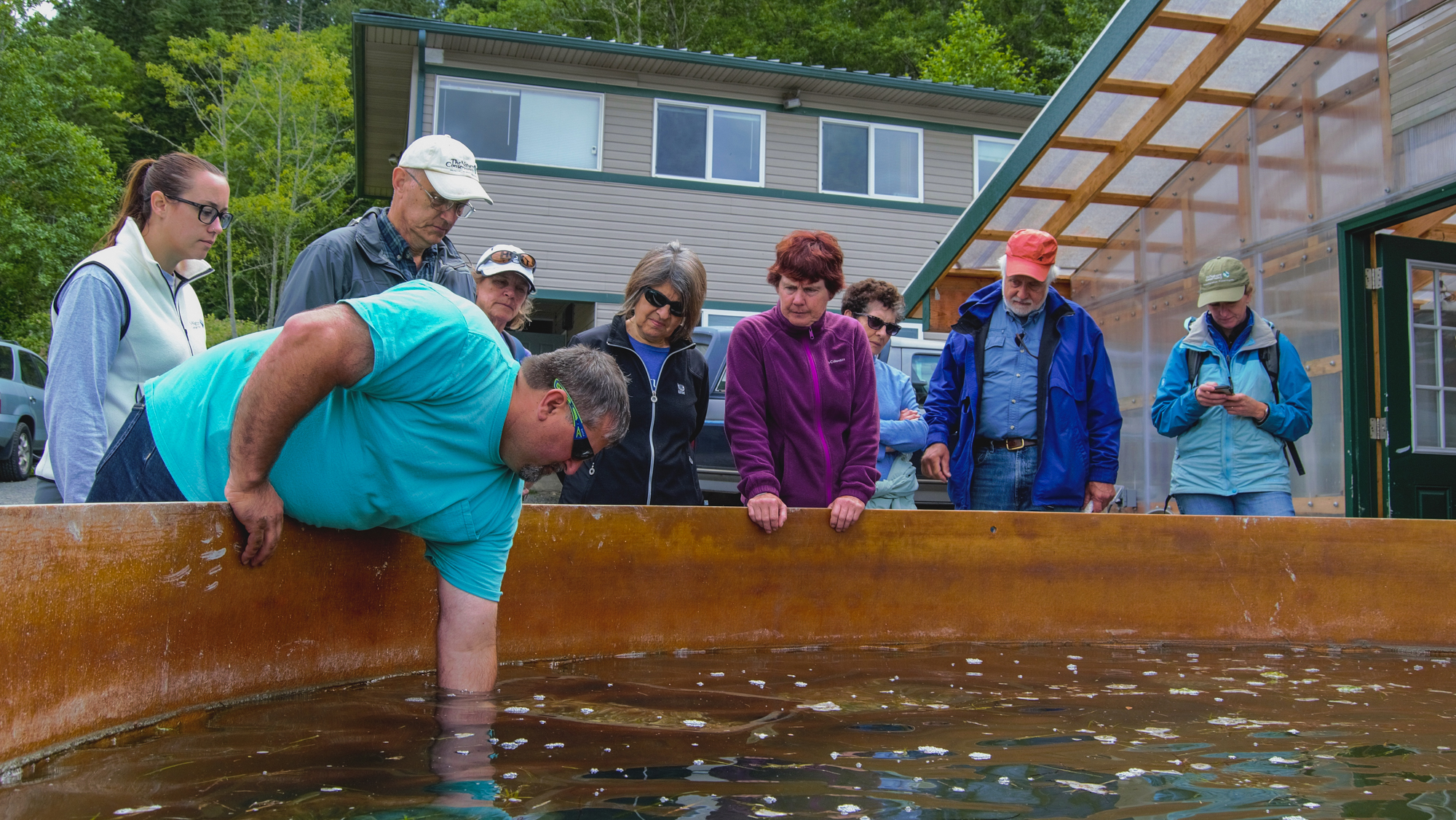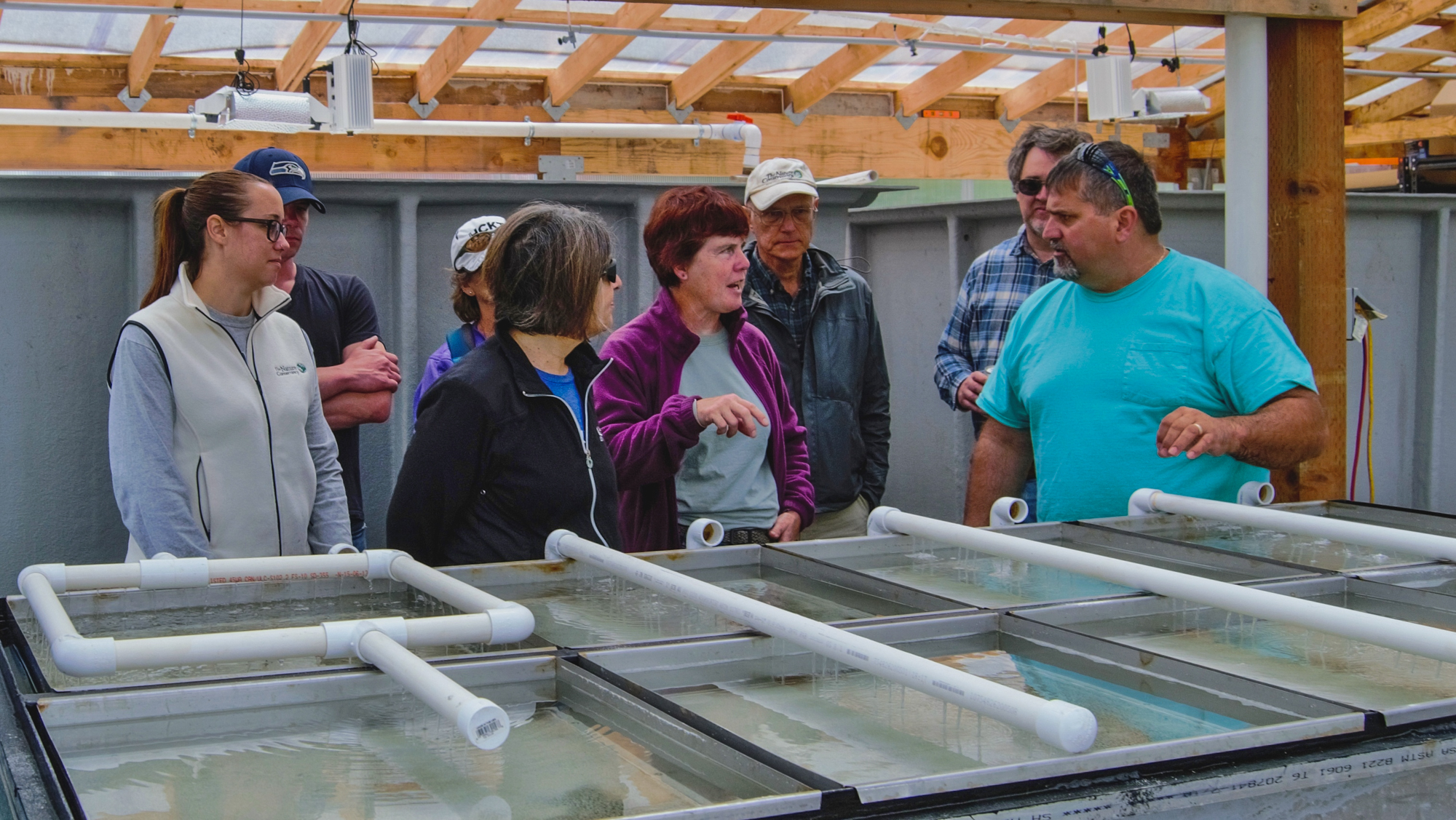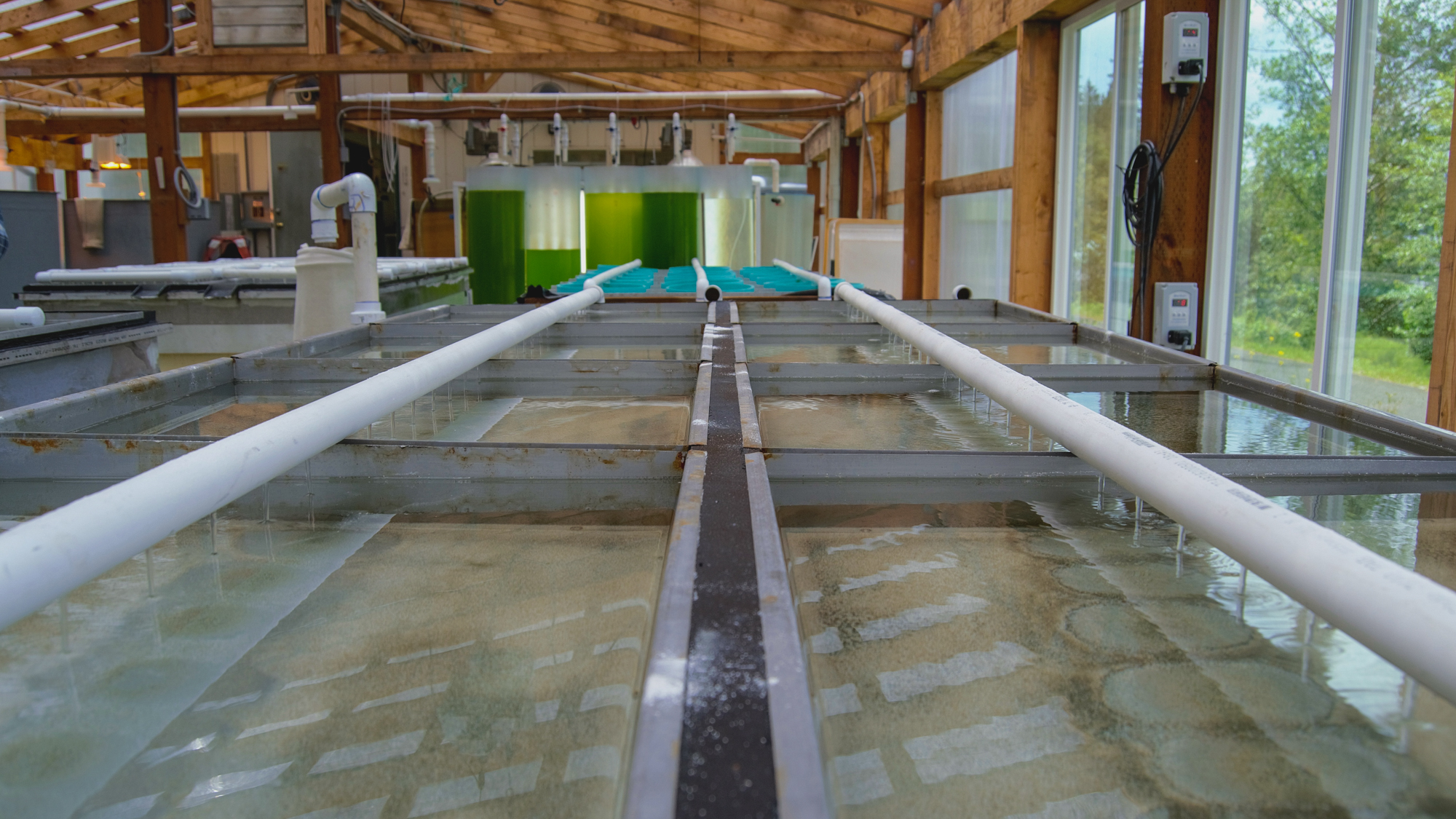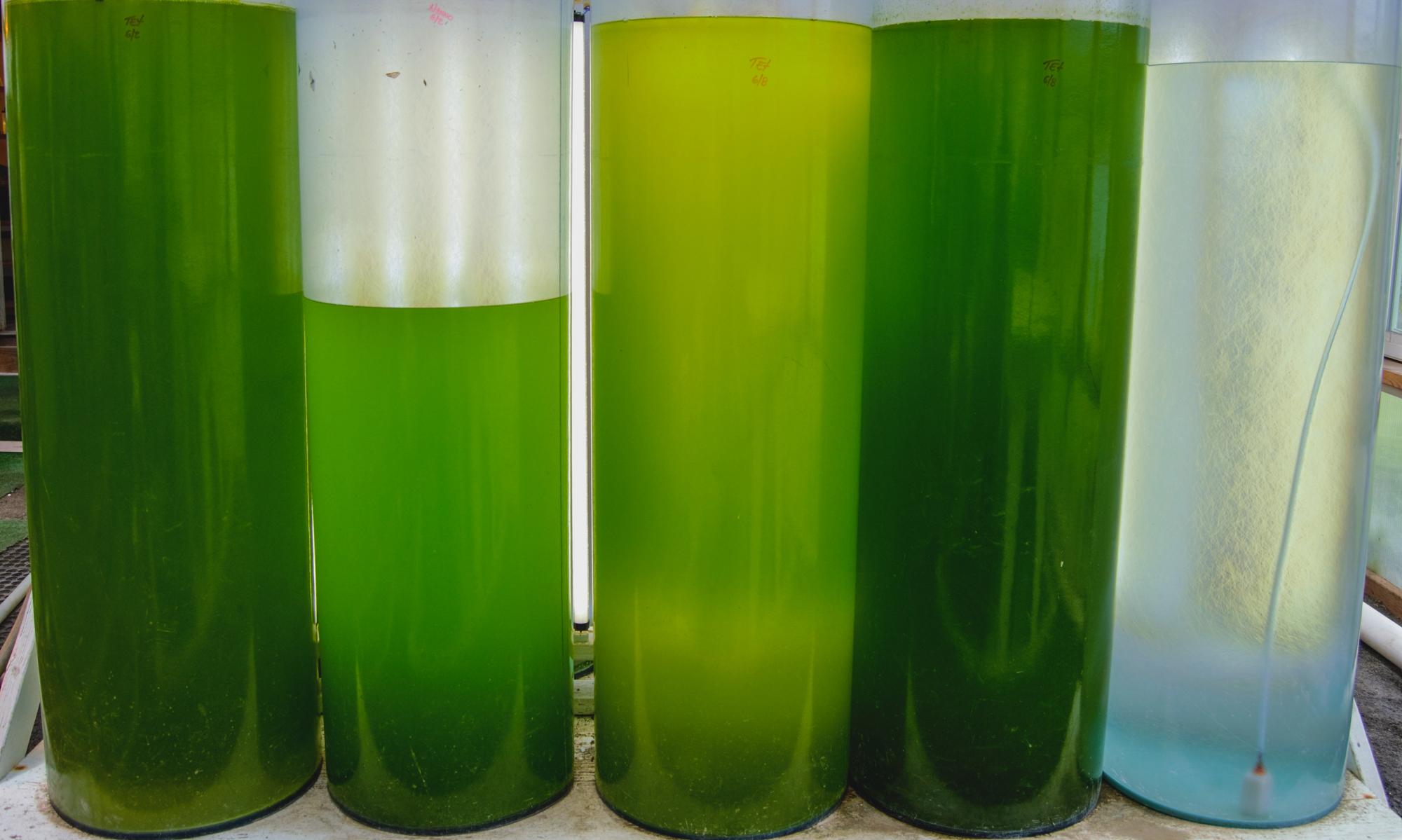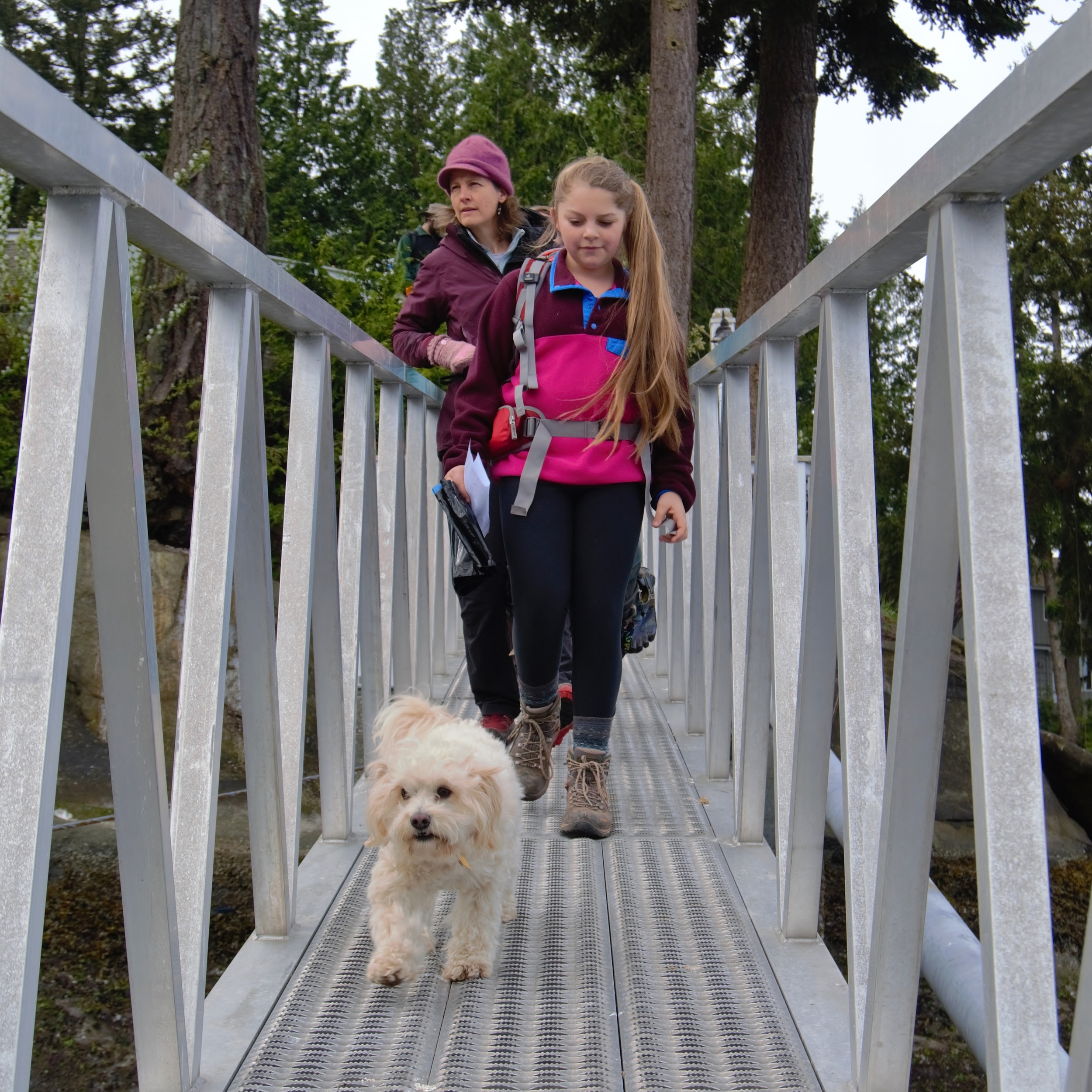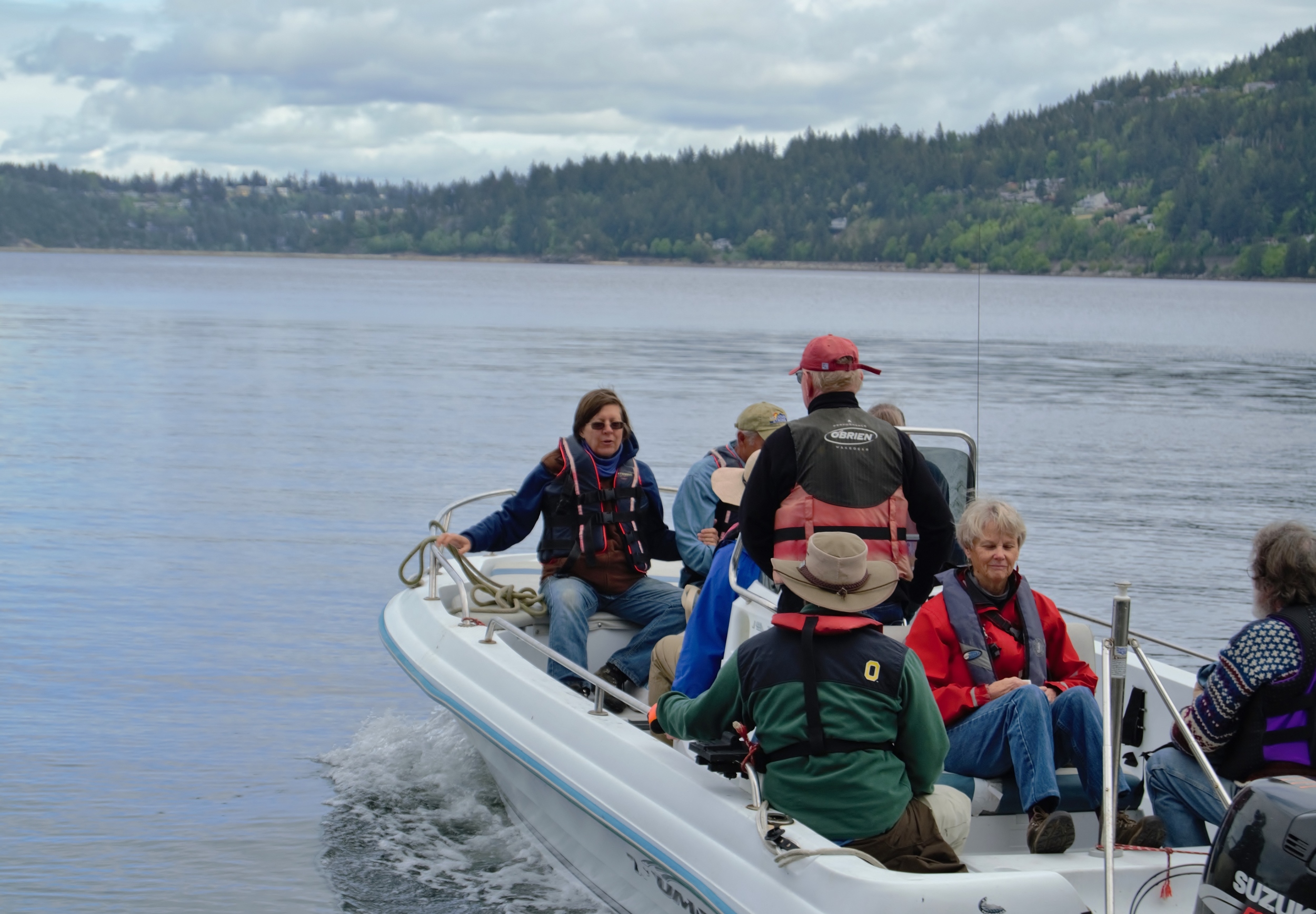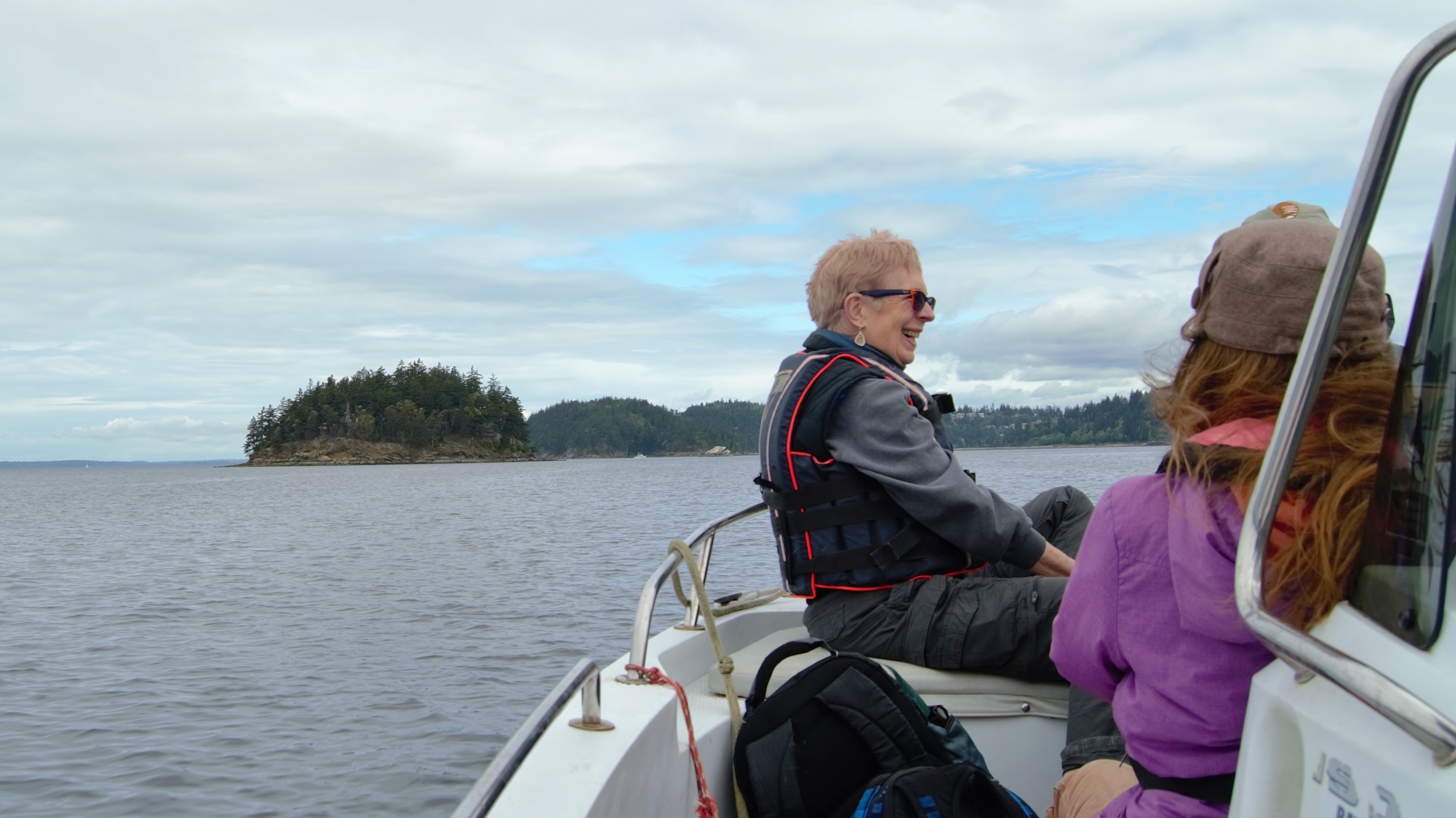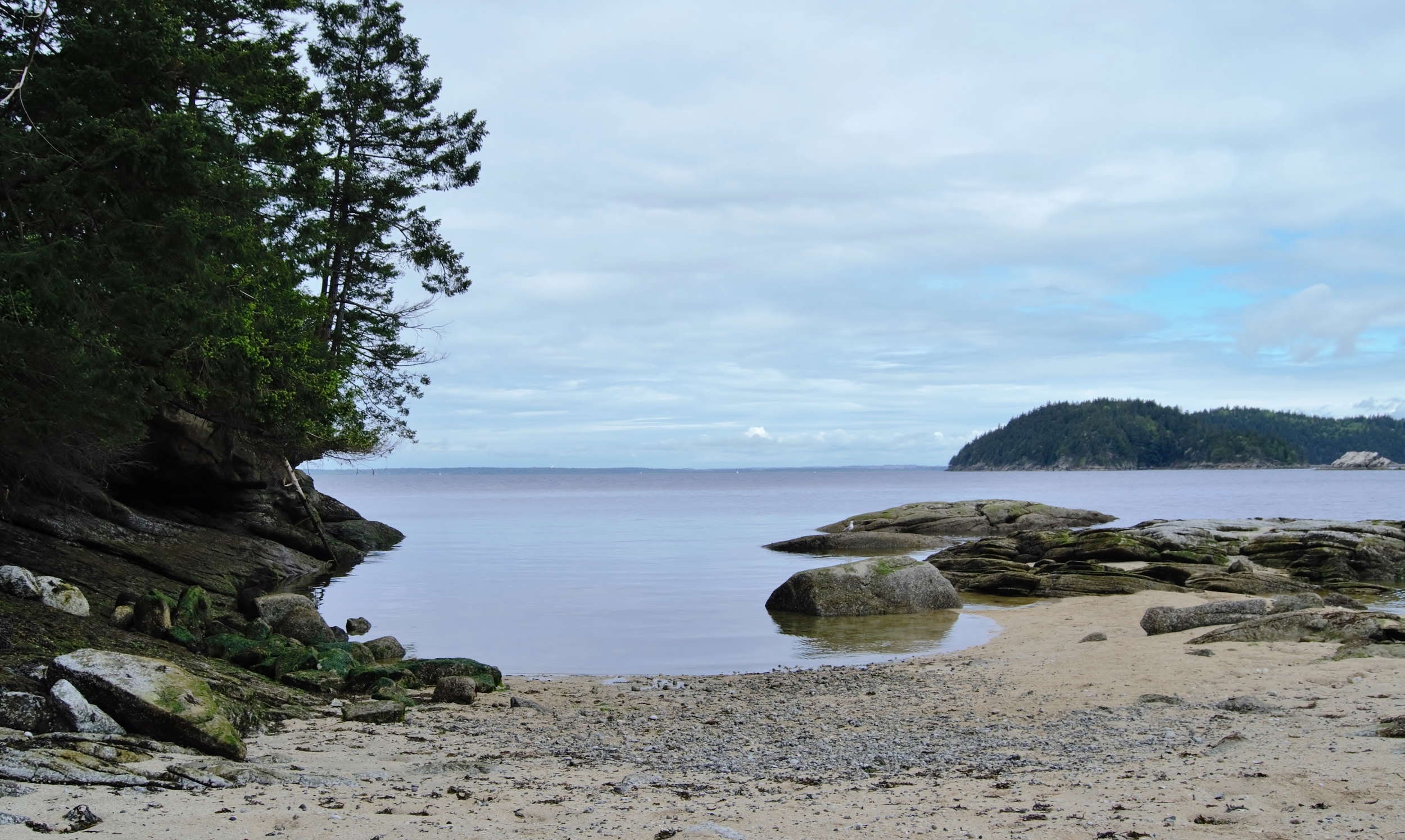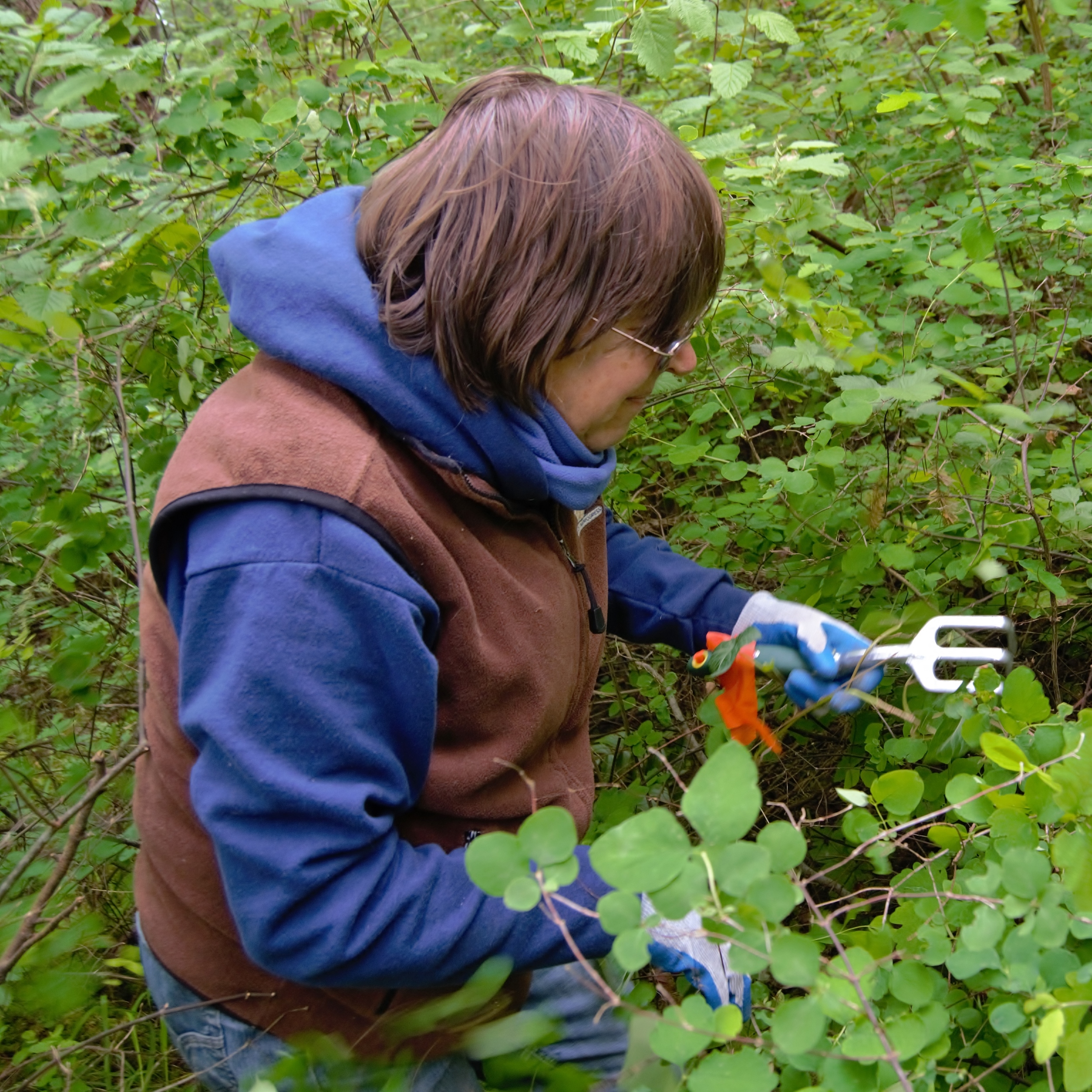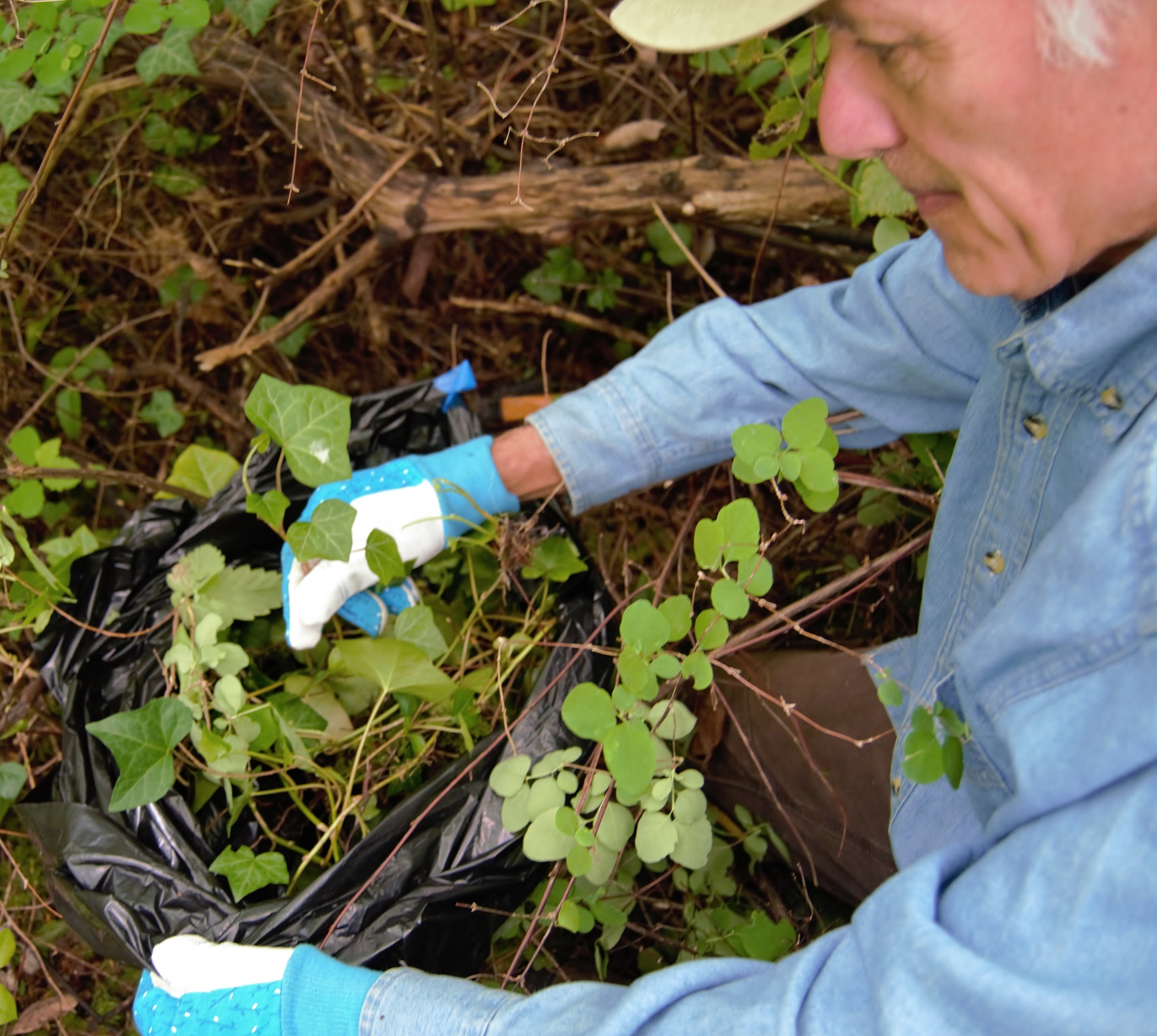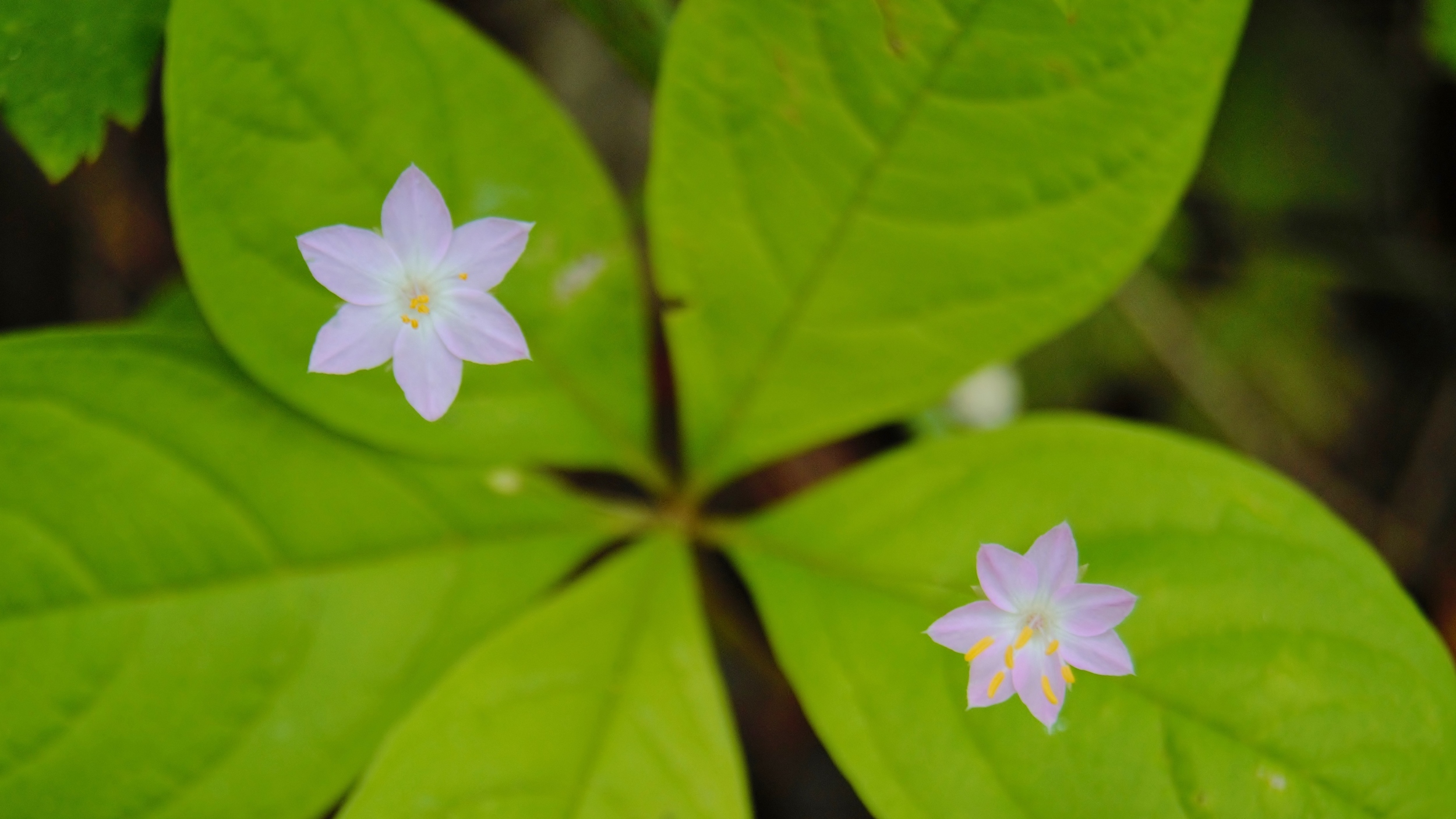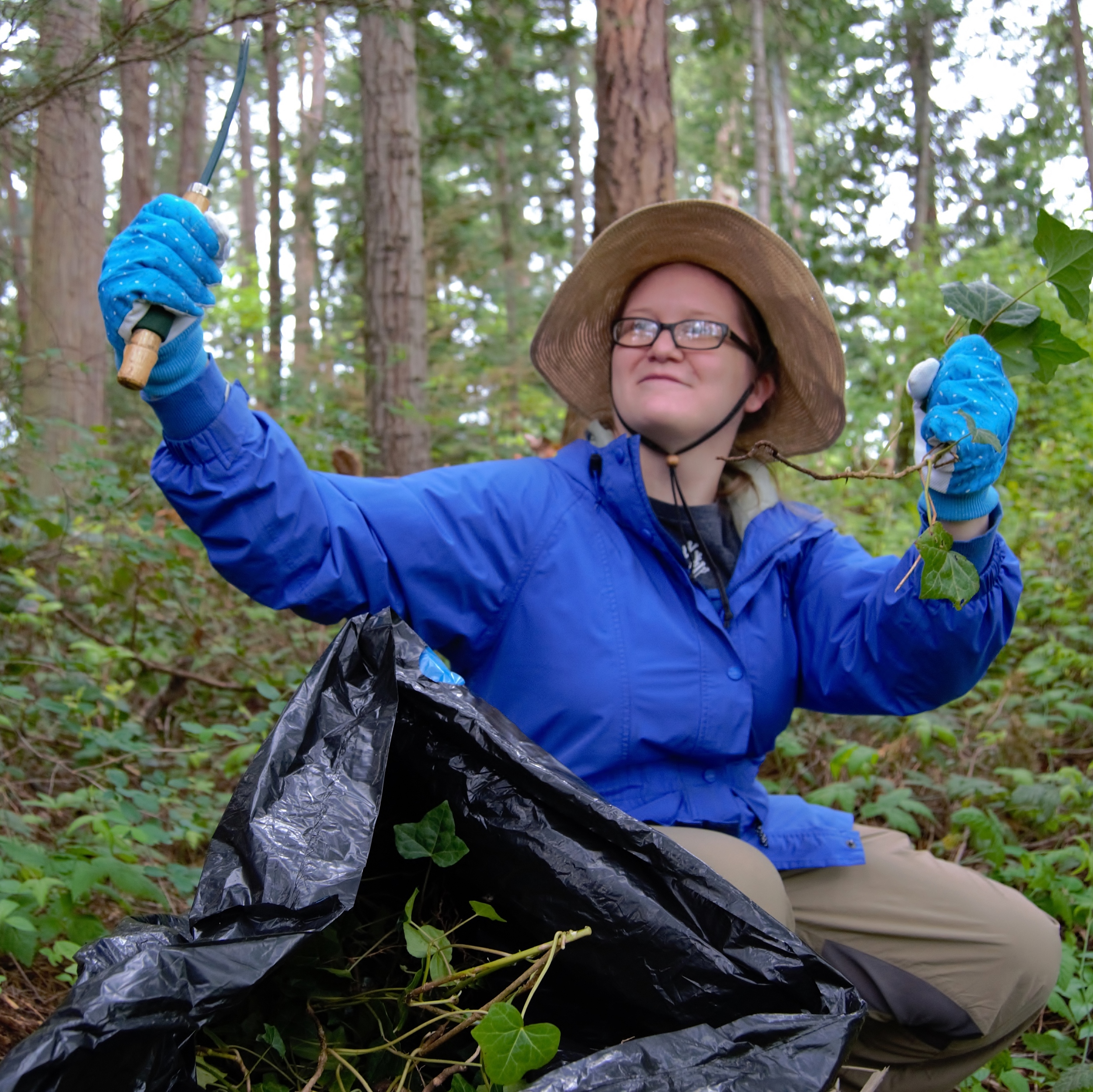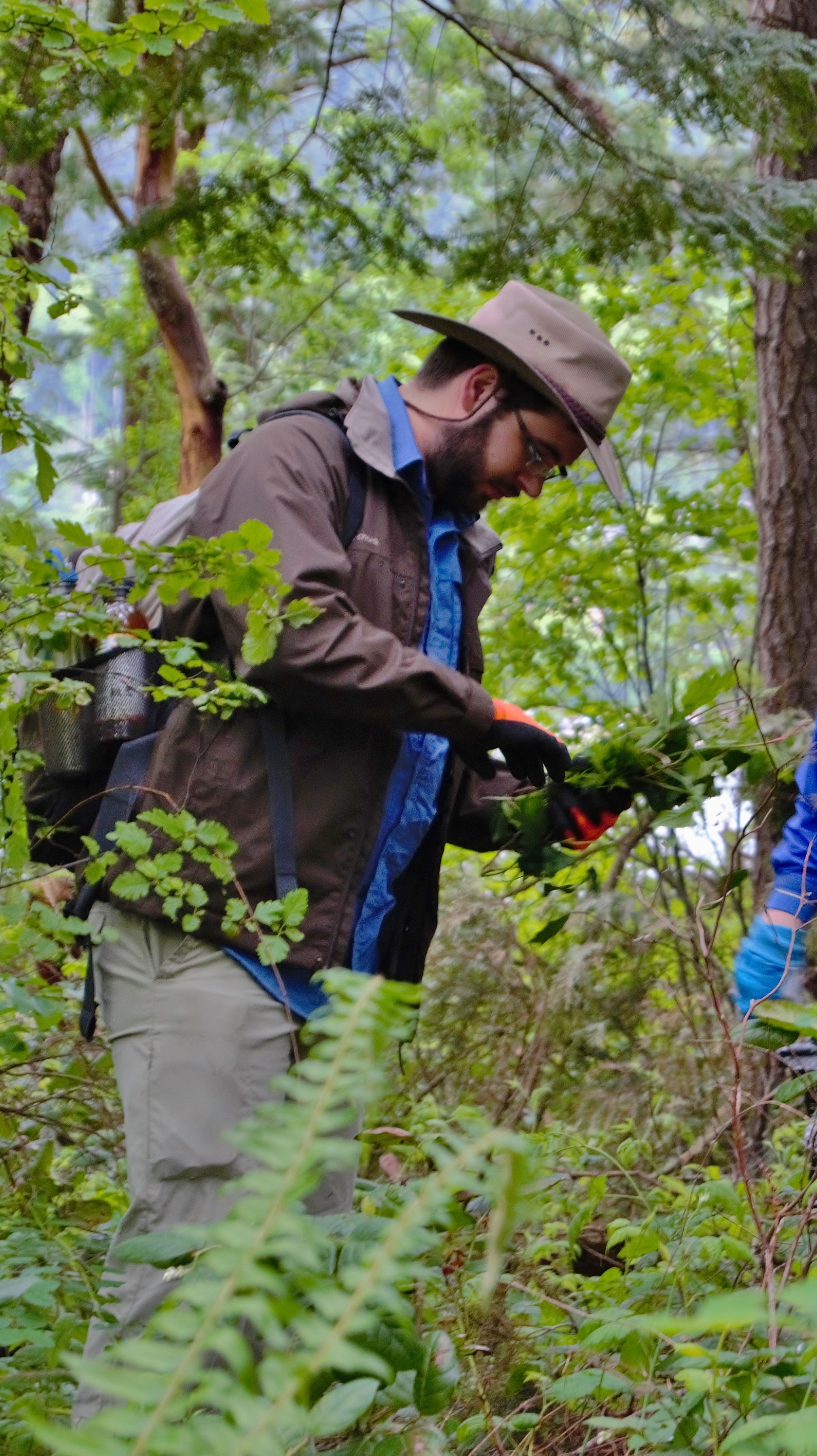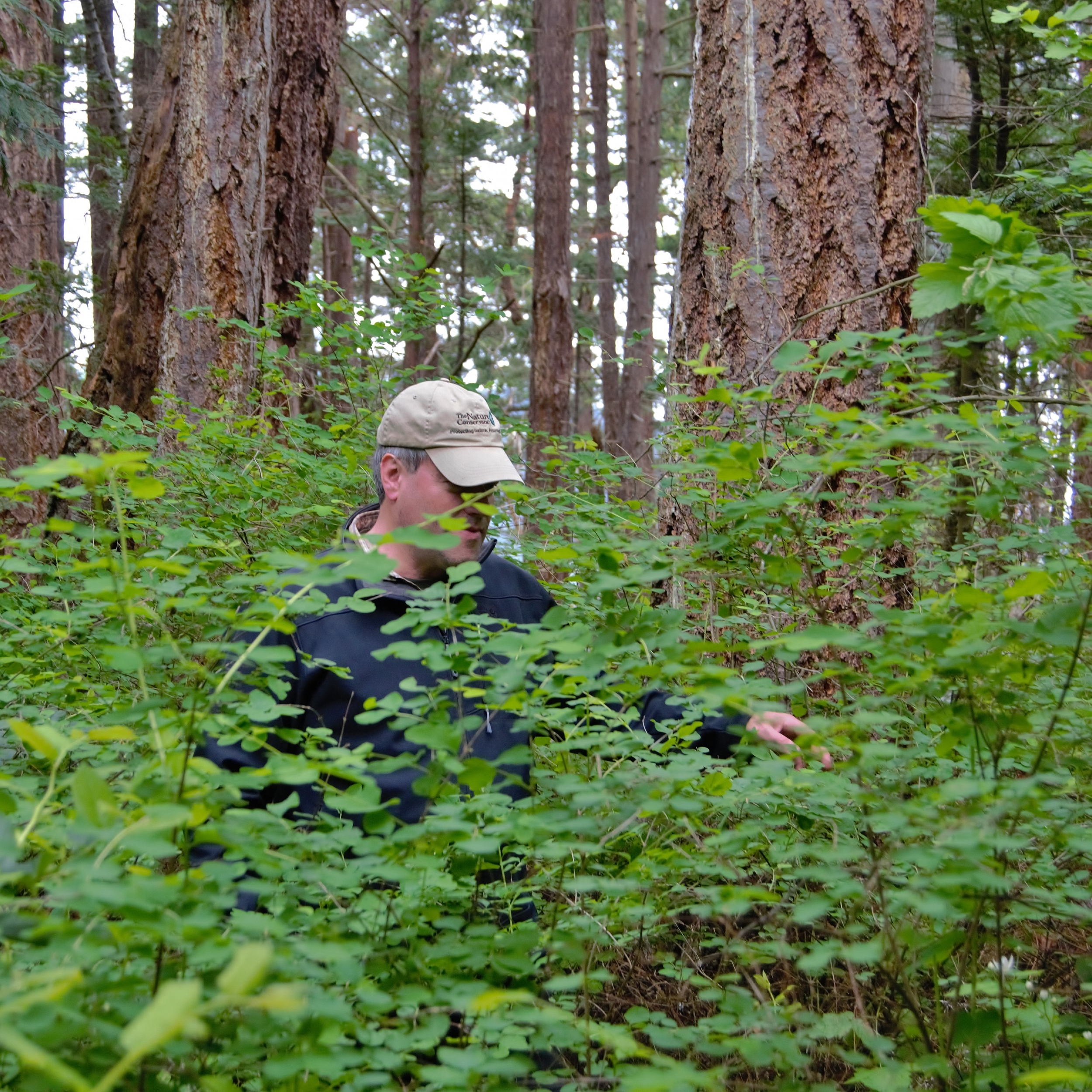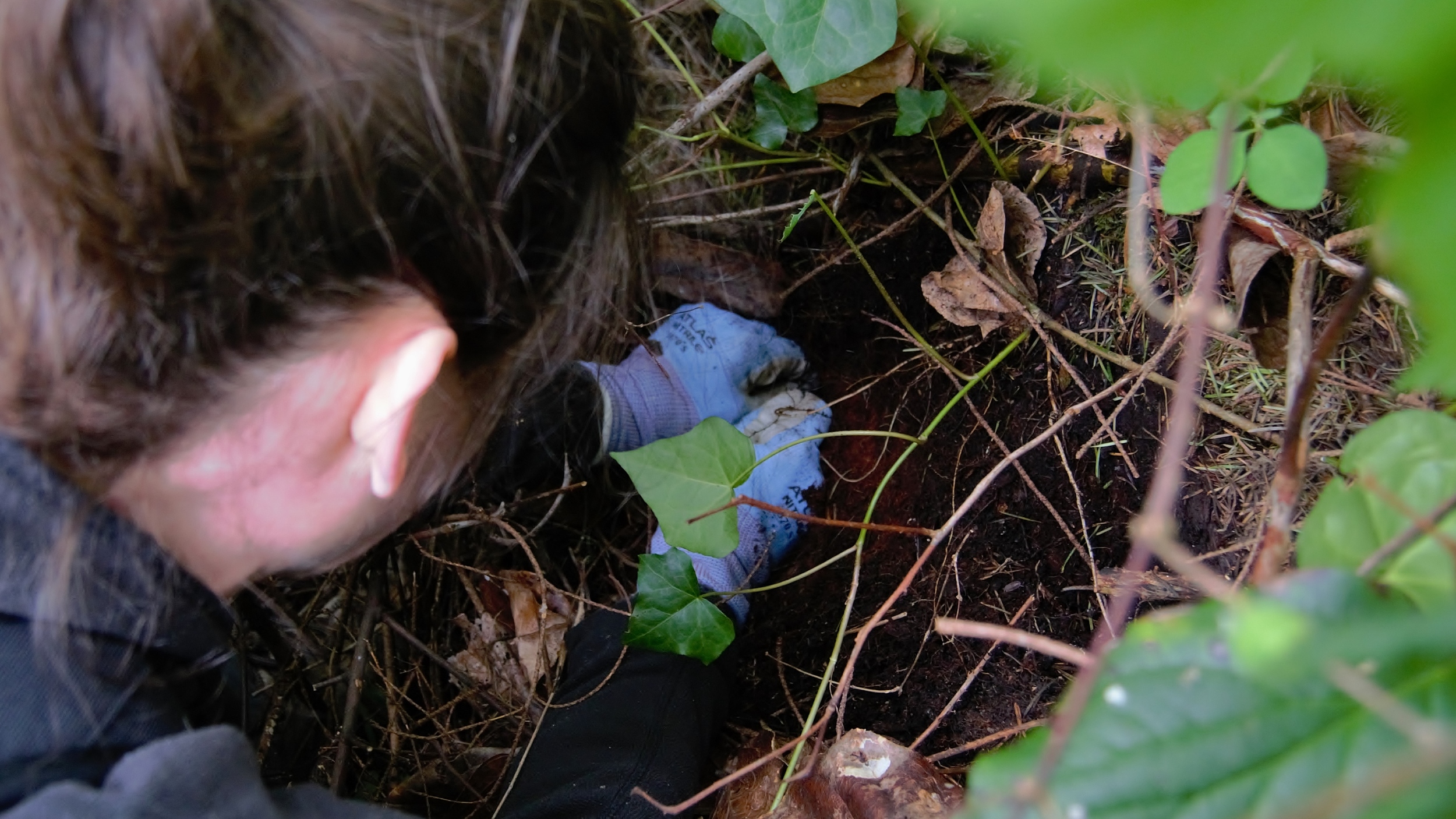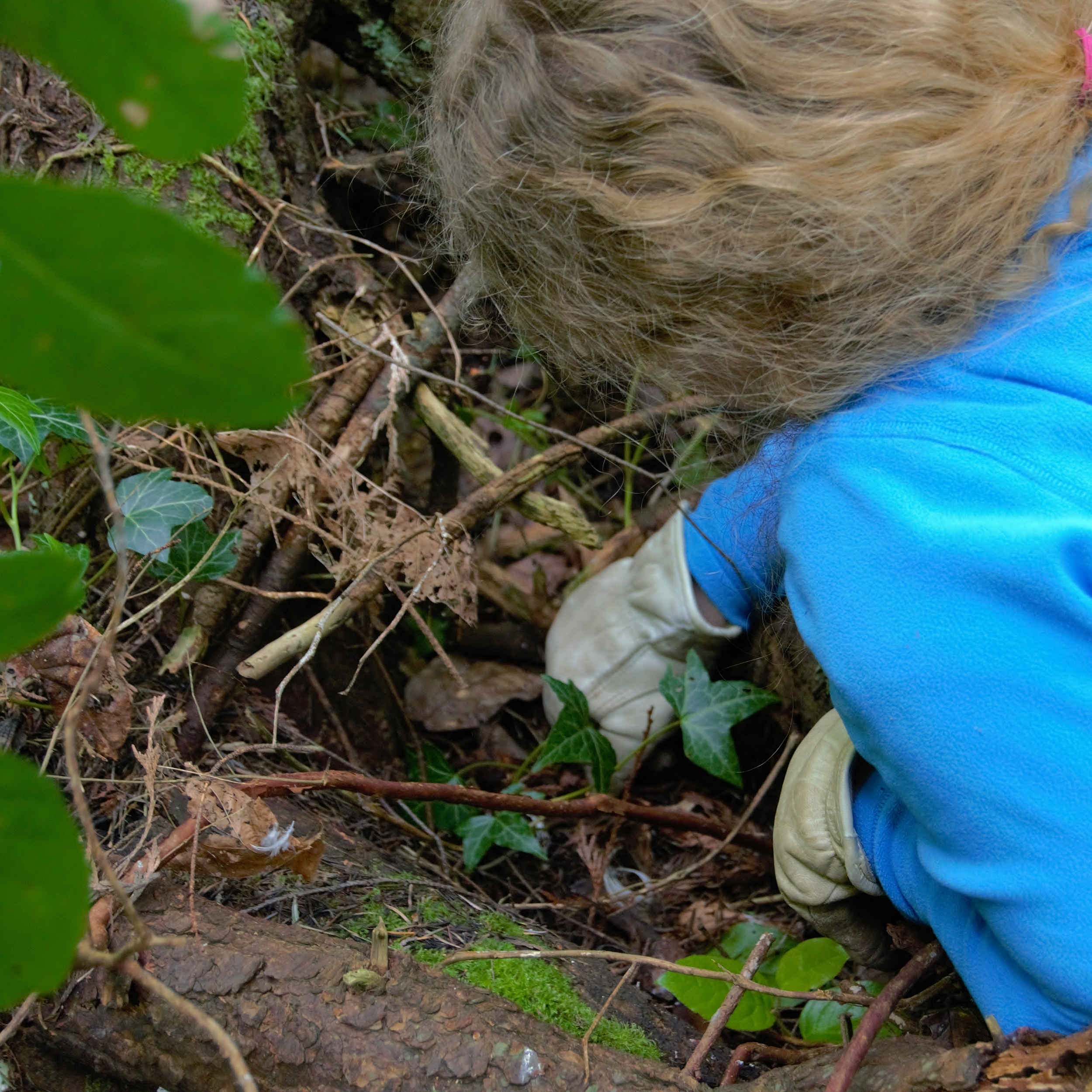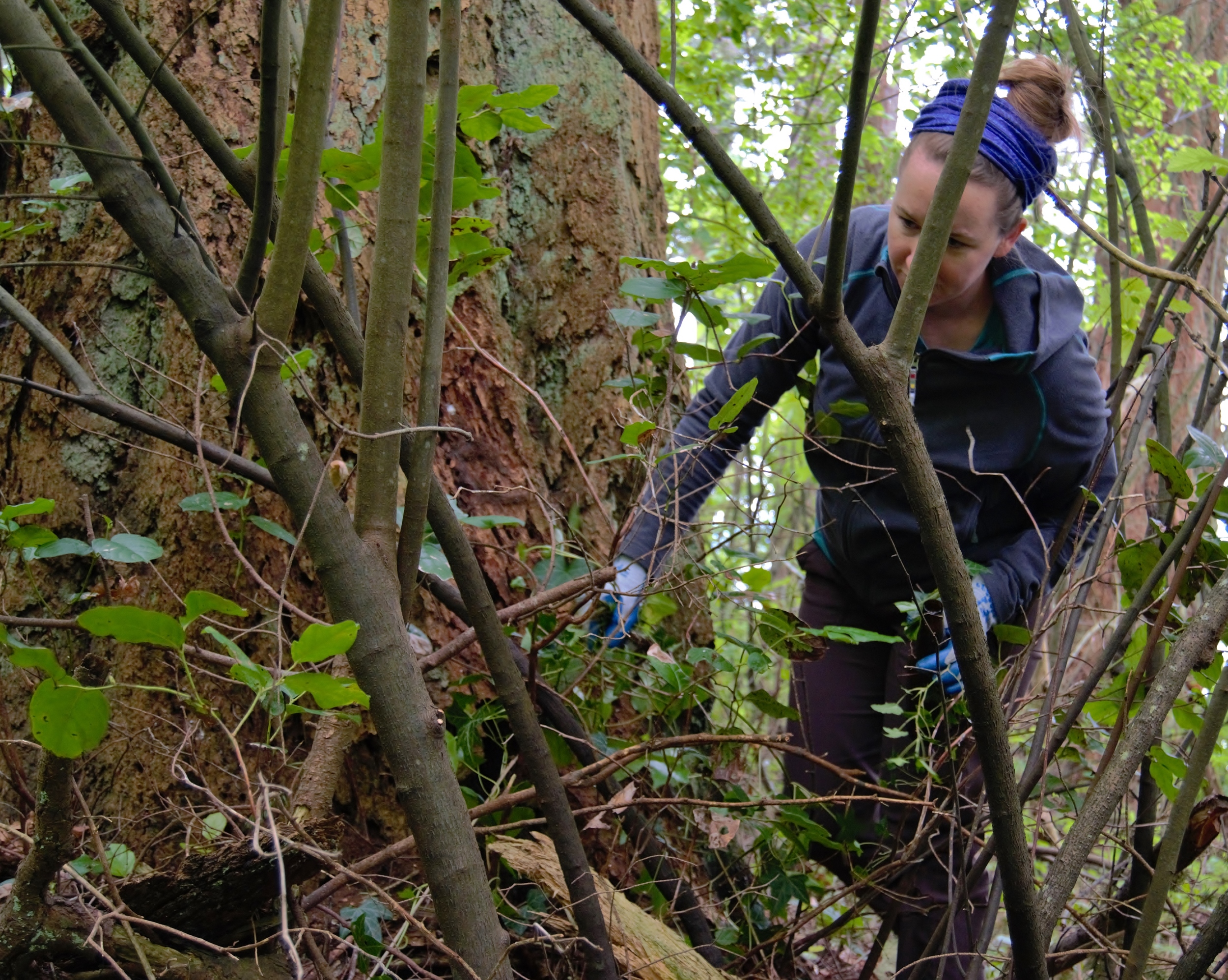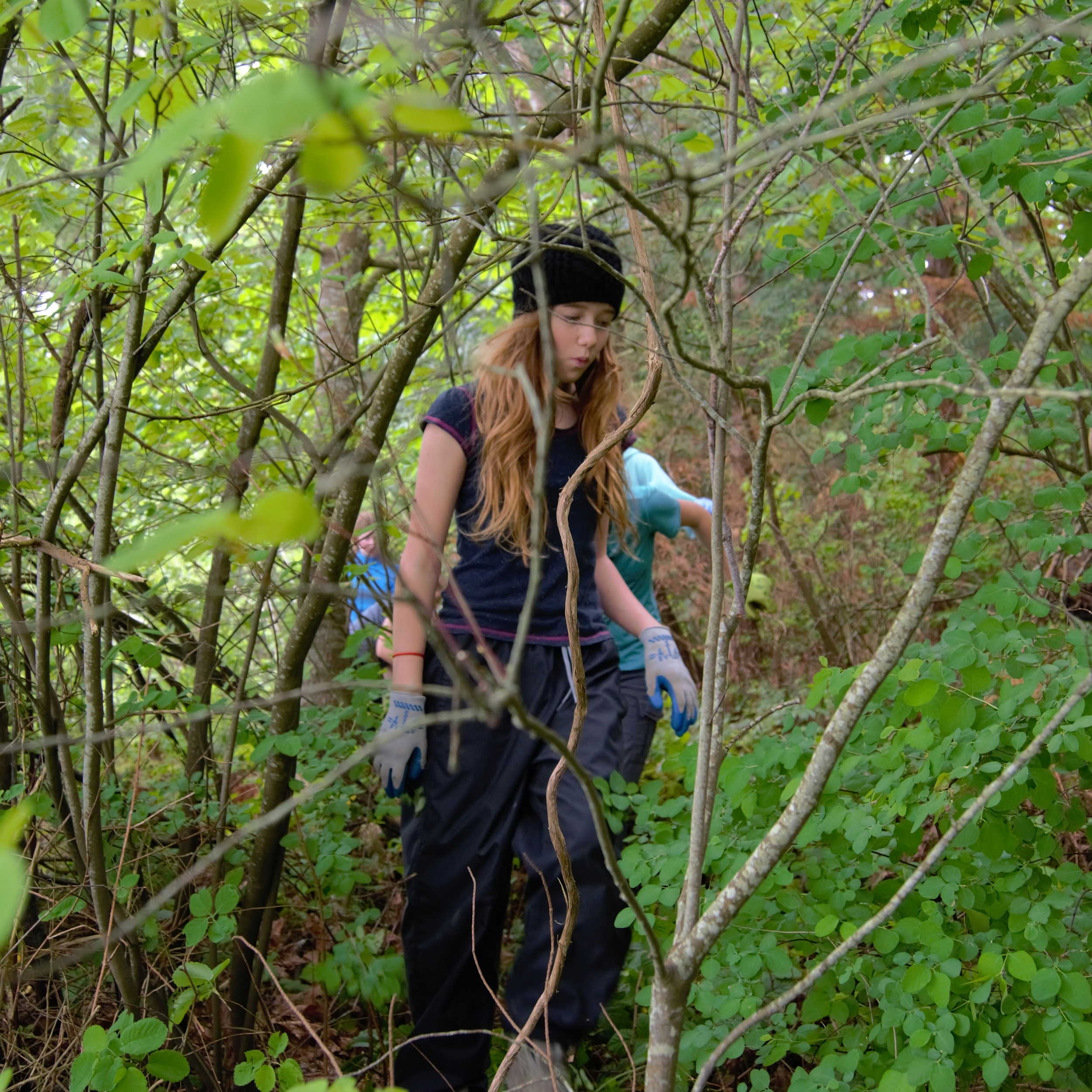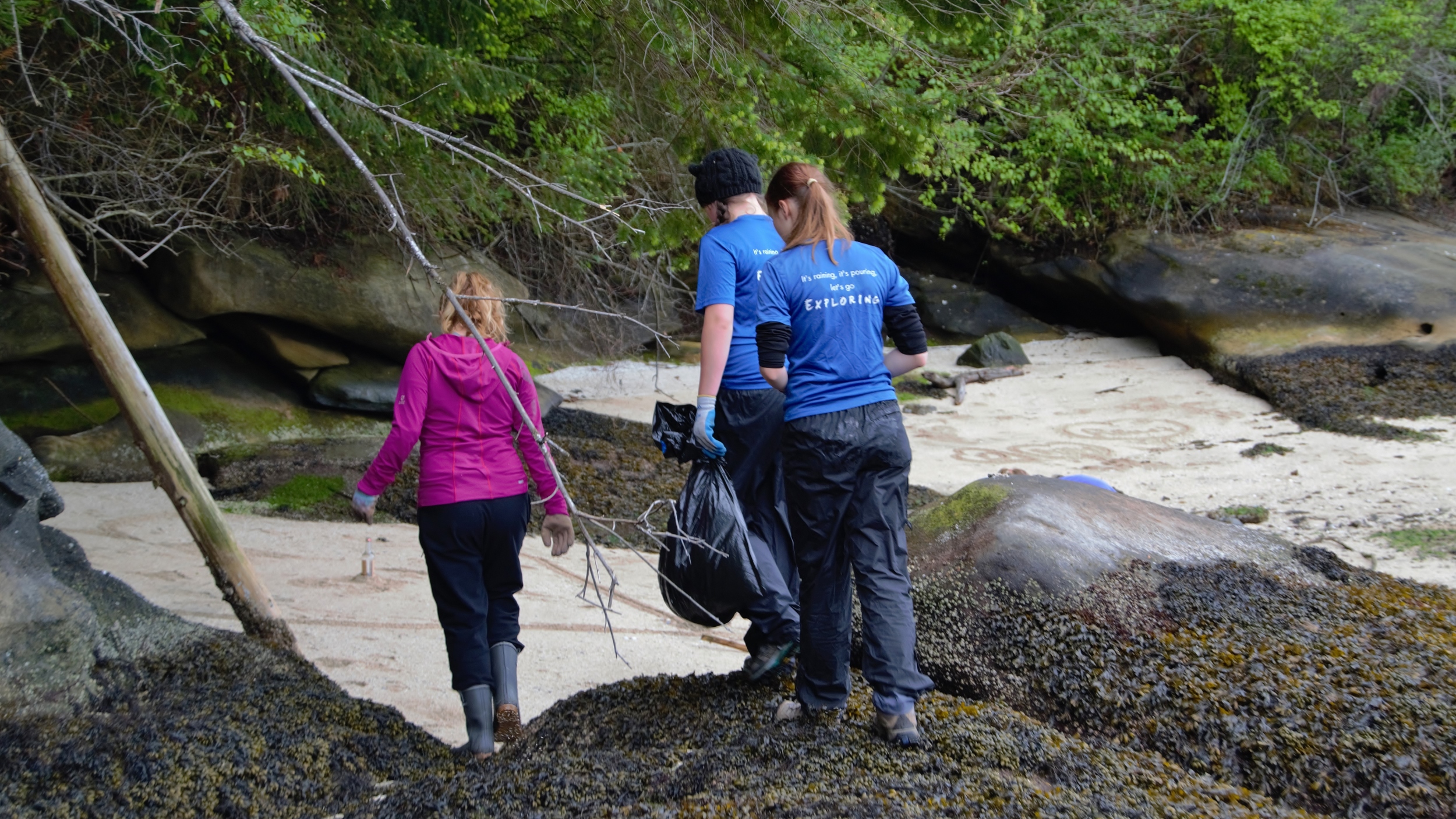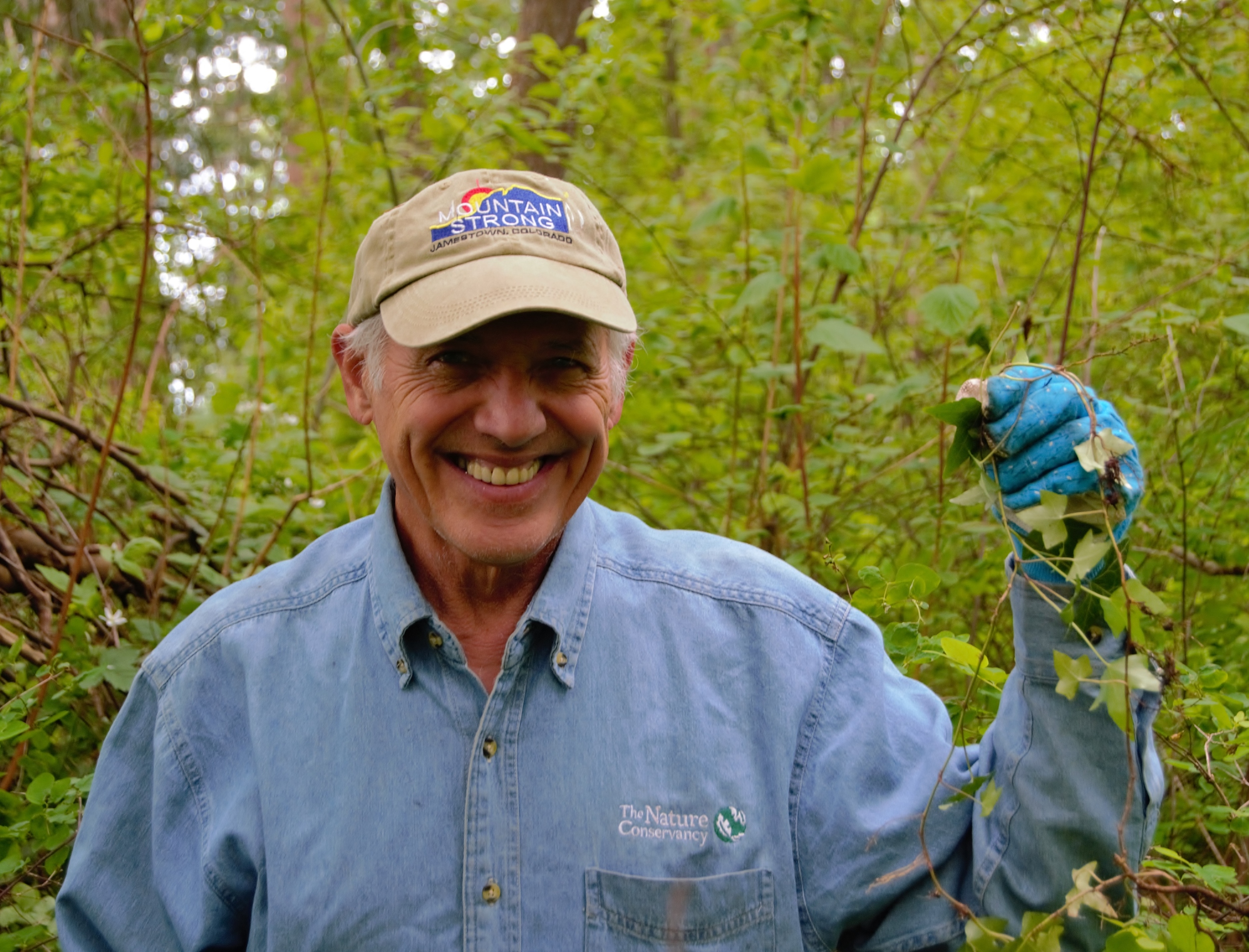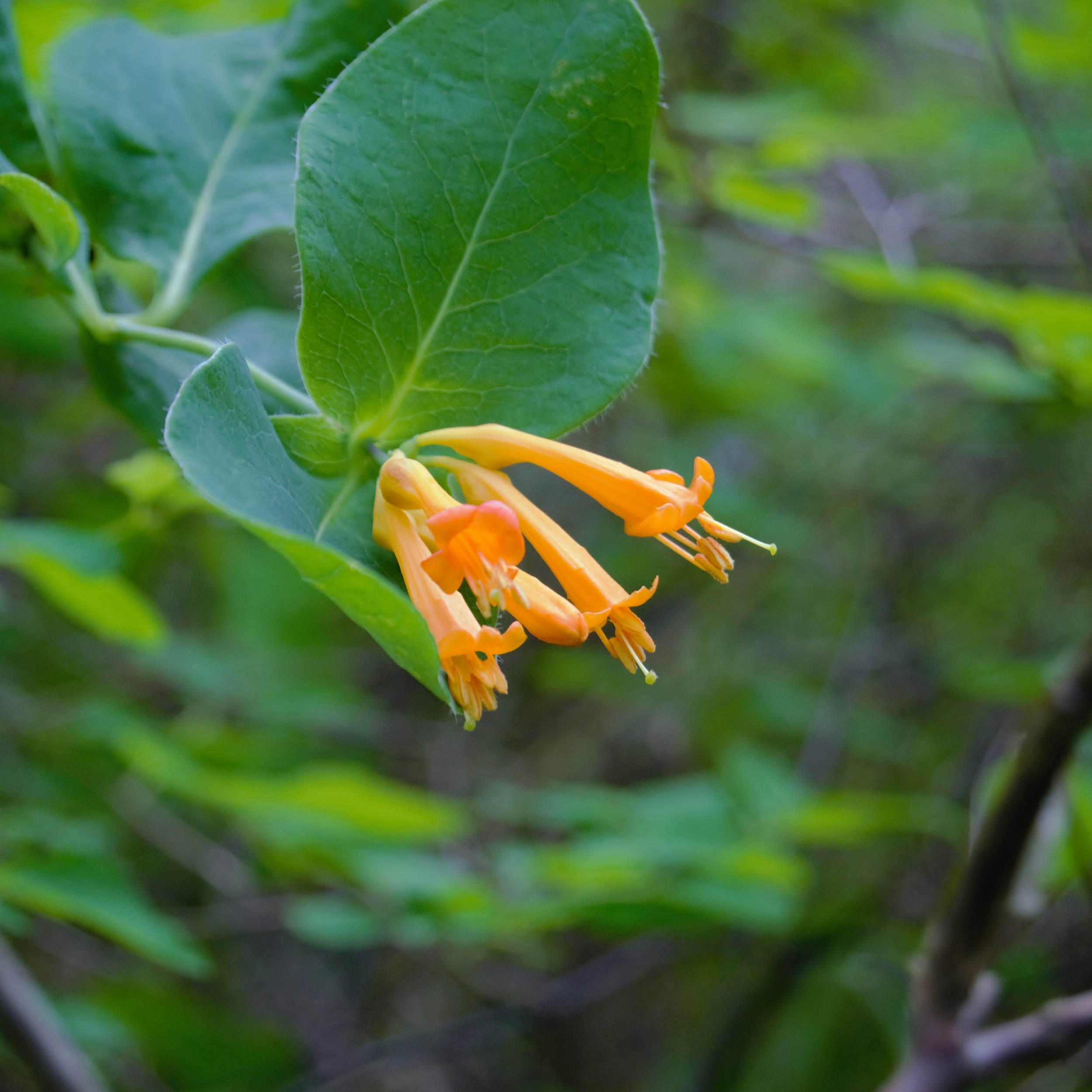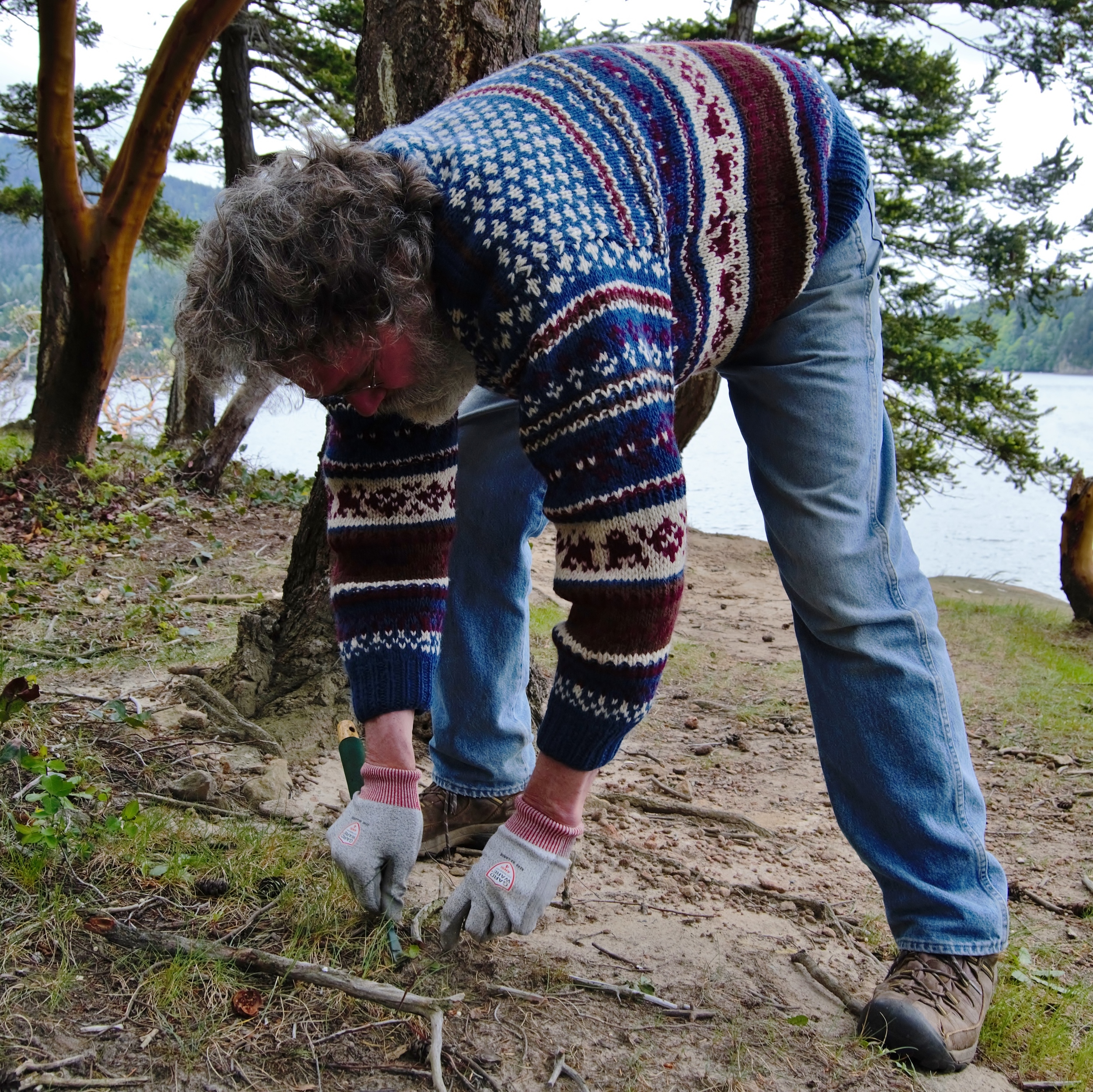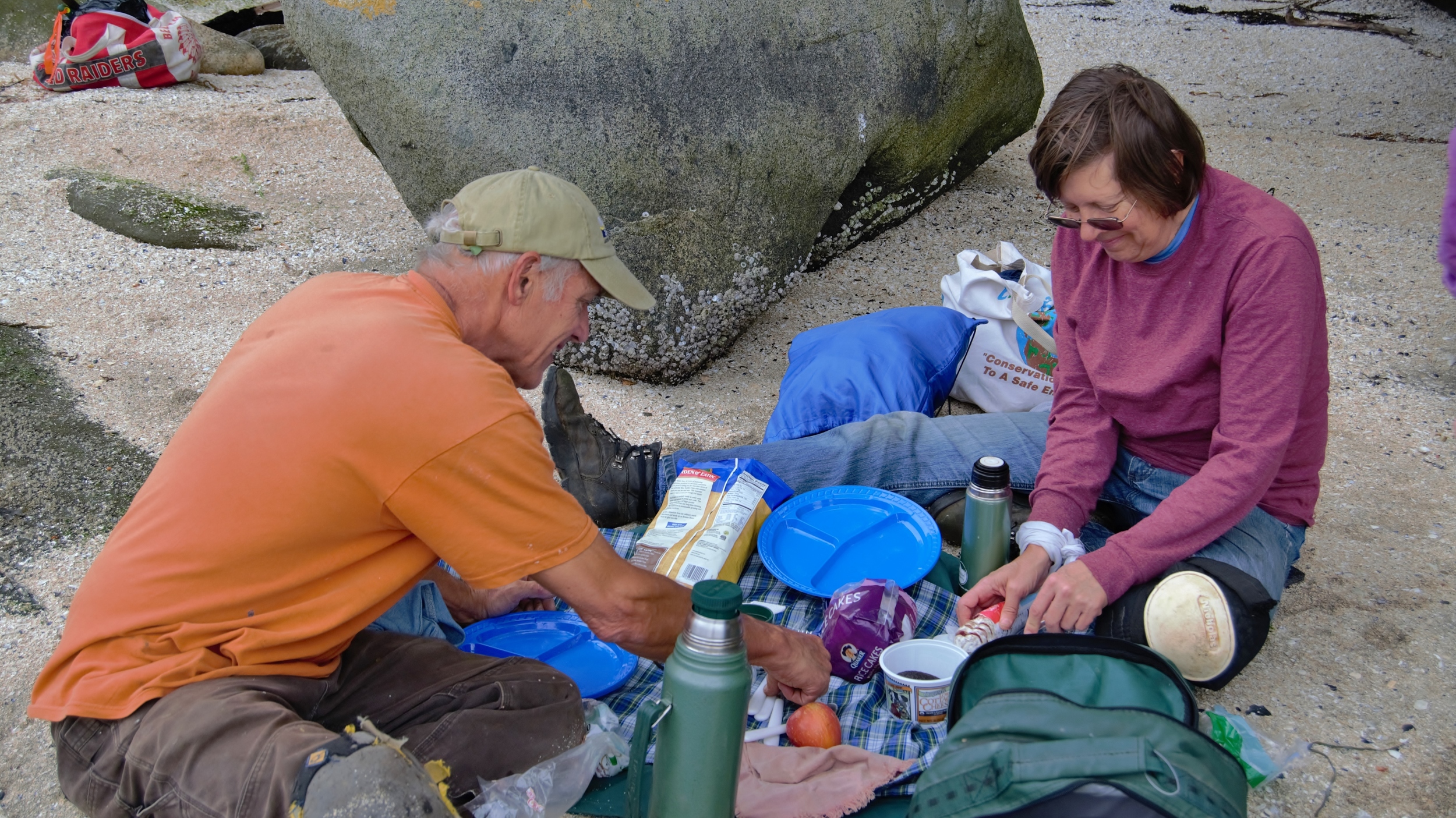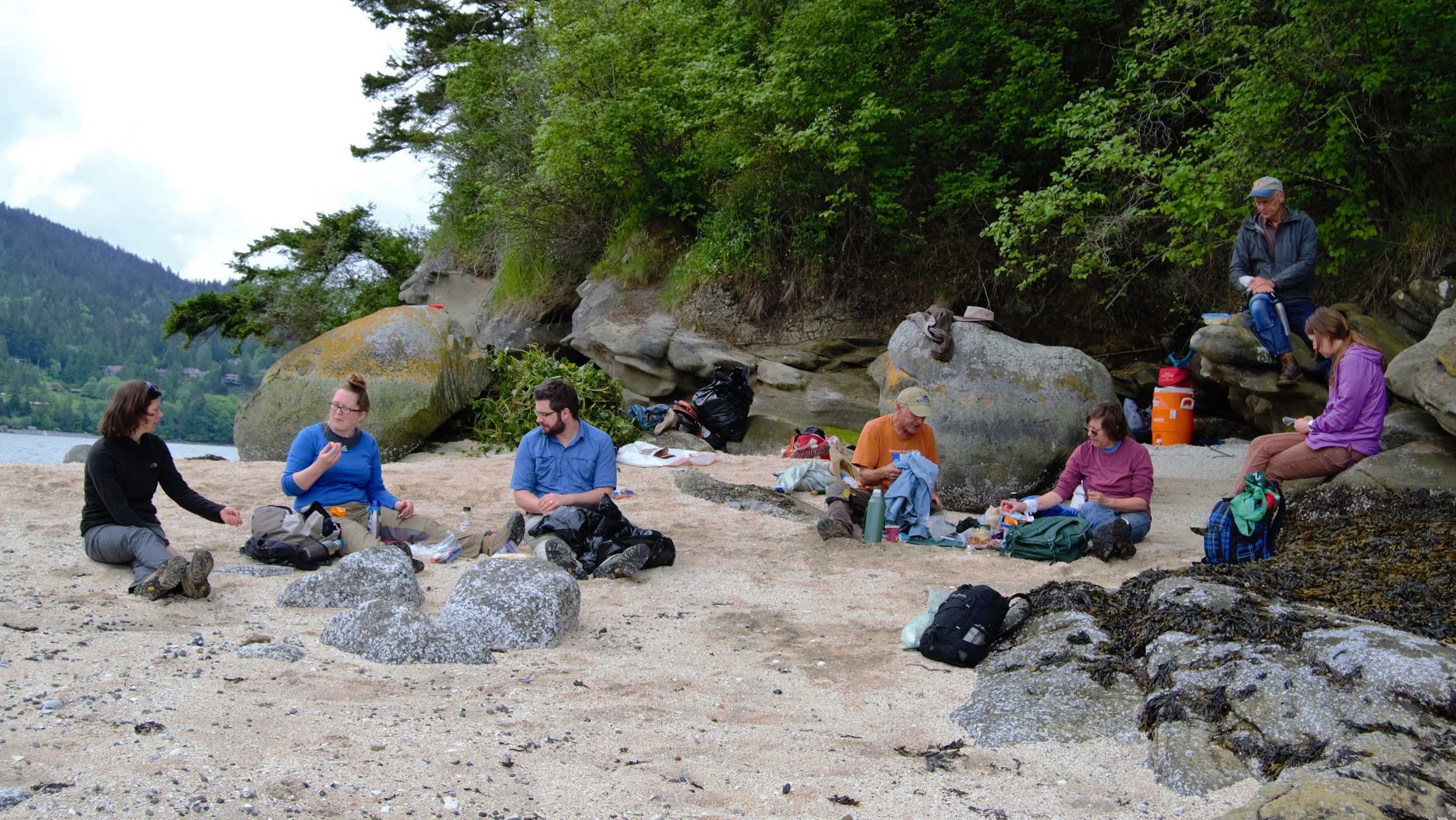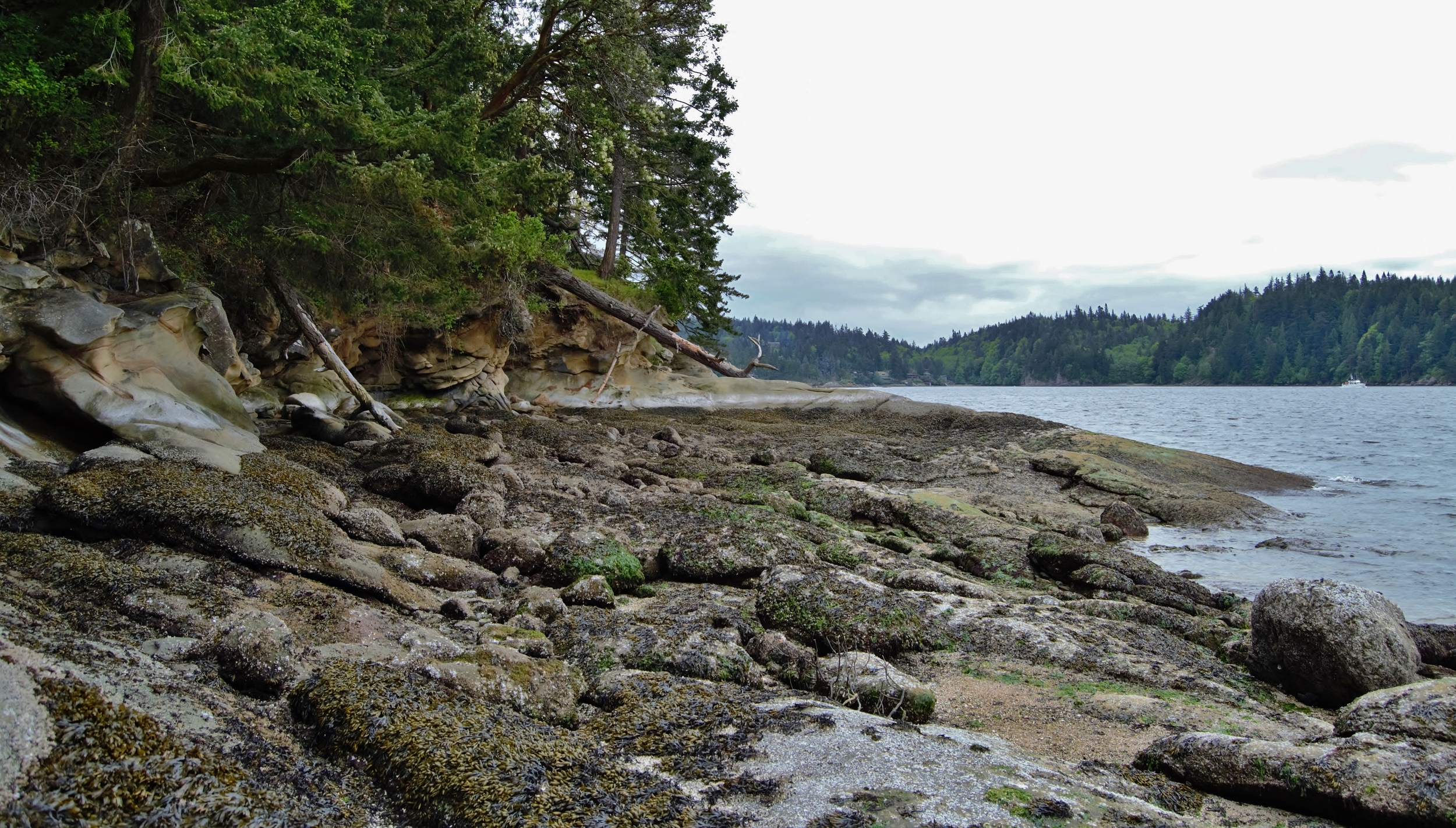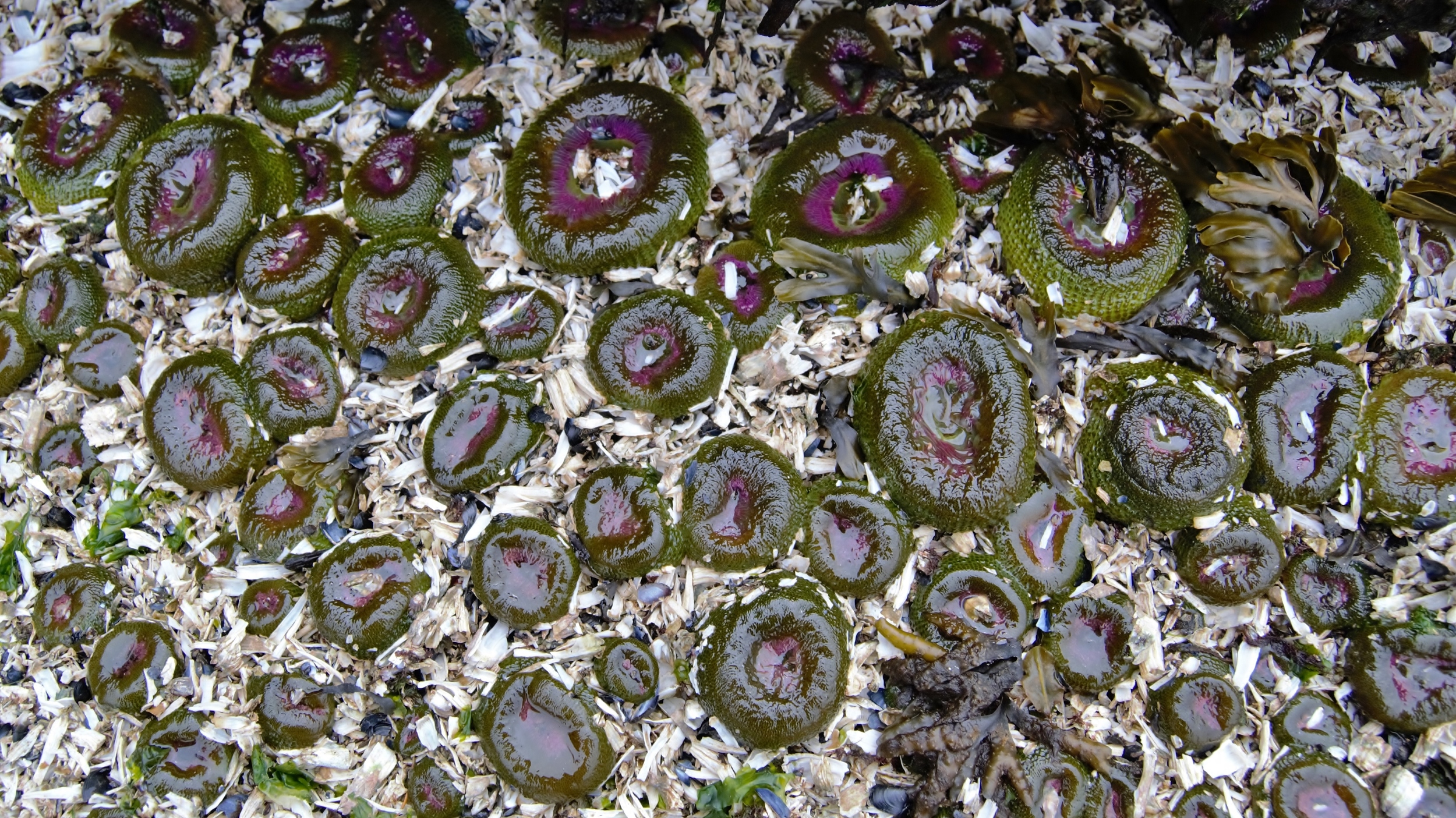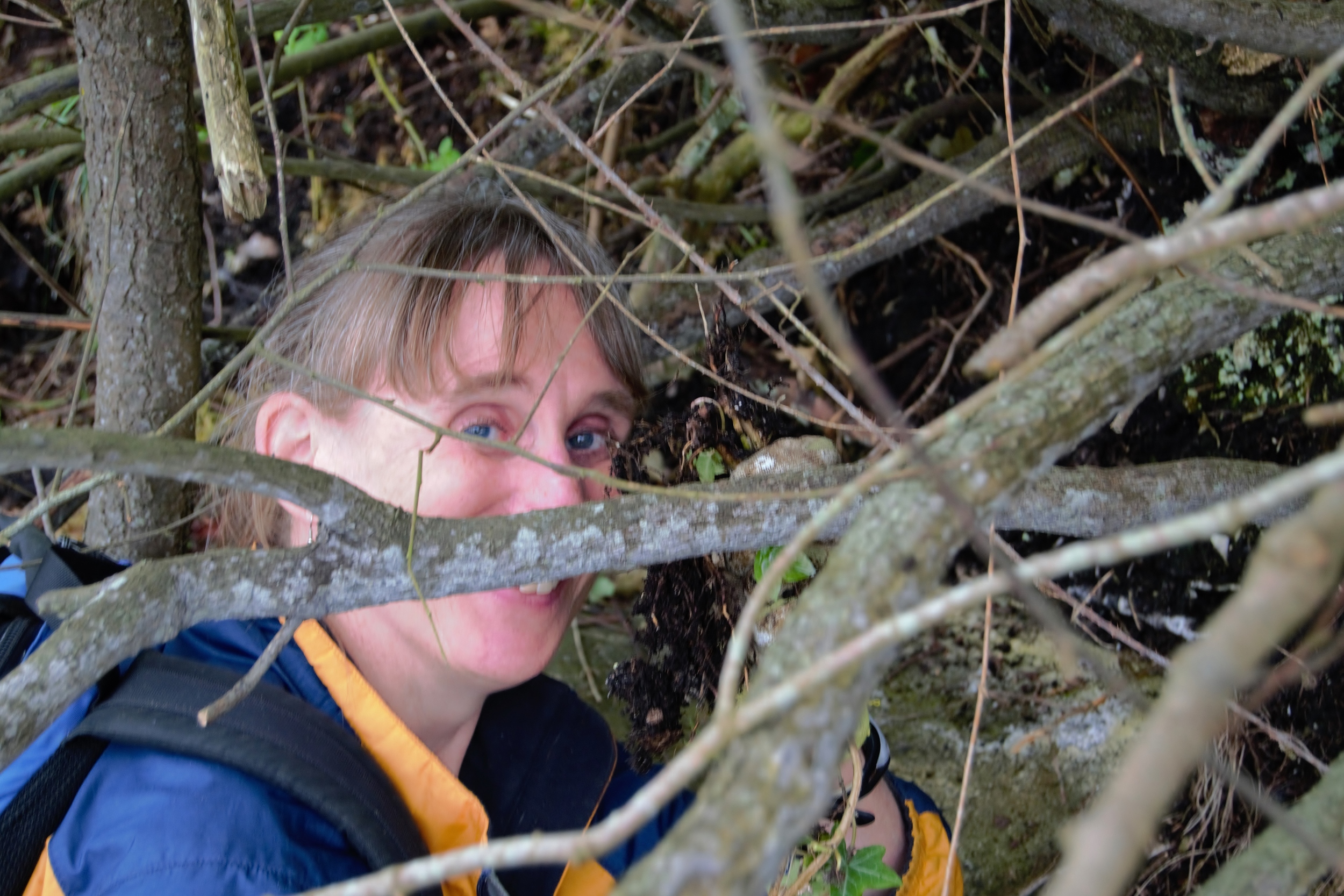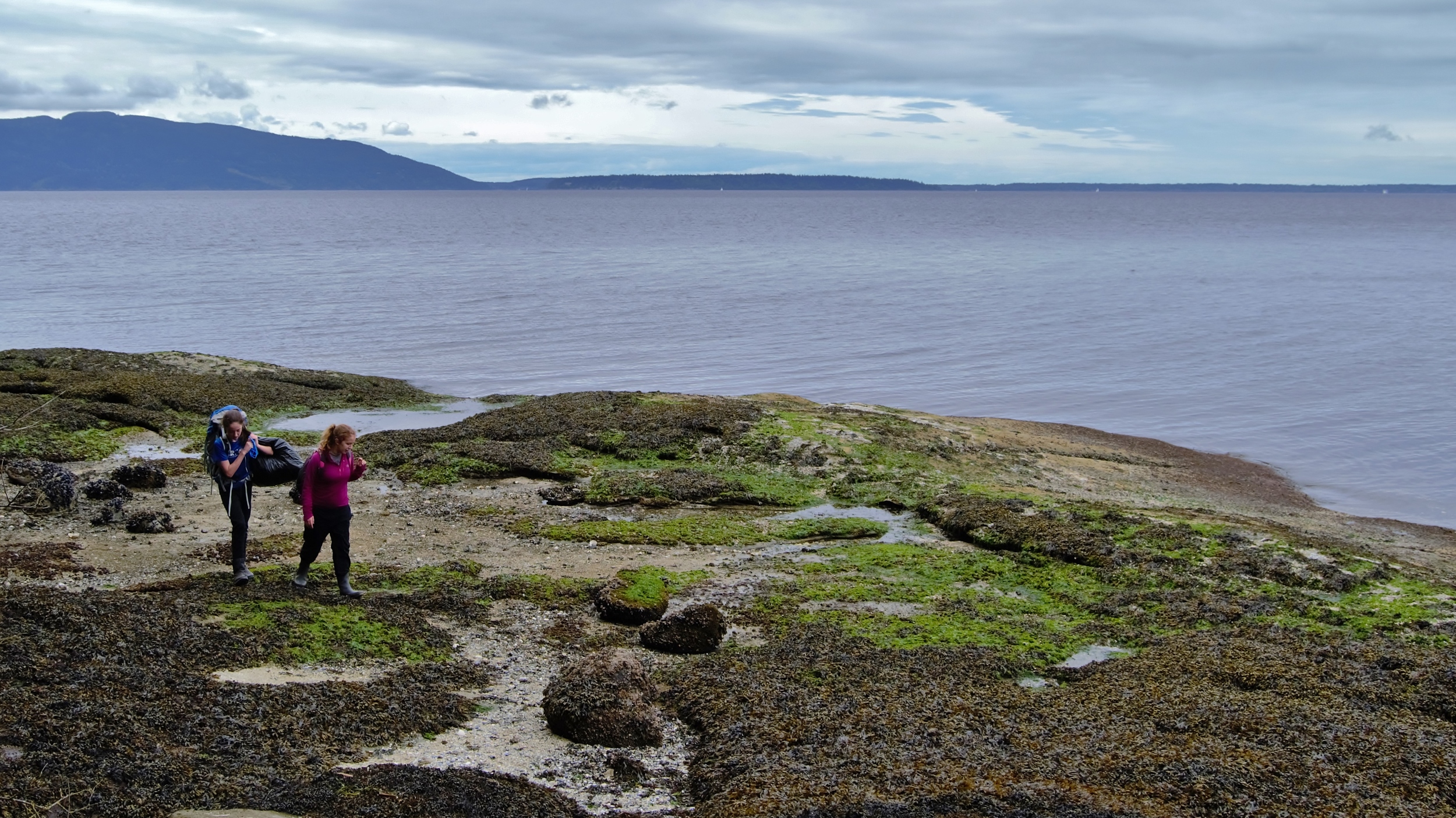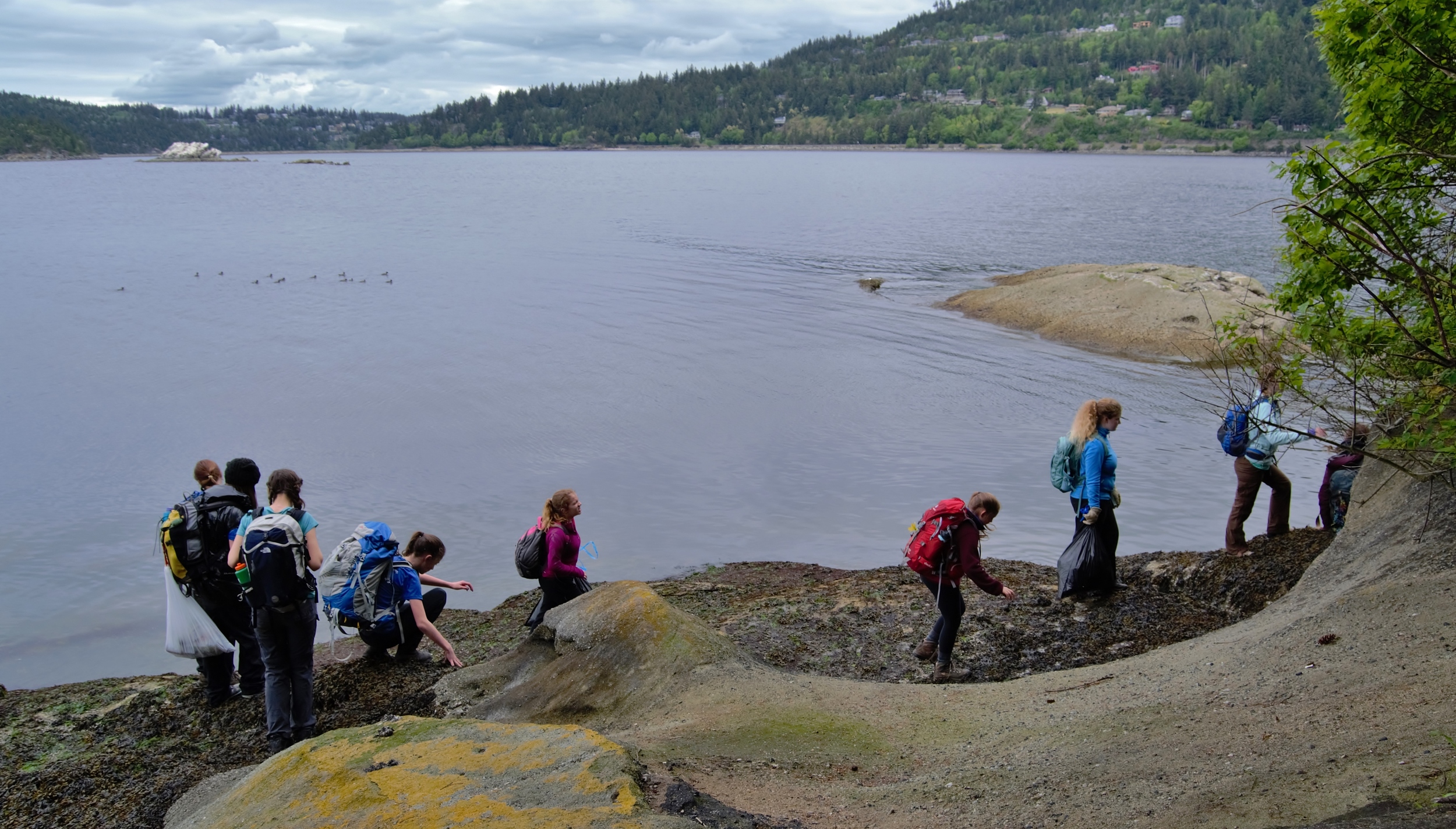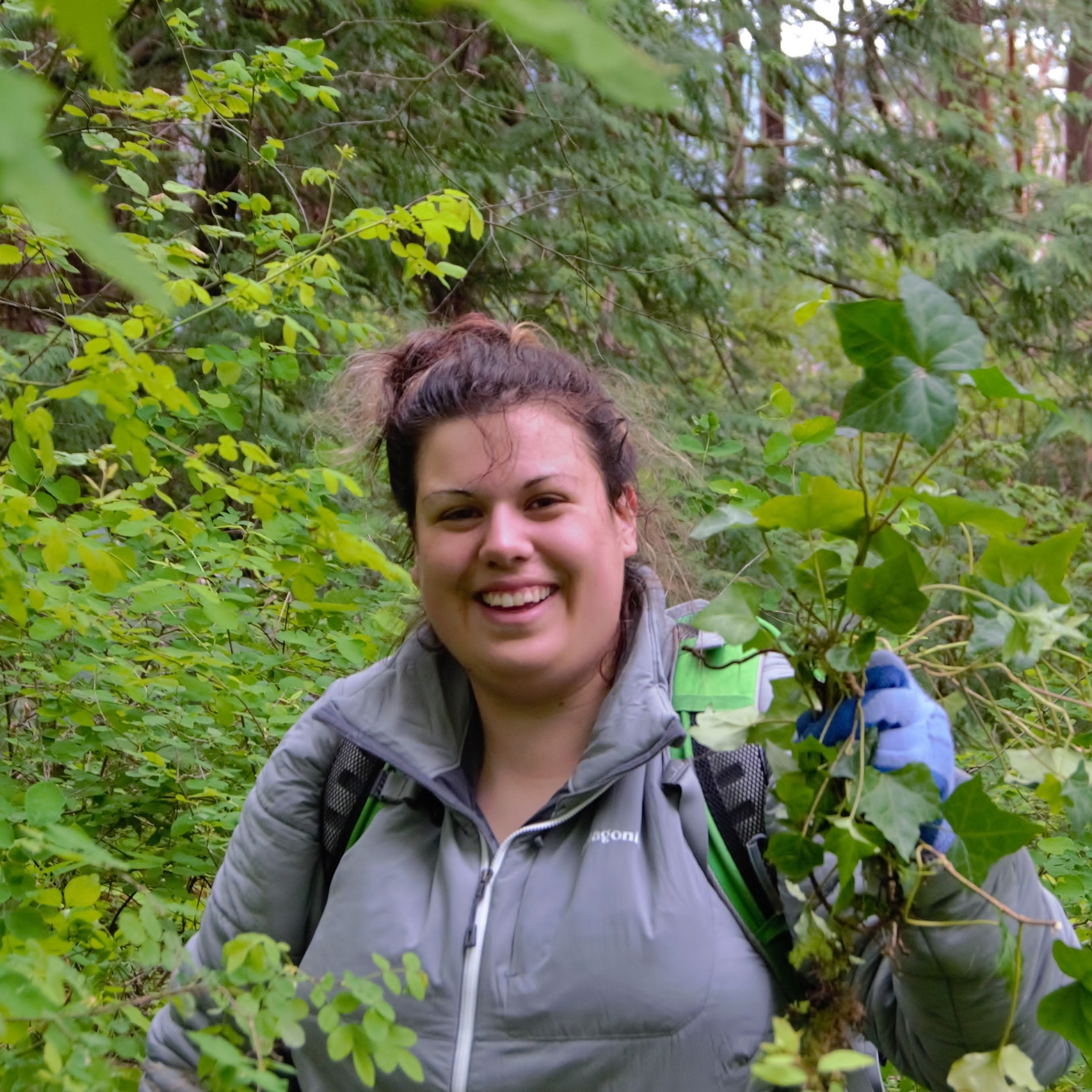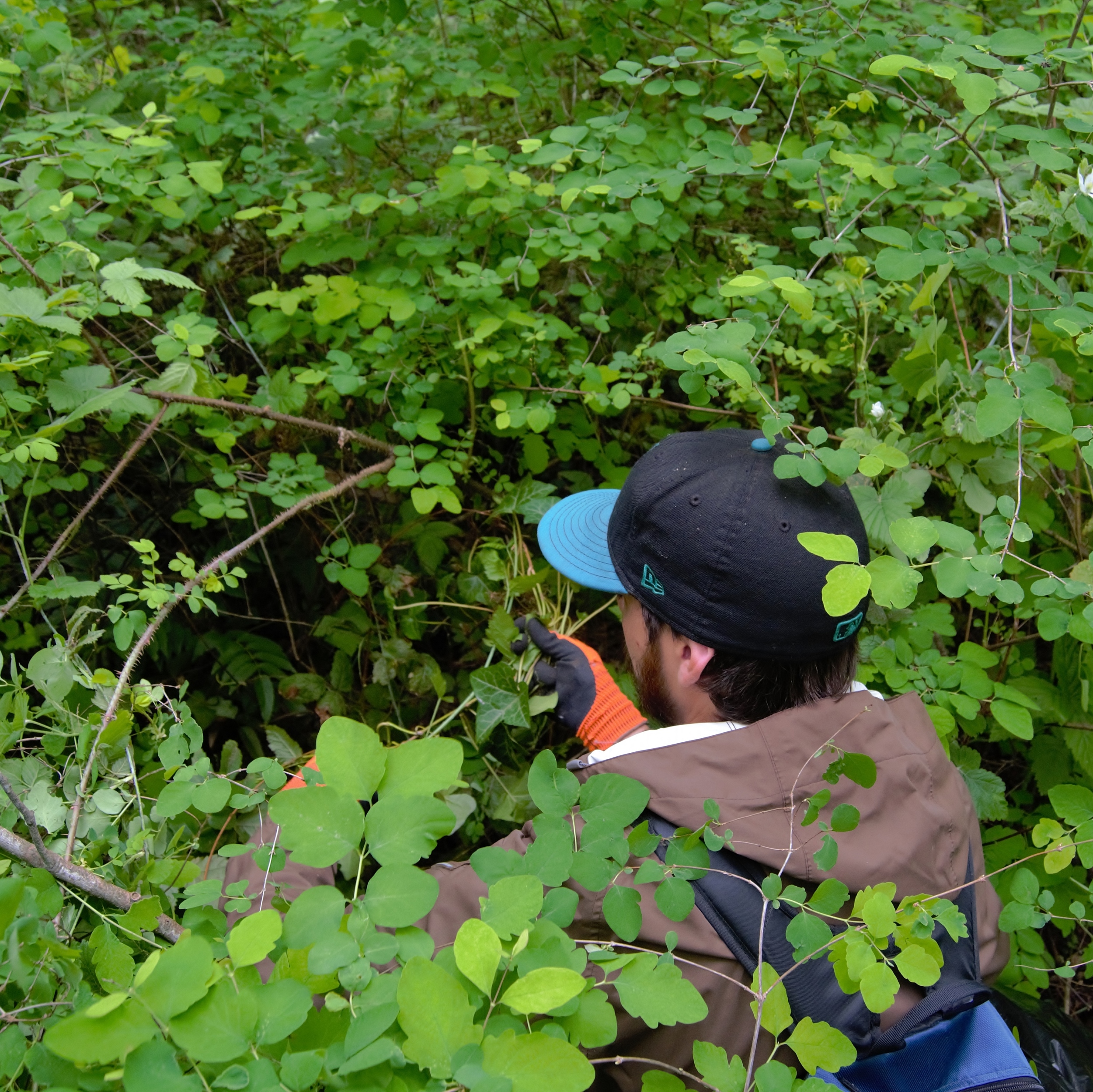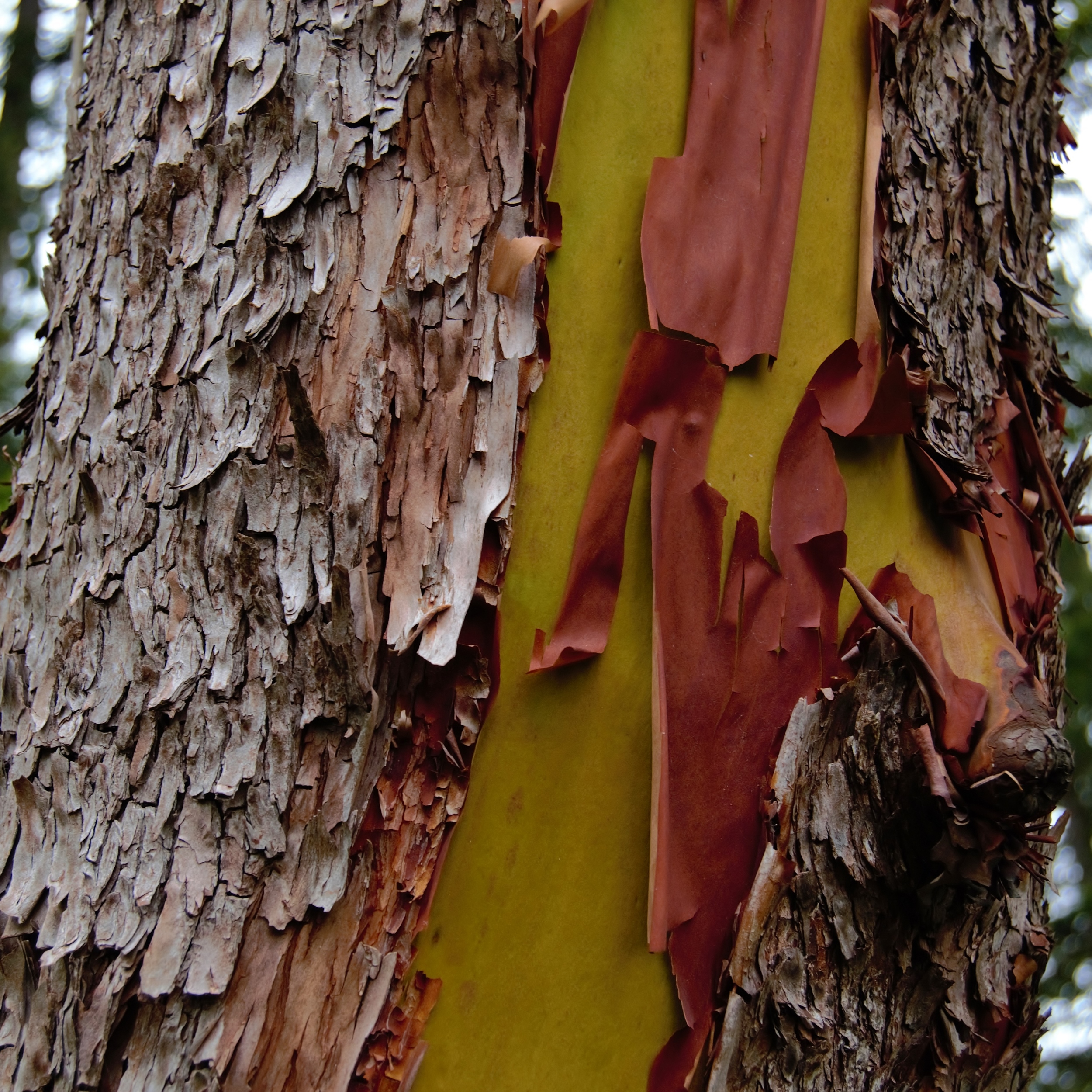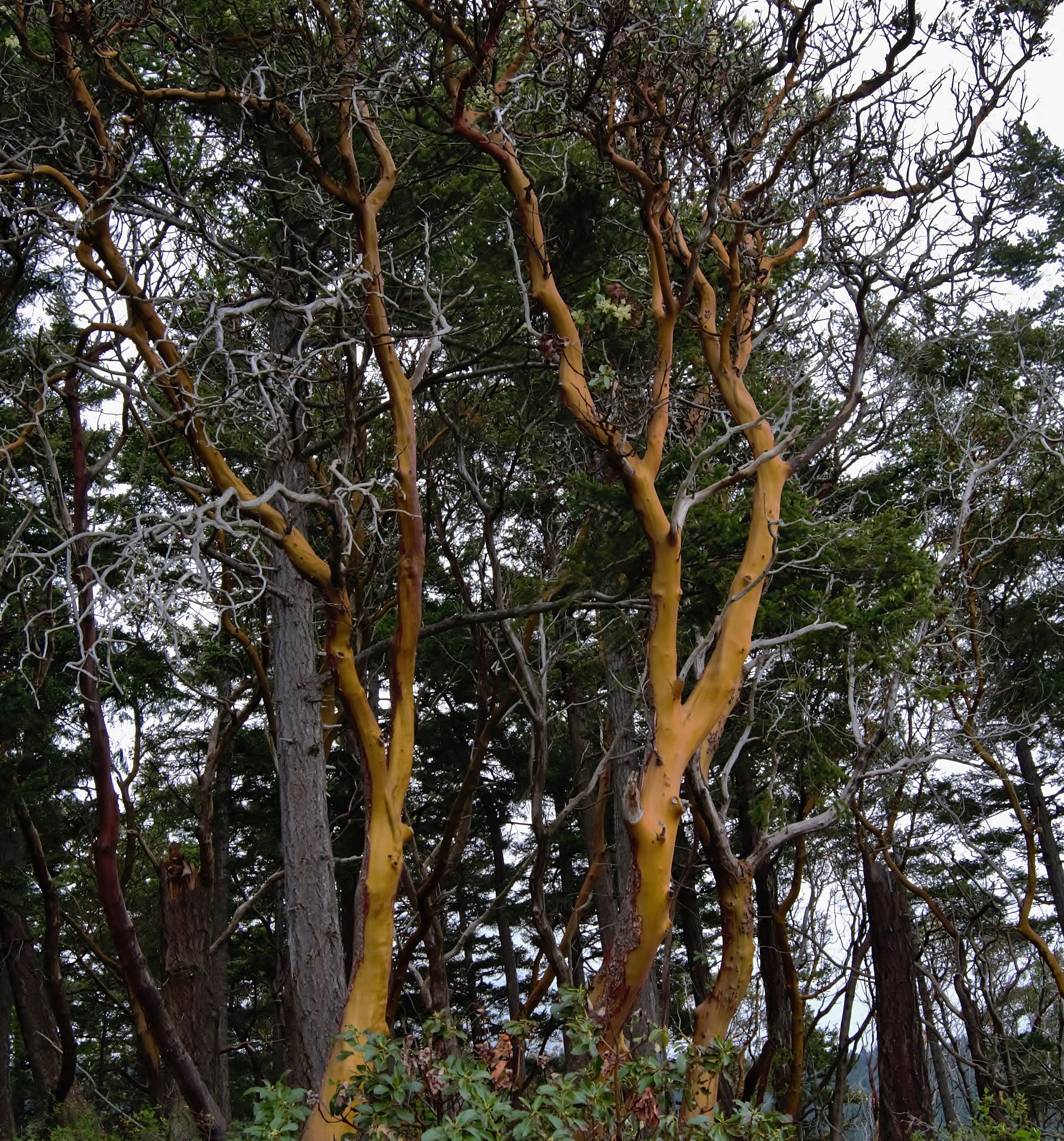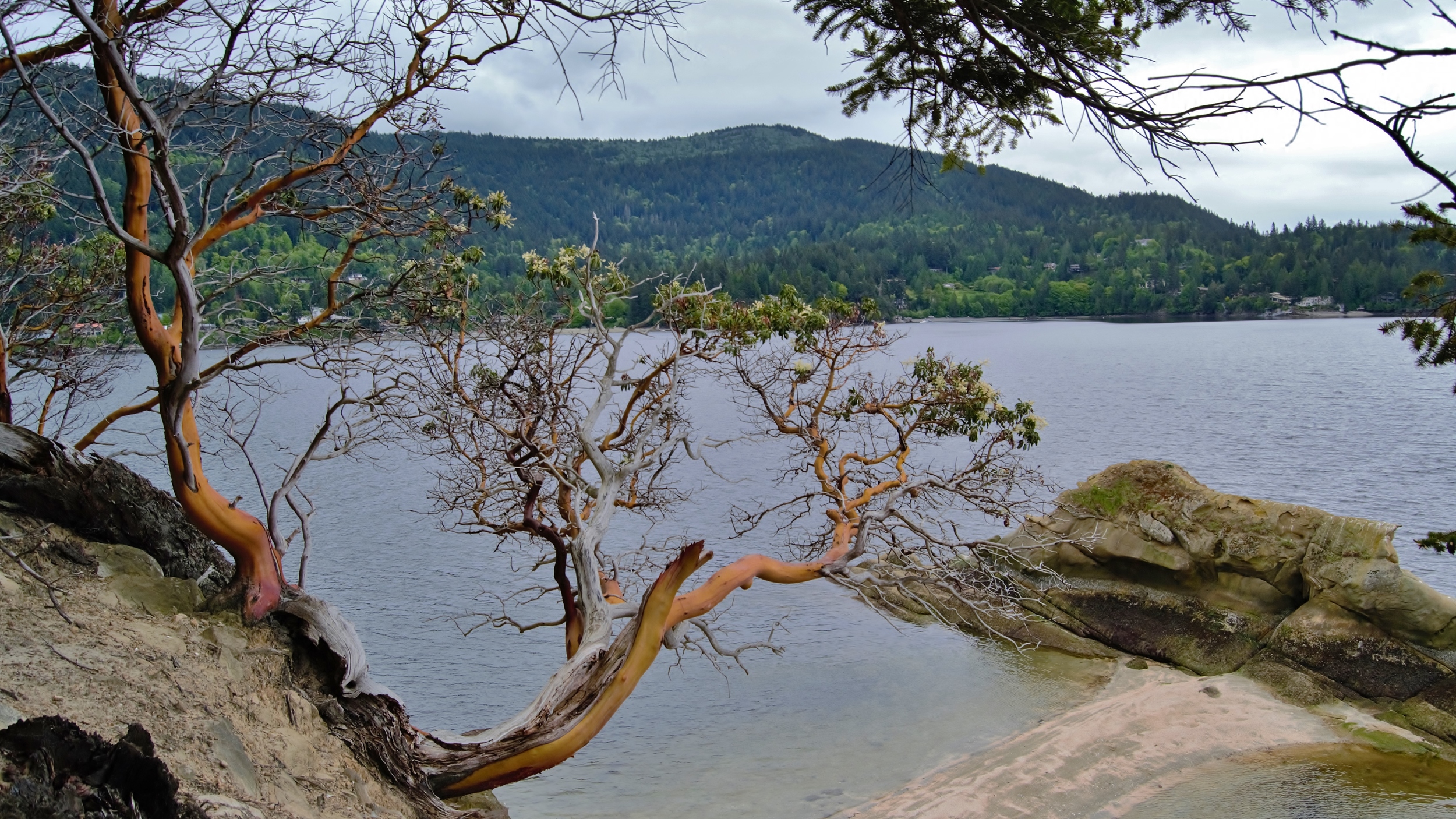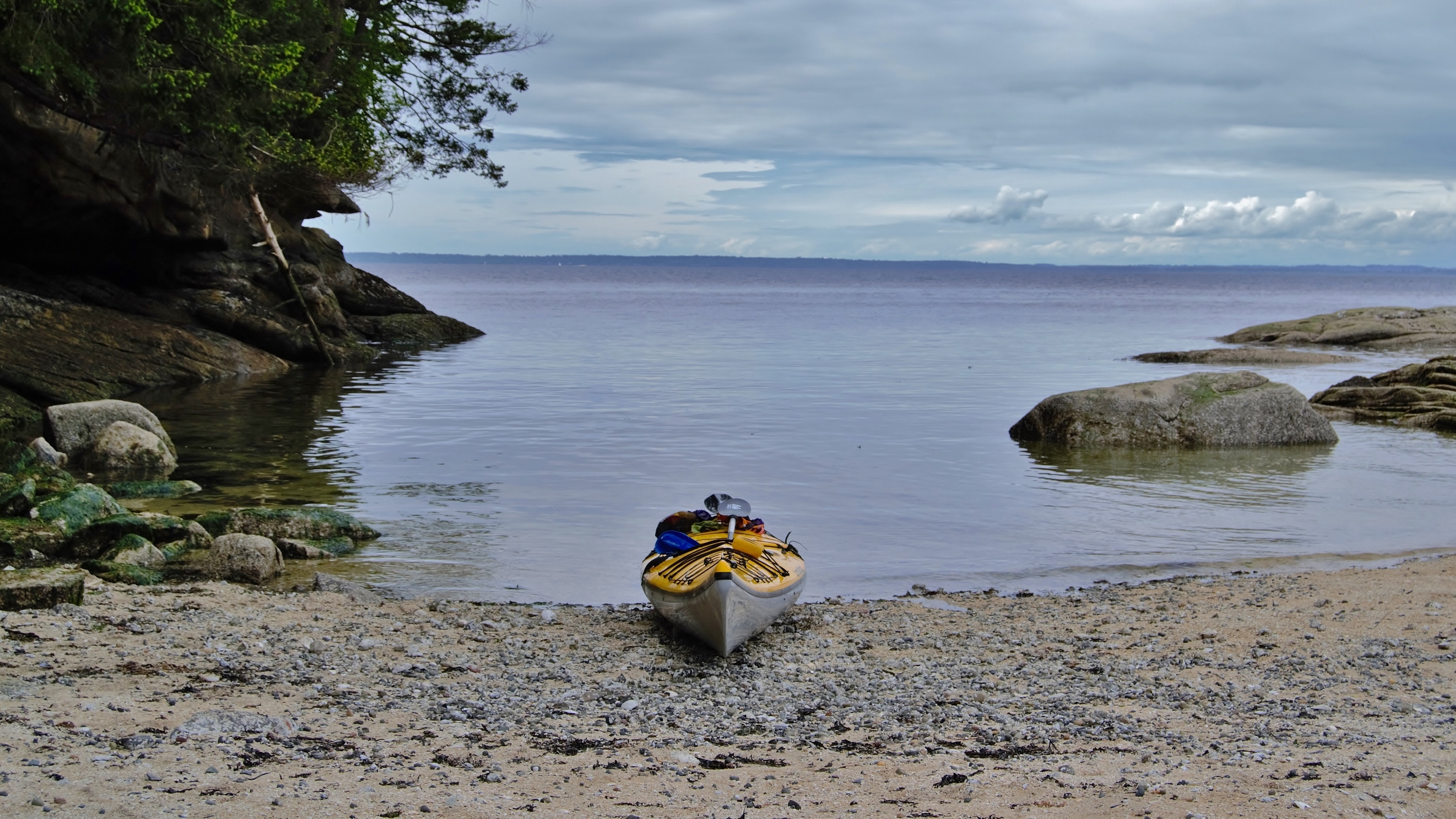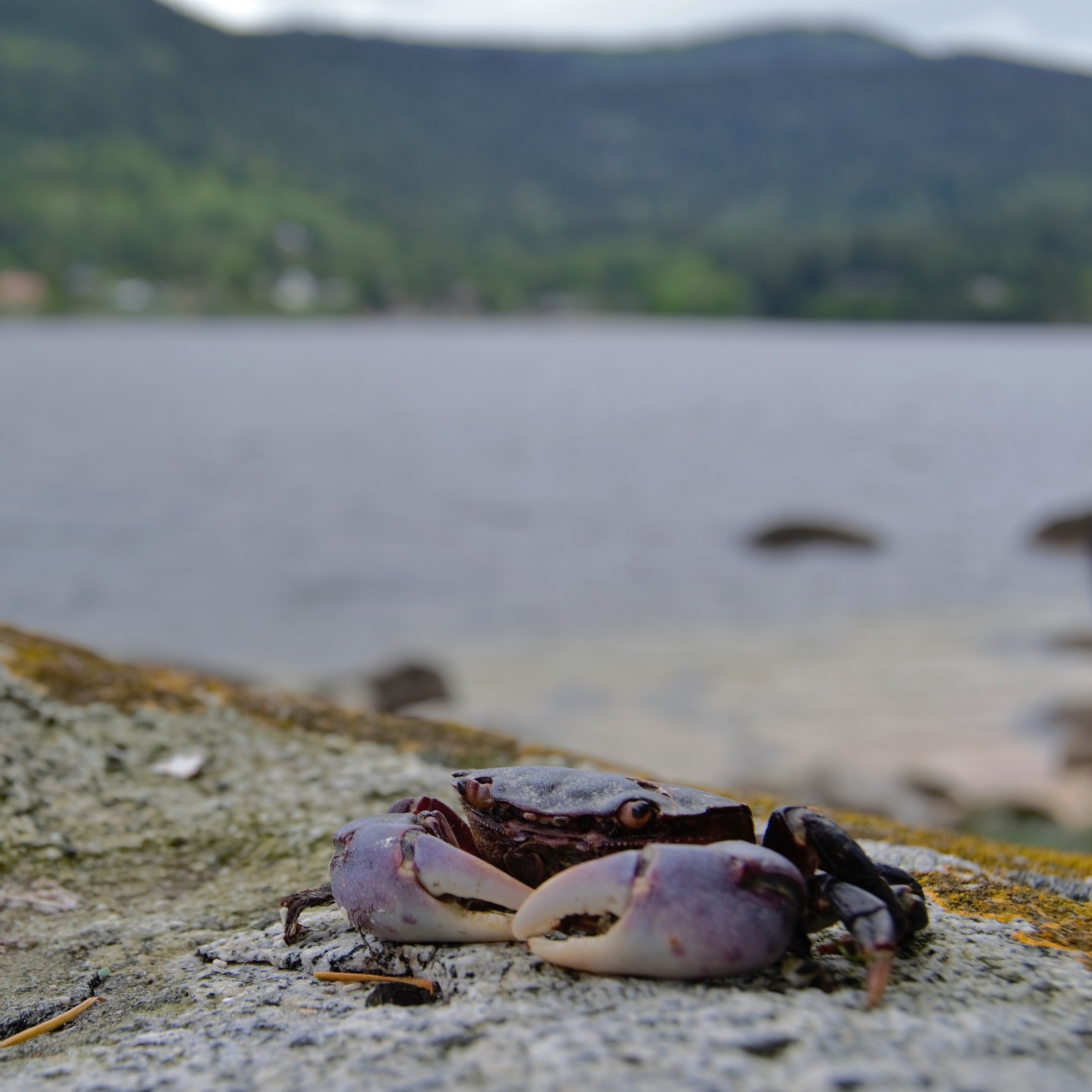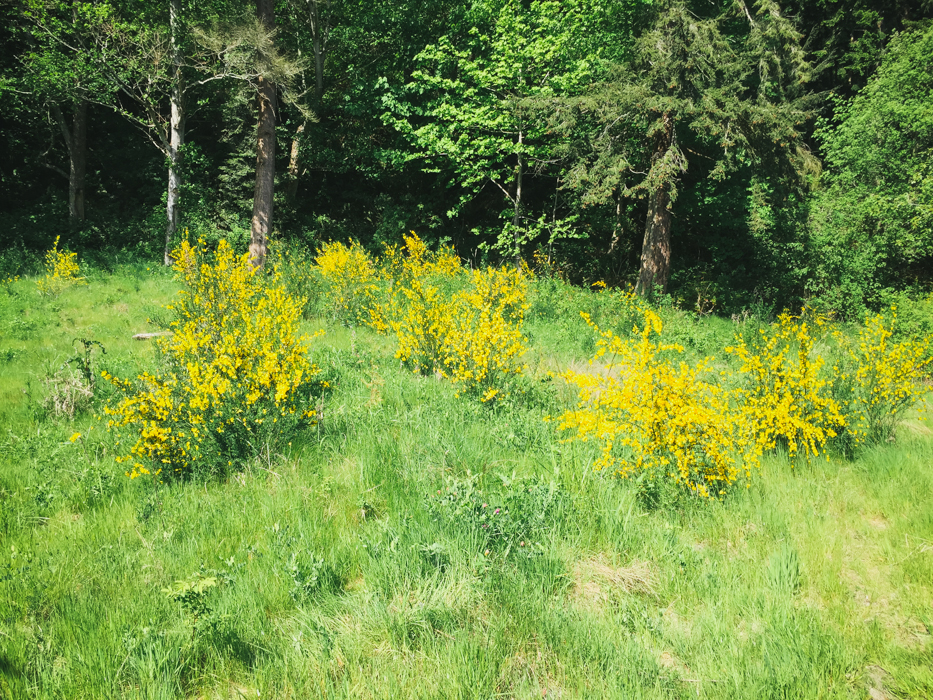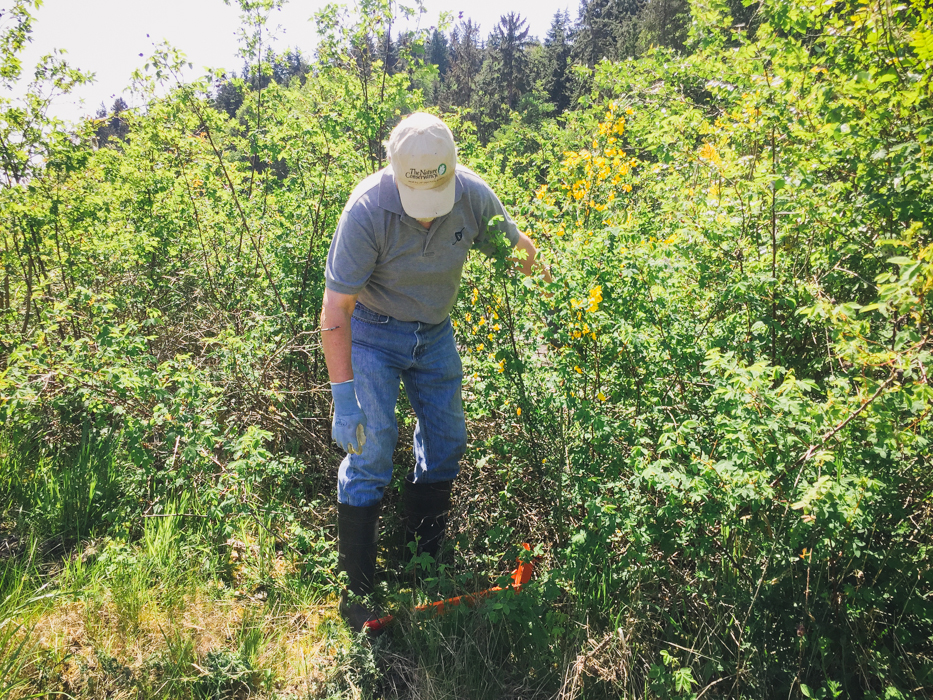Volunteers were treated to not only perfect weather, but also to an informative tour by our partners at Rock Point Oyster, sightings of porpoises, a bald eagle, and a great blue heron on this trip to pull invasive scotch broom.
November Volunteer Spotlight: Al Frasch
When I started in my job as Volunteer Coordinator almost 3 years ago one of my first goals was to meet all of our active volunteers. Many introductions were made by email which took a while for me to actually connect with some of these volunteers in person. For about 2 years I would receive an email every few months from one dedicated volunteer, summarizing the hours he had spent pulling scotch broom at our Ebey’s Landing Preserve on Whidbey Island. I was impressed by his hard work and determination to reduce the amount invasive scotch broom at the preserve. Al Frasch work on at Ebey's Landing was entirely self-motivated as I had not reached out to him or directed him to do participate in this work. He saw an issue, took matters into his own hands and did his part to help protect Ebey's Landing native landscape.
Now Ebey’s Landing is almost free of invasive Scotch Broom, and we have Al Frasch to thank. This is why we are highlighting Al in our November Volunteer Spotlight! Get to know Al in the interview below and read about his experience as a TNC volunteer.
The Nature Conservancy: What is your volunteer role? How long have you been volunteering with The Nature Conservancy? Do you volunteer anywhere else?
Al Frasch: In 2005, I was on a volunteer scotch broom pulling day up on Ebey’s Bluff on Whidbey Island. We were picking everything we could find from new shoots an inch high to three foot bushes. This was the second of my times doing this, with the volunteer times being two years apart. Well, I foolishly said ‘well to do any good, someone should come out several times a year to make sure that none of the plants ever go to seed again.’ I was looked at by the leader of the Conservancy volunteer group with the ‘well why don’t you do it?’ I was stuck! And since then, I have been out several times a year - monthly at first, three times a year lately. The problem has been reduced to the point where I am able to do the “job” in a couple of hours where it was once much longer.
I have volunteered for many TNC activities when I can. The most fun has been the many times that I have had the privilege of going out to Yellow Island - such a beautiful place! The limiting factor is that coming from Whidbey Island, it is a bit of a hassle just to get to some of the volunteer locations. I have done the 2 hour each way trip to Livingston Bay on three occasions, and have had a great time!
TNC: Where are you from? How long have you been living in Washington?
AF: I am a born and bred Washingtonian and have lived here for all but 4 1/2 of my 67 years.
TNC: Anything about your career or schooling you would like to share?
AF: After graduating as a proud Husky from the UW, I had the pleasure of being a middle school and high school mathematics teacher for 30 years and retired from Cascade High School in the Everett School District.
TNC: What inspired you to start volunteering with The Nature Conservancy?
AF: After retiring, I looked for an organization to volunteer for that represented my own views of how to make this world a better place. The first activity was a planting of native flowers on Ebey’s Bluff. I worked very hard and was hooked.
TNC: What gives you the most hope for the future?
AF: Don’t know if it will happen, but I certainly hope that our nation will wake up to the fact that we must confront the role that humans are having in the degradation of our environment and the changing climate. For some of our politicians to act as though global warming does not exist is short-sighted and on the same level as the tobacco companies who denied the effects of tobacco products so as to continue to make profits.
TNC: What's your favorite thing to do when you're not volunteering?
AF: I am an avid model railroader, with a very large layout in the basement and do volunteering at the local, state and national level to help promote the hobby as a great retirement activity. My train layout is known regionally and nationally, which is quite rewarding.
TNC: How does volunteering make you feel?
AF: Tired. But, seriously, I feel very good to see that pile of scotch broom that was pulled and knowing that I am making a difference. Also, I am asked by many people who are walking the Ebey’s Bluff trail - if you haven’t been there, do it! - what am I doing and what is that strange tool? The weed wrench does look a little weird, but after explaining what I am doing, it is nice to have almost everyone say ‘thank you’ for my efforts.
TNC: What is your favorite Nature Conservancy preserve or project?
AF: Yellow Island! Anything that I am asked to do, from planting to cutting weeds to stacking wood from the tree cutting once.
TNC: What do you think the world will be like in 50 years?
AF: Warmer, more crowded, but, hopefully, with both curves past the inflection point and under control.
TNC: Who is your environmental hero?
AF: Al Gore, the 43rd President. . . er, oops . . . anyway, because he has at least helped to highlight the problem we have with mankind’s heating of the world.
TNC: Have you ever convinced someone to do something they didn't want to do?
AF: Besides a hundred to hundred and fifty kids each day to do their homework? No, I try to inform people as to the facts and let them decide. In this post-factual climate, this is getting harder.
TNC: Is there anything you would like to see The Nature Conservancy doing that we are not already doing?
AF: TNC needs to create more “custodians” of areas like I do on Ebey’s Bluff. I think that my 10+ years have shown the positive effect of having someone local to go out several times a year to work on their own time. Much more flexible for the individual and they can get a better handle on the situation than a group coming out every couple of years. I know very precisely where to look and how far down that darn hillside I need to go. Now if those seeds weren’t viable for so many years!
TNC: Keep up the great work Al! We definitely want to recruit more volunteers like you. And we would love to see that model train setup!
Volunteer Stories: Supporting the Pacific Northwest
Written by Jill Irwin, Volunteer
Photo Credit: Milo Zorzino
With explosive growth in the Pacific Northwest—especially in Seattle and Portland—more and more people are adding to the stresses on our rich and complex natural environment. How about pitching in to help keep this place beautiful and restore damaged habitats?
Recently a group I'm involved with spent part of a day volunteering with the Nature Conservancy at one of their sites in the Puget Sound region. (One of the cool things about helping out the Nature Conservancy is that their sites are often scenic and rarely open to the public. Hence, no crowds.)
On a breezy Sunday morning, about 10 of us, an eclectic collection of Zen Buddhists, a retired teacher, father and son duck hunters, conservation biologists, and more, met up near and carpooled to a private property to access the Livingston Bay Pocket Estuary site on Camano. Our goal for the day: pull invasive Scotch broom, which changes the chemical composition of soil and crowds out native plants.
Our Nature Conservancy coordinater for the event, Lauren Mihel, gathered us in a circle for introductions before heading down through the woods to the beach.
"What's your name and what are you excited about for fall?" she asked as an ice breaker.Our responses varied from "making soup again", "fall colors," "cooler weather and rain," and mine: "hiking to see the golden larches." Then we headed down to the estuary with tools for uprooting the Scotch broom and big plastic bags for picking up trash.
We spent a few hours uprooting most of the Scotch broom we could spot, and some of us walked the beach looking for trash.
On the outside of the pocket estuary, exposed to the ebb and flow of the tides, a lot of trash had washed up—plastic bottles, plastic lighters, plastic bags, a few stray shoes, old tires, bits of plastic, and even a big plastic trash can.
I filled a big bag until it got too heavy to squeeze in anything else. Sadly, this much trash, predominantly plastic refuse, is now common, even on wilderness beaches and shorelines. So there are plenty of opportunities to help clean up on your own, too.
We finished up a bit earlier than the allotted time, and gathered for Lauren and fellow coordinator Joelene Boyd to talk a bit about the site, ongoing restoration efforts here that began in 2012, its value as refuge for juvenile salmon, and the Nature Conservancy's programs in general. It's all part of a larger restoration effort in the area.
In a sweet gesture, Lauren passed around tins of excellent chocolate chip cookies she made for the group. And of course it was a beautiful, peaceful place to spend several hours on a sunny Sunday.
Overall it was a thoroughly enjoyable and rewarding day well spent. I met good people, got better acquainted with people I already knew, felt a sense of accomplishment, was outside moving in fresh air, and learned more about our precious Salish Sea ecosystem.
While there are many options for volunteering with the Nature Conservancy, there are lots of other organizations that could use your help too. Here are a few:
The U.S. Forest Service in the Pacific Northwest needs volunteers for many things such as trail maintenance and youth programs.Conservation Northwest has many volunteer needs for things like monitoring wildlife and planting native trees. EarthShare Washington and Oregon have a variety of volunteer and organizational needs. Portland Audubon and Seattle Audubon have active and well-organized volunteer programs. Sierra Club offers lots of ways to get involved. Washington Trails Association has regular work parties. The Portland-based Mazamas has lots of volunteer needs.
I could go on and on, although time doesn't permit it right now. Maybe you would like to suggest some ways to volunteer and your favorite environmental organizations by leaving a comment below! Or let me know if you'd like me to contact you with more ideas. Because it's important!
The Volunteer Crew
Seattle-born Jill Irwin blogs about the environment and everyday adventures in the Pacific Northwest. Read more of her stories on her blog Pacific Northwest Seasons
Pickleweed in a Pickle at Dabob Bay
Written by Joelene Boyd, Stewardship Coordinator, Puget Sound Program
Photographed by Milo Zorzino, Volunteer Photographer
While visiting the Dabob Bay conservation easement this past month I noticed something I had never seen before. At first I mistook it for a plastic oyster bag that was degrading, then I noticed more and more patches along the spit and it was only present in the pickleweed (Salicornia). Pickleweed is a native saltmarsh succulent plant that can withstand and grow in high salinity conditions.
Pickleweed (Salicornia) at Dabob Bay © Joelene Boyd
A volunteer and I decided to take a break from easement monitoring photos and get a closer look. “It looks like silly string,” we said to each other. Upon further inspection and some prodding we discovered that it was plant-like and when breaking it apart it felt like we were snapping tiny roots. One of the volunteers in our group knew exactly what it was – dodder. Its unimpressive name sells this parasitic plant short of its tenacity and impact. Dodder is a leafless and rootless filamentous plant that gets nutrients and water from host plants (in this case pickleweed) by wrapping itself and becoming intertwined to the host plant. Morning glory is a close relative of dodder which gives an indication of how persistent it can be. Once we realized what it was we noticed there were discrete patches of dodder along the eastern side of the spit. Since dodder is a native to this type of environment there is no plan to control it but it does raise a good and age old question, especially if you are a pickleweed at Dabob Bay – when is a weed a weed?
Besides discovering a cool new plant at the Long Spit easement in Dabob Bay 8 volunteers along with Melissa Watkinson and Kara Cardinal helped out to remove Scotch broom and pick up garbage along the spit. After we finished representatives from Rock Point Oyster gave us a tour of their oyster production facility.
LEARN HOW YOU CAN BE A VOLUNTEER
Chuckanut Island Ivy Pull
Written by Ann Frost, Wild Whatcom’s Girl’s Explorer’s Club
Drawing by Clara Johnson, Wild Whatcom’s Girl’s Explorer’s Club
Photographed by Milo Zorzino, Volunteer Photographer
A mother goose sitting on a nest of eggs, brilliantly colorful starfish on the rocks, dozens of beautiful madrona trees, sandstone carved into patterns by the water, and heaps of shells from natives who lived hundreds of years ago. These are only a few of the amazing things we saw on an expedition to Chuckanut Island with my Girls Explorers Club group from Wild Whatcom, an organization devoted to outdoor exploration and service. We also saw some things that weren’t so great, that shouldn’t have been there: bird skeletons caught in fishnets, a bit of litter and garbage on the beaches, but most of all we saw invasive ivy, and that’s why we were there. The Nature Conservancy gave us a great chance to help preserve Chuckanut Island, an amazing little bit of the natural world.
Chuckanut Island is about five acres, a small island in Chuckanut Bay. Despite the fact that you can hear trains passing on the mainland and houses line the bay in most directions, it still feels like wilderness. A few unmaintained trails trace the edge of the island, and trees over 250 years old host the nests of eagles and herons. Cliffs of sandstone are covered in beautiful swirls and dips, and are dappled with honeycomb patterns sculpted by the sea over centuries of tides going in and out.The very first people on the island, tribes of native Americans, used it seasonally, and left behind are large middens of oyster shells.
We met with community volunteers and a few staff from the Nature Conservancy and took a small motorboat out to the island. We spent 4+ hours on the island, exploring and pulling invasive ivy. For years now, Wild Whatcom has taken groups out to the island, but there’s always more ivy to pull. Ivy and other invasive plants work against the natural biodiversity and can overwhelm native plants, so it’s very important that we devote some time and effort into pulling invasive plants like ivy.
The hours that we spent on the island helped all of us to connect to nature in a very rare and beautiful way. Knowing that we were making a difference and helping the world around us even in a small way was an amazing experience. I, and many others, walked away with a satisfaction and hope that had been lacking beforehand. Thank you so much to the Nature Conservancy for giving us such an amazing chance to connect with and help conserve nature.
In celebration of Earth Day, volunteers came to pull invasive ivy that has started to spread on the island, in order to maintain its nearly pristine conditions. This preserve features intertidal habitat, a wooded trail, and beautiful madrone trees on sandstone cliffs. See more from the day in the slideshow above!
LEARN HOW YOU CAN VOLUNTEER!
Weed Warriors descend on Livingston Bay Preserve
Removing Invasive Scotch Broom
Photographed and Written by Joelene Boyd, Stewardship Coordinator for the Puget Sound Program
This past weekend four fabulous volunteers dedicated a Saturday to help remove Scotch broom at The Nature Conservancy’s Livingston Bay property. When we first arrived at the site the volunteers were somewhat overwhelmed by the Scotch broom to be removed. However they wasted no time at all rolling up their sleeves, putting on gloves and started working. With some hard work, sweat and good cheer the results were tangible and immediate.
What is Scotch broom? It’s a noxious weed / shrub that grows from about 3 to 10 feet tall (although I’m sure we removed some larger than that). It’s got bright yellow flowers this time of year and if you travel along Interstate 5 it would be hard to miss.
Why is Scotch broom control necessary? It’s like most noxious weeds and invasive plants, it grows aggressively and prolifically choking out and outcompeting native plants that provide essential habitat of wildlife species. The seeds are long lasting and remain viable in the soil for 30 - 80 years.
Where is it from and how did it get here? Scotch broom is originally from the British Isles and Central Europe. It was introduced in the mid-1800s as an ornamental plant and planted in places that were prone to soil erosion.
What you can do to help control it? There are a variety of control techniques from herbicide to biological controls to manual removal. However as one of the fabulous volunteers pointed out this past Saturday, consistent and dedicated manual removal multiple times a year before plants set seeds will lead to successful results.
It is always a pleasure working with volunteers but these four were inspiring. One volunteer regularly patrols her neighborhood for weeds in Seattle removing ivy, blackberry and other weeds in common green areas as well as removes litter – taking care of her community. Another gentleman is a regular volunteer at The Conservancy’s Ebey’s Landing Preserve and has contributed so many hours that he is now keeper of The Conservancy’s weed wrench (special tool for removing Scotch broom). Their commitment and dedication to conservation is motivating! Thank you!
























